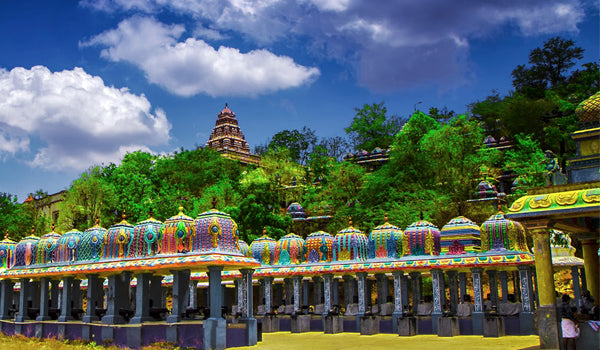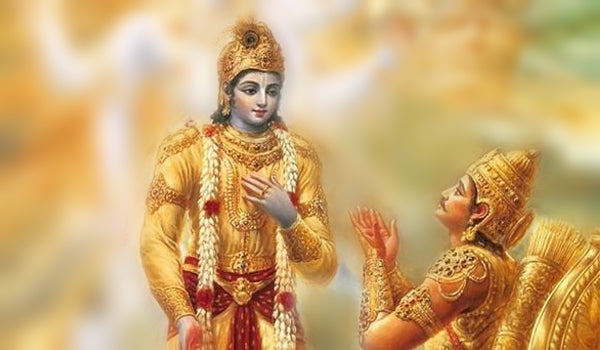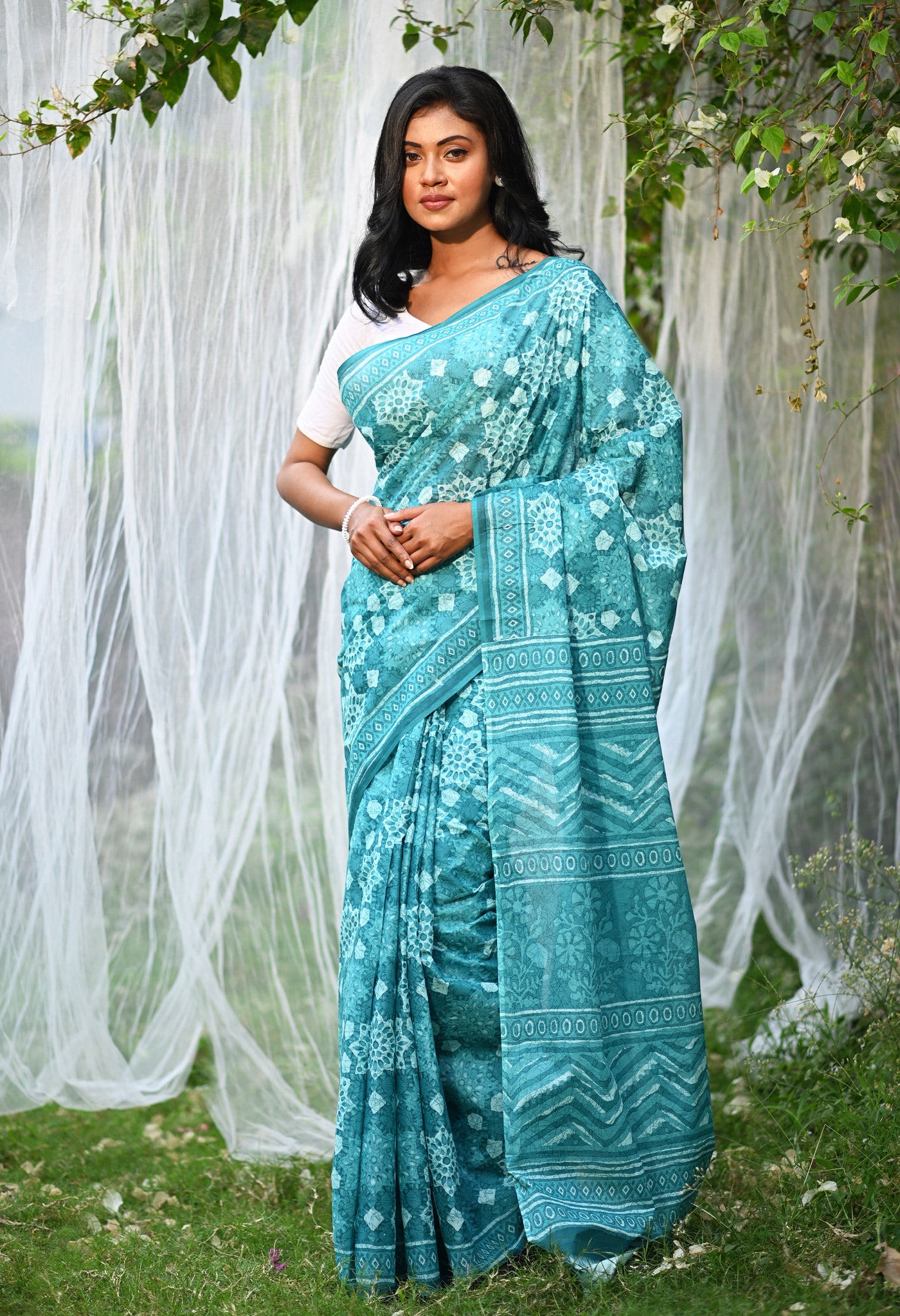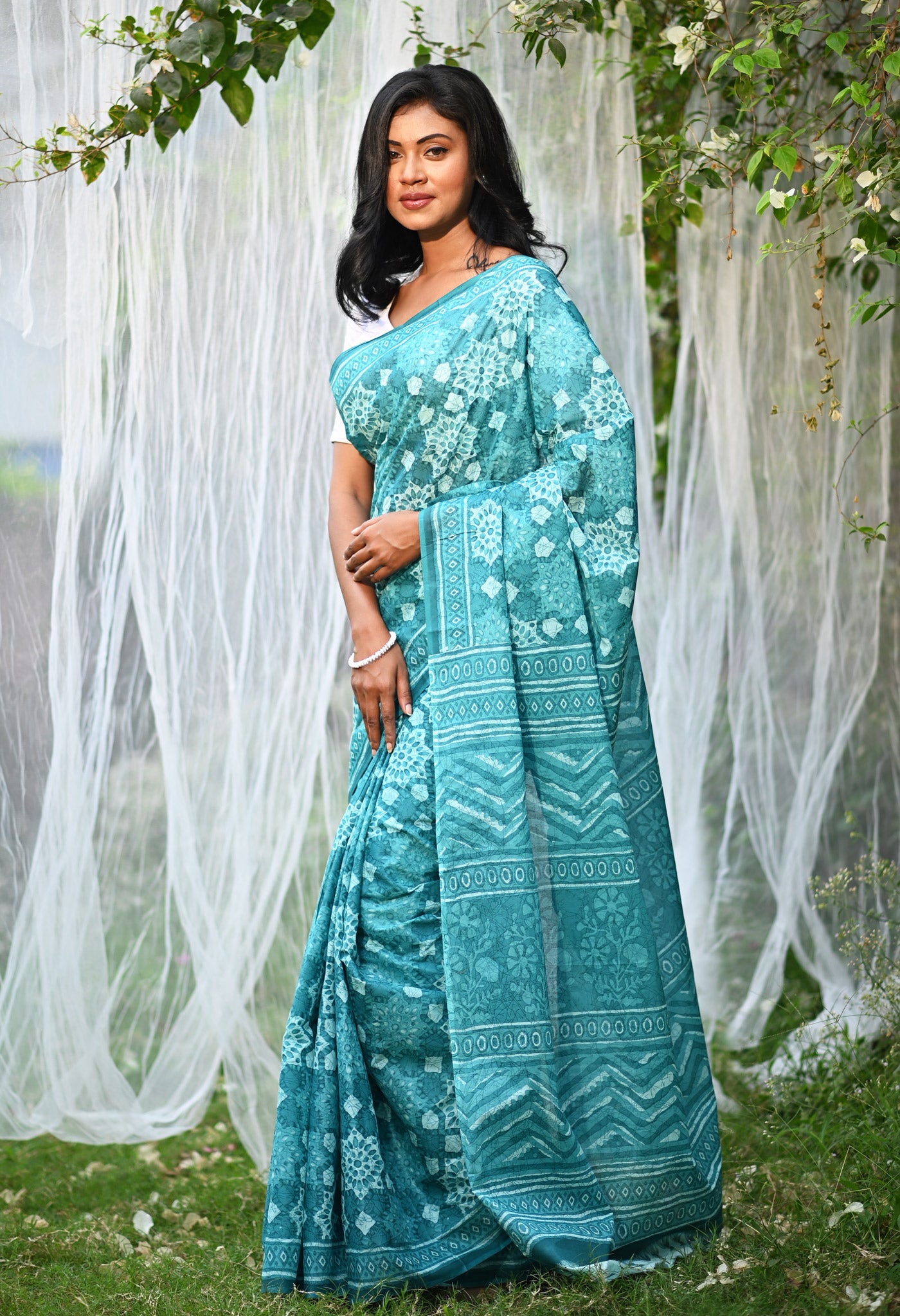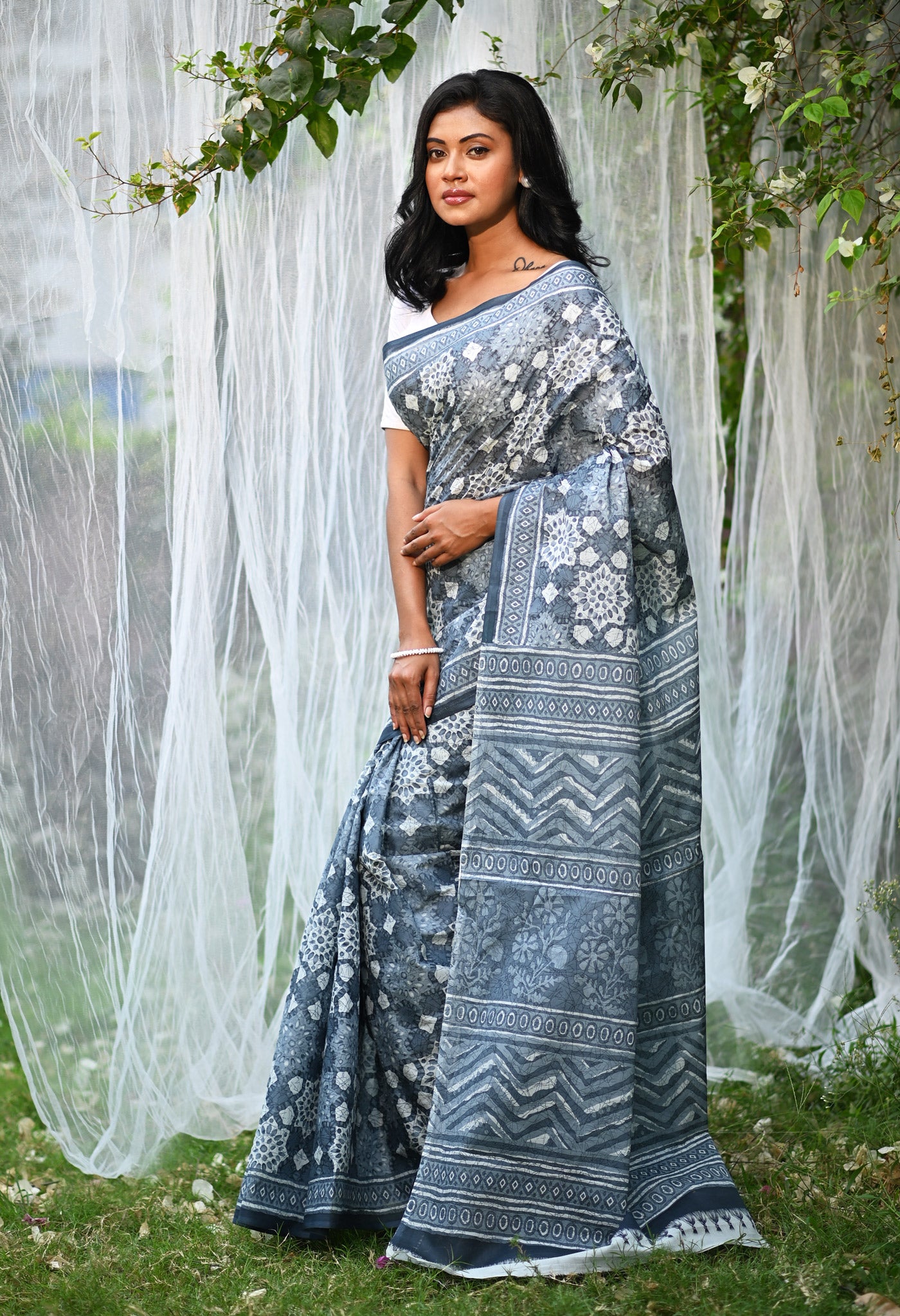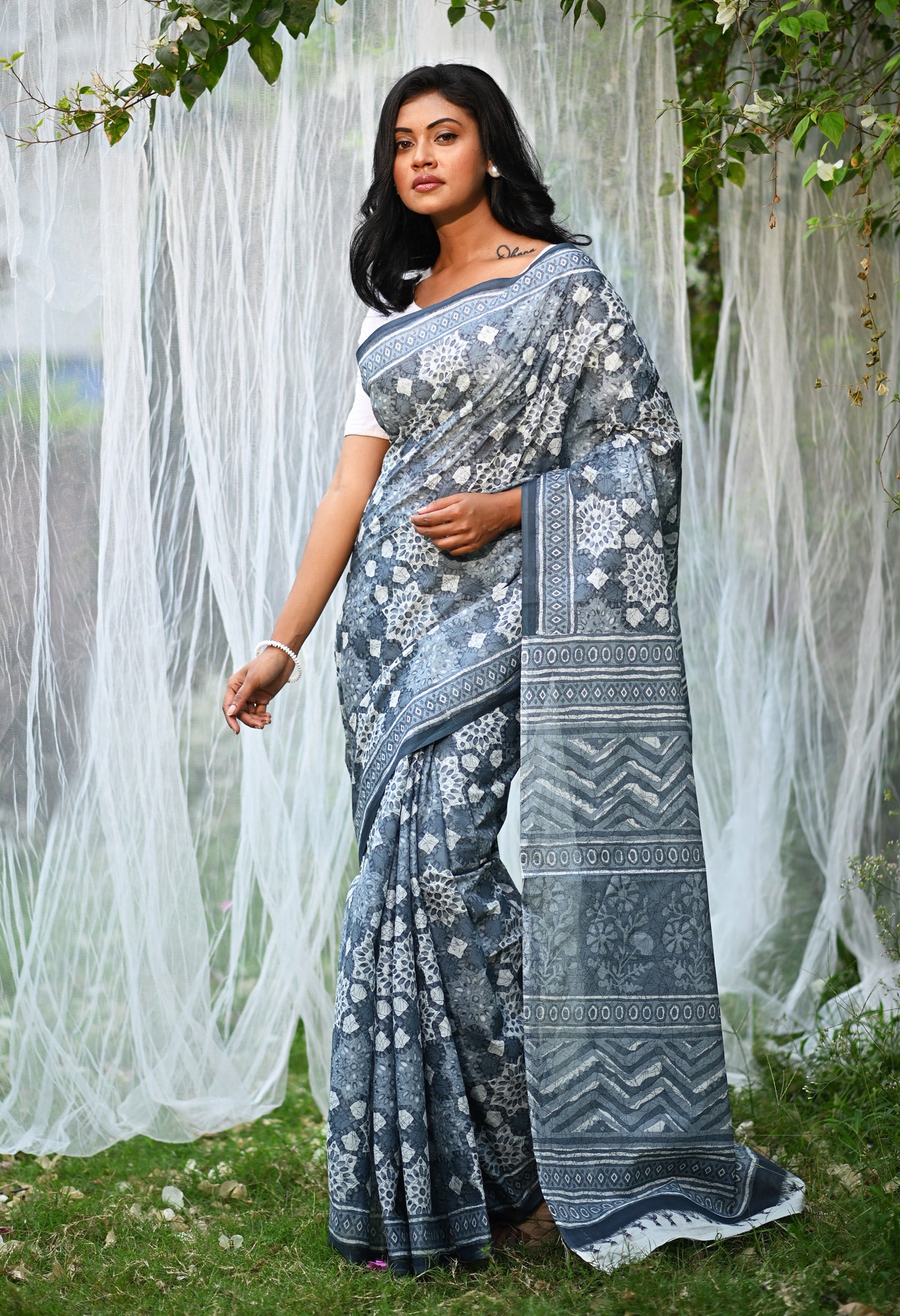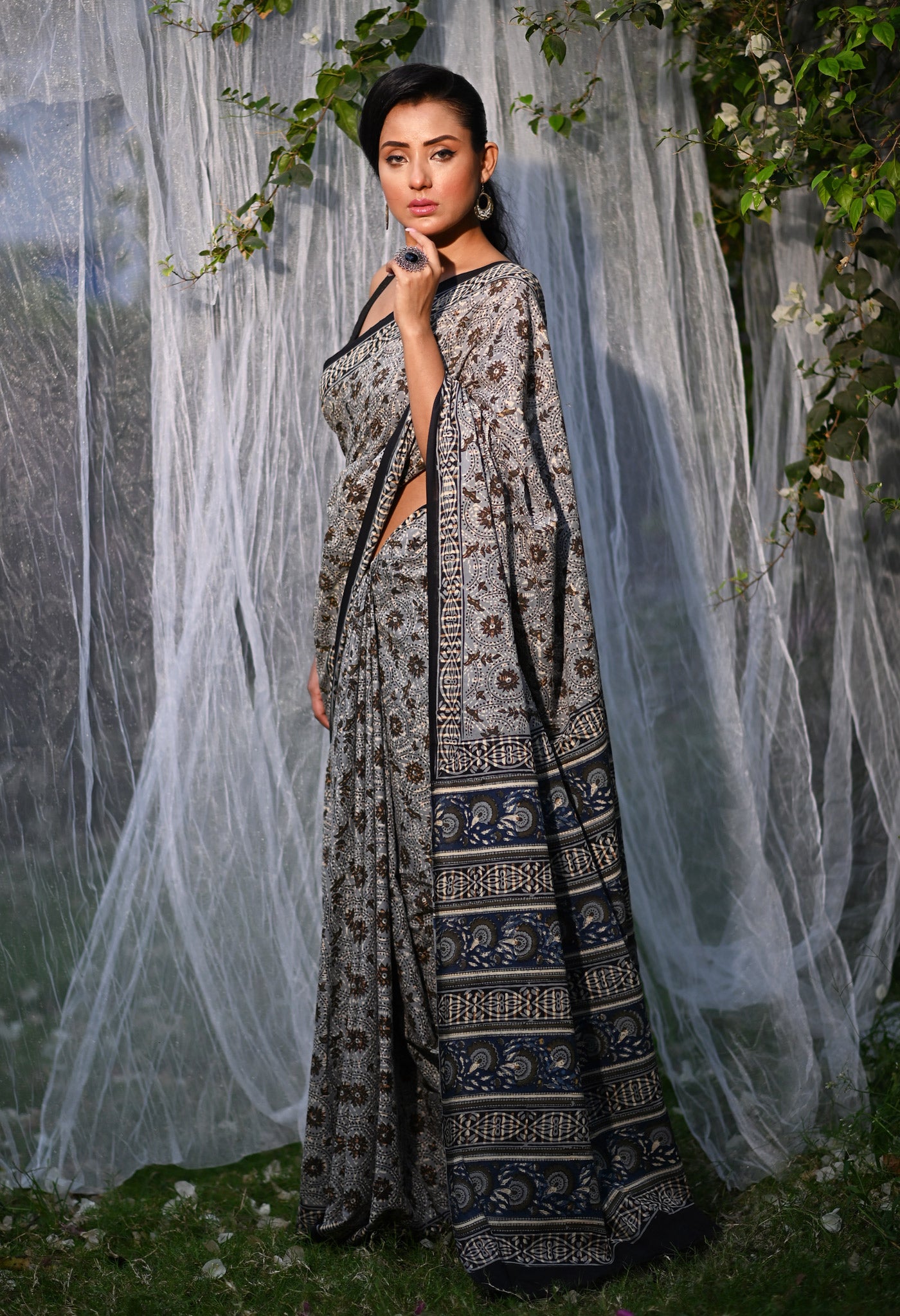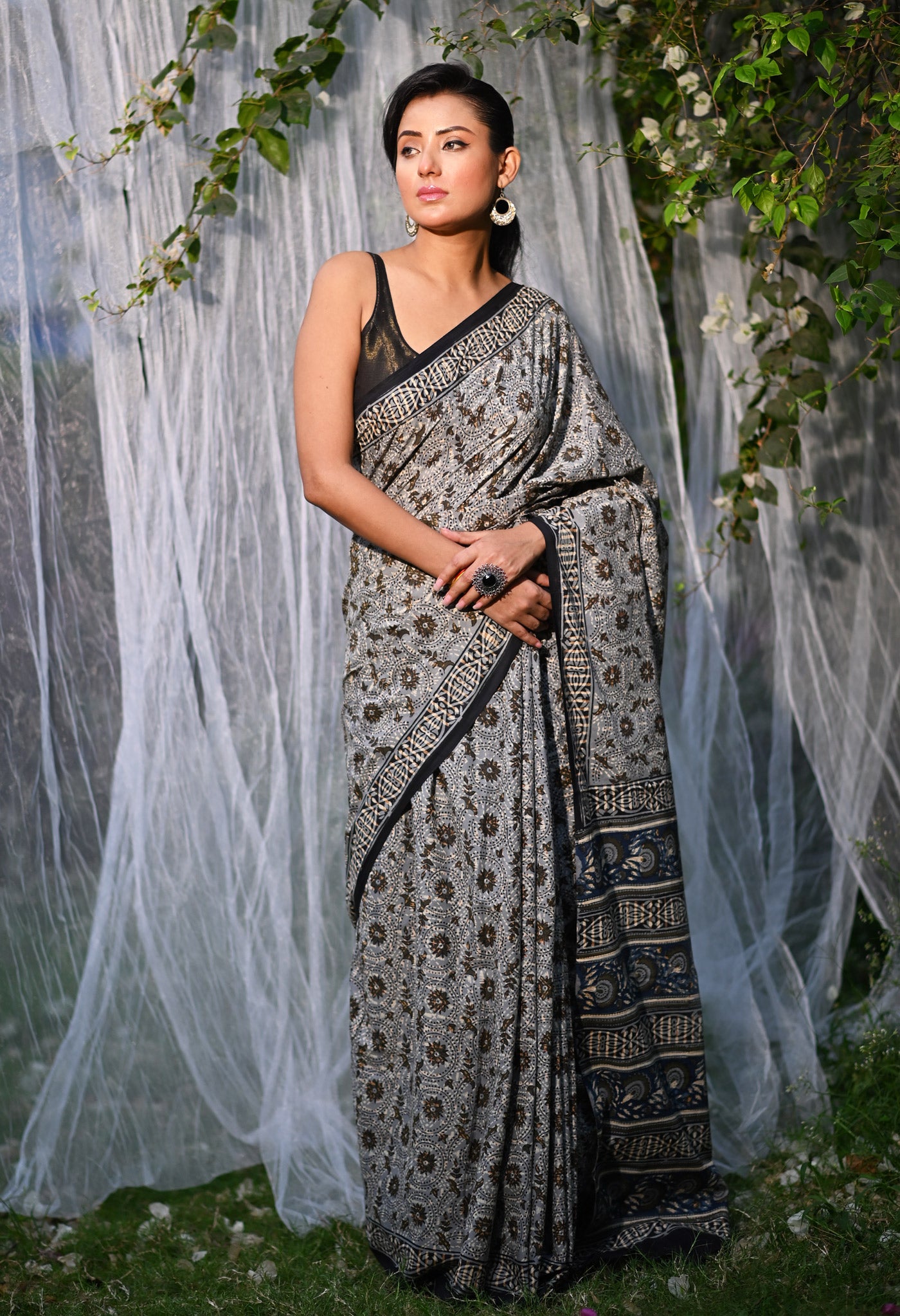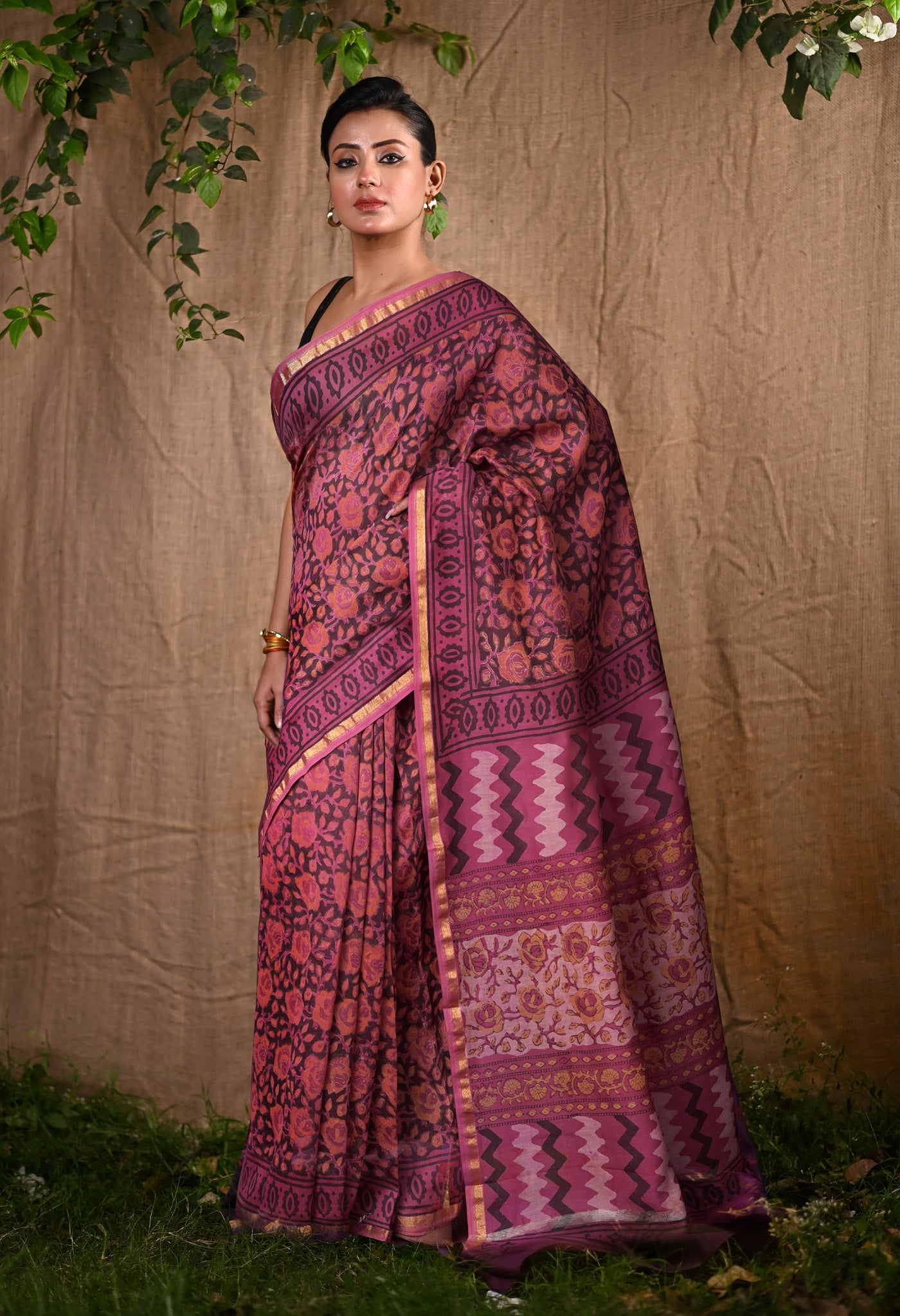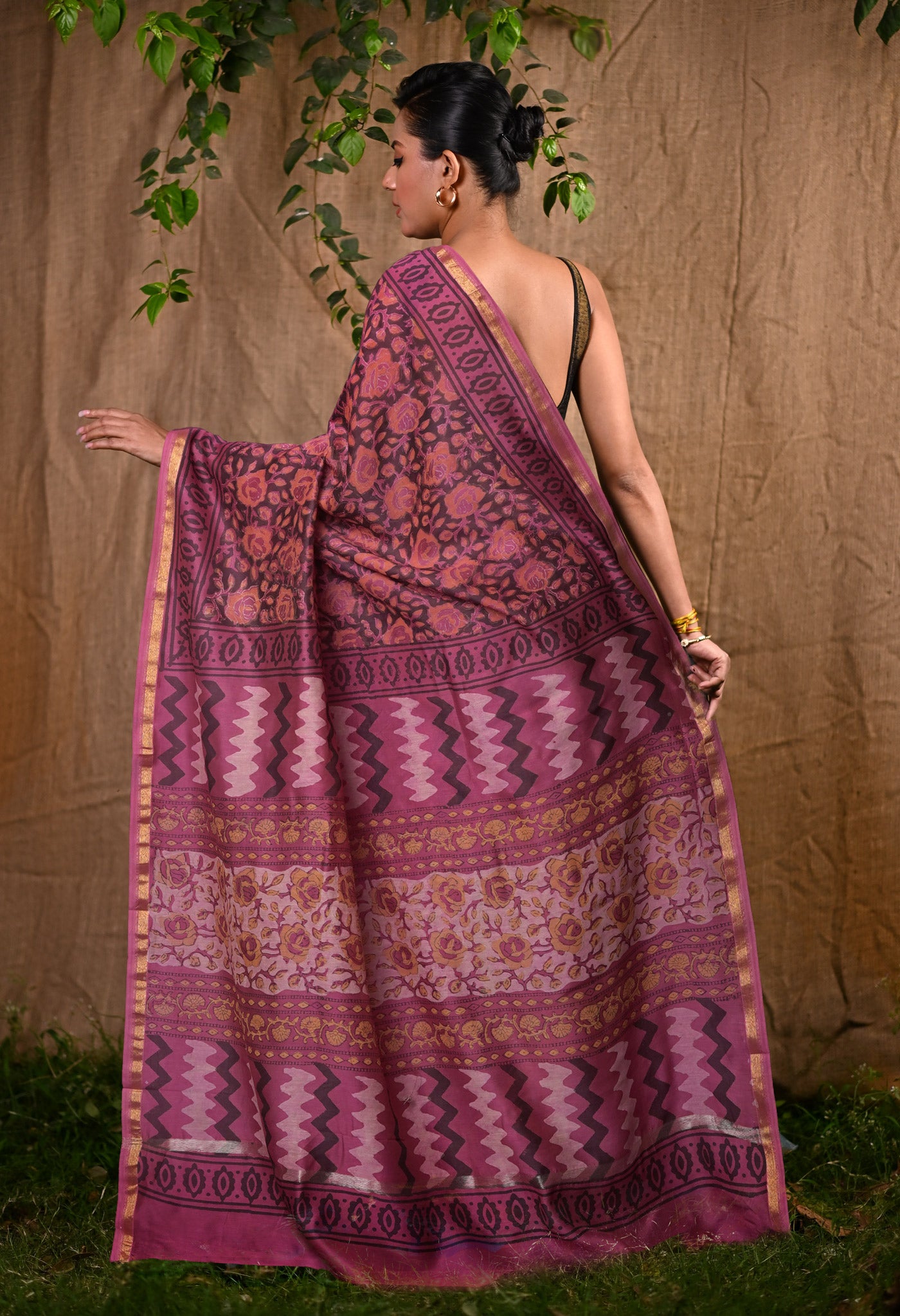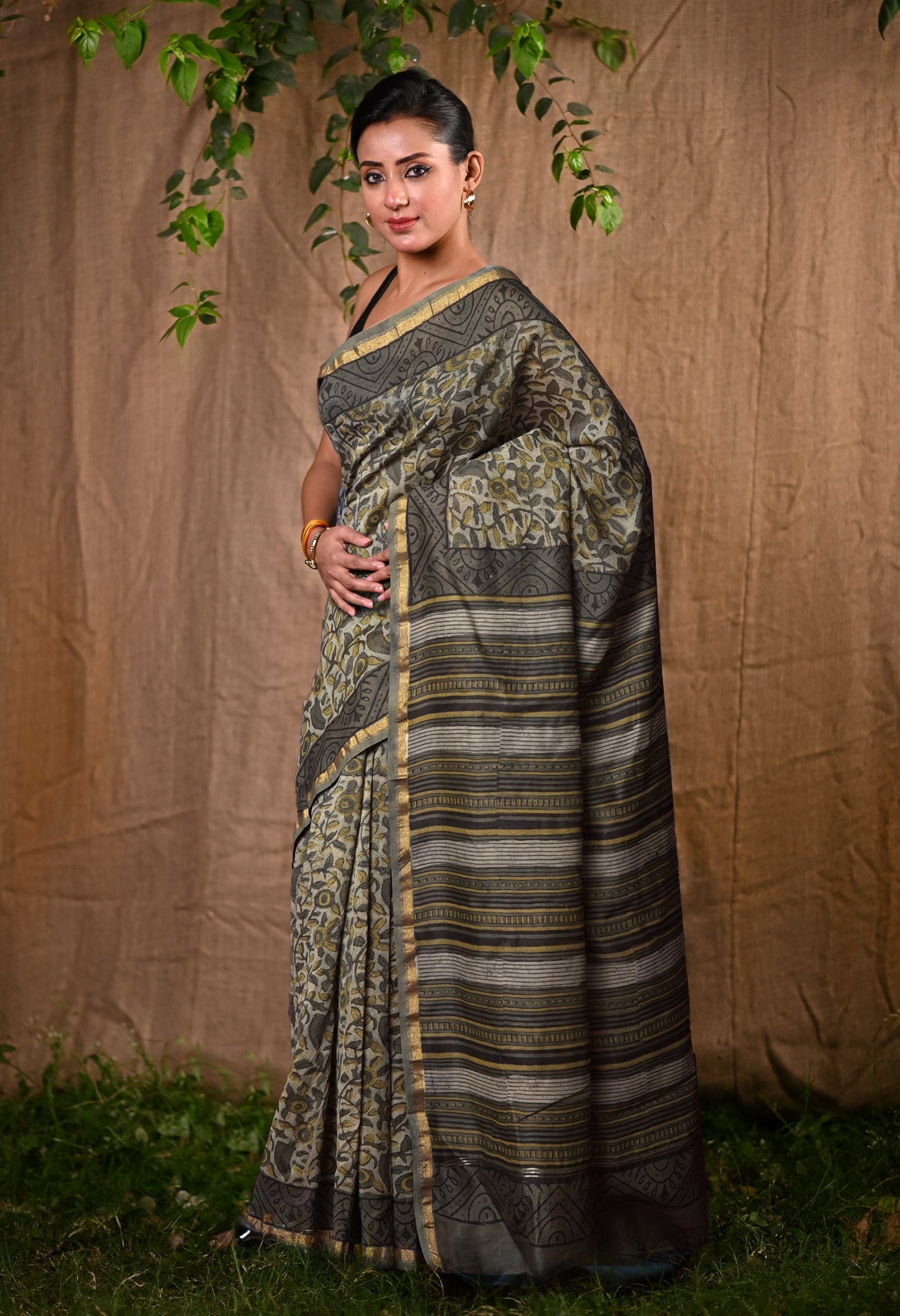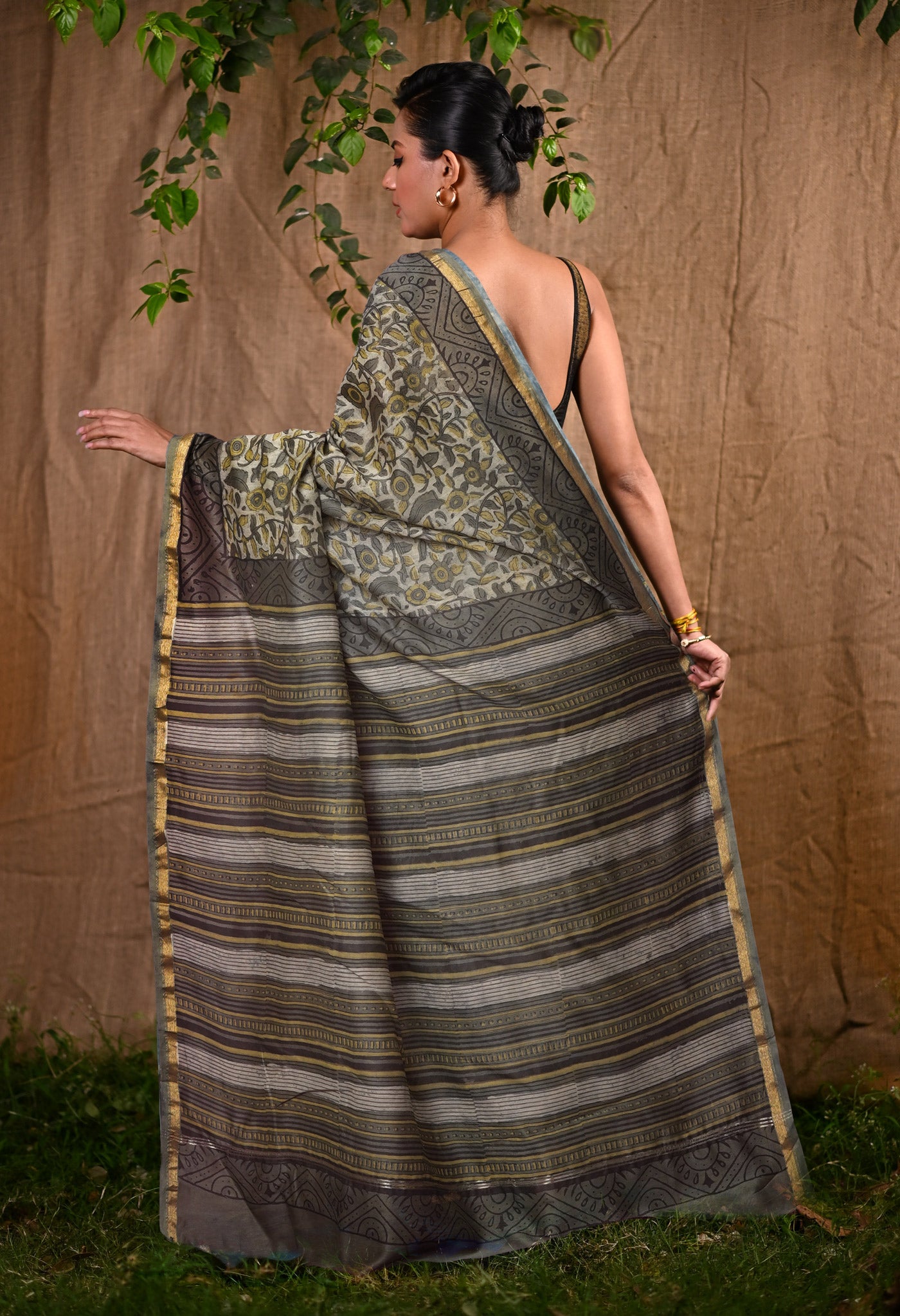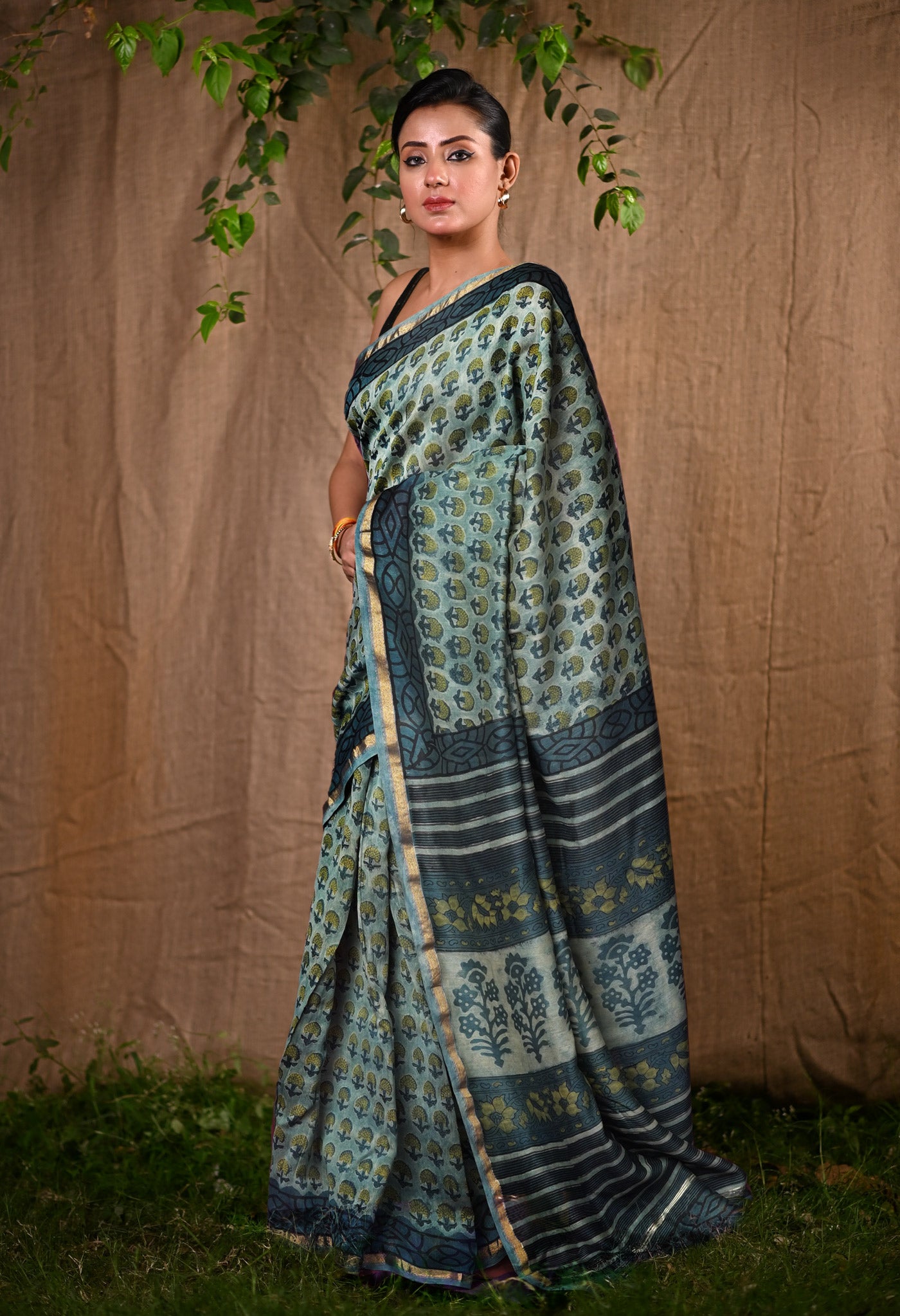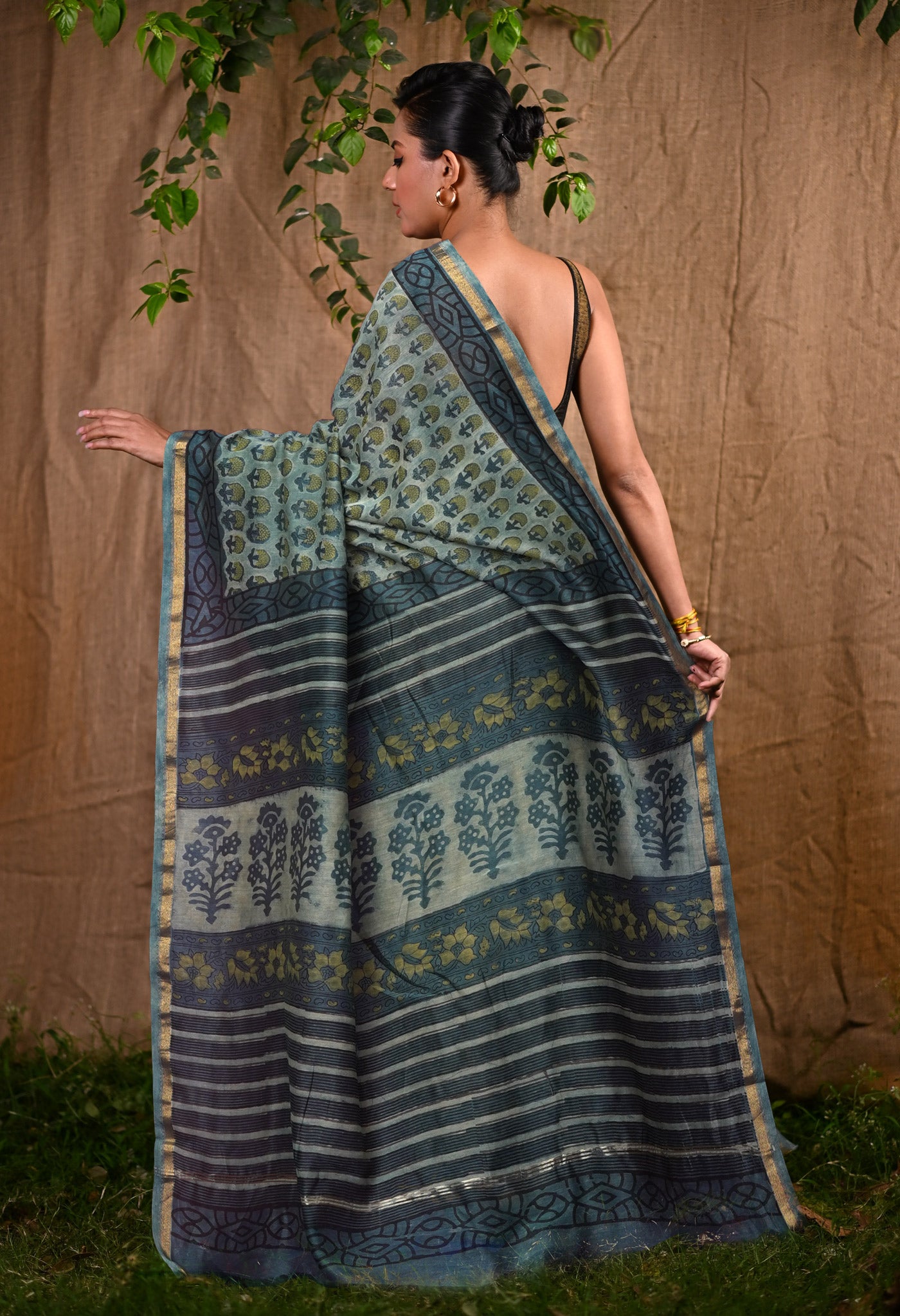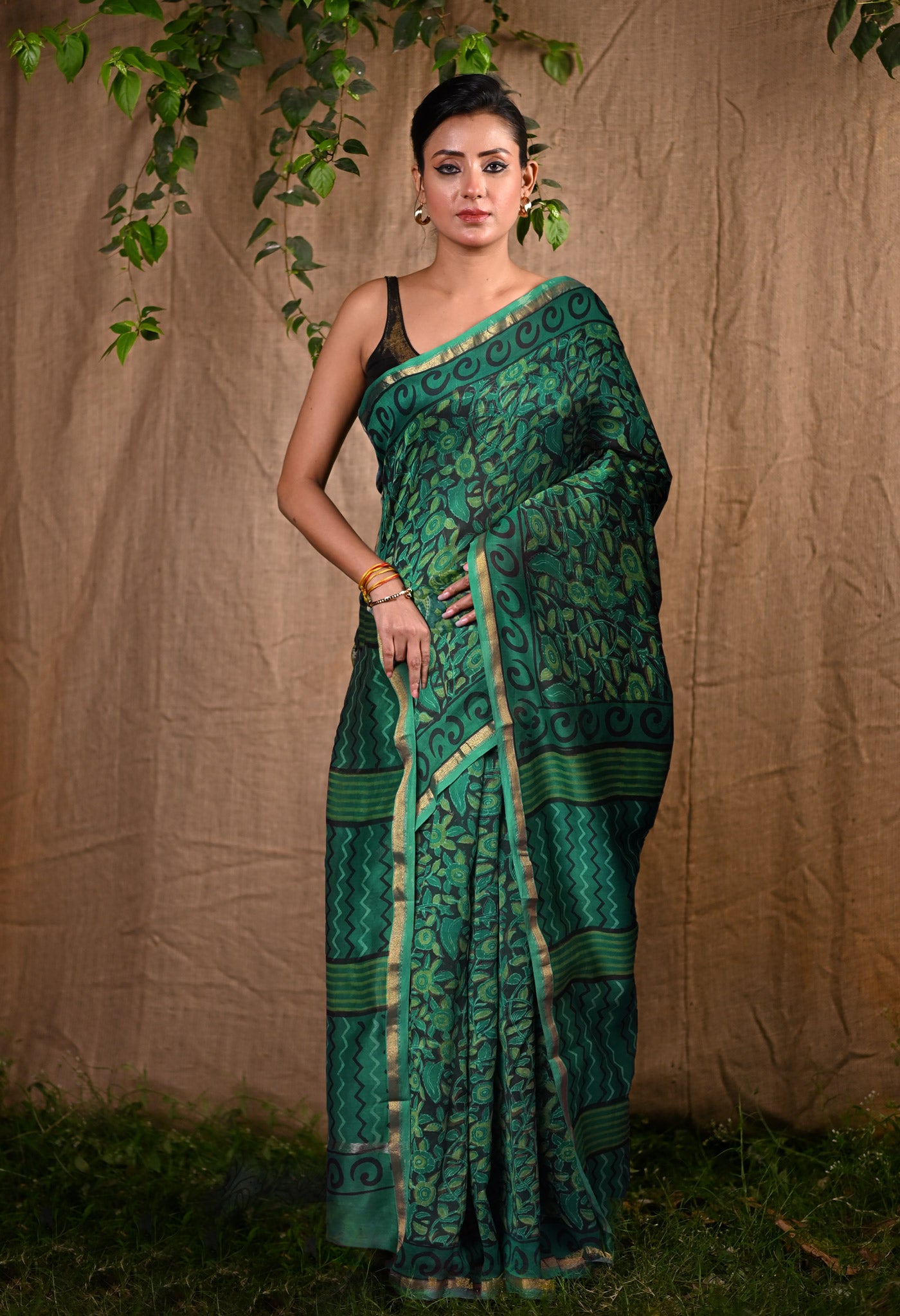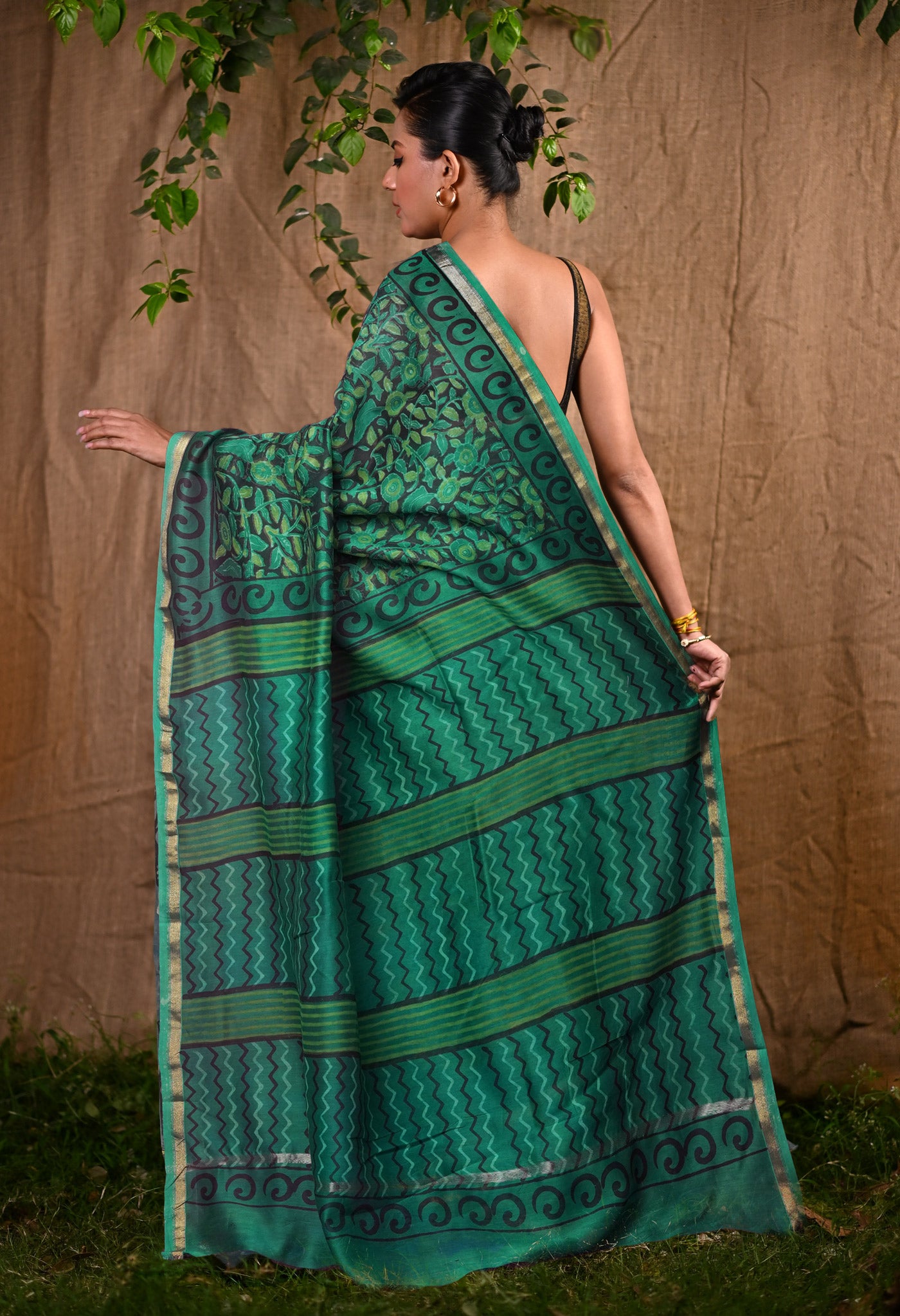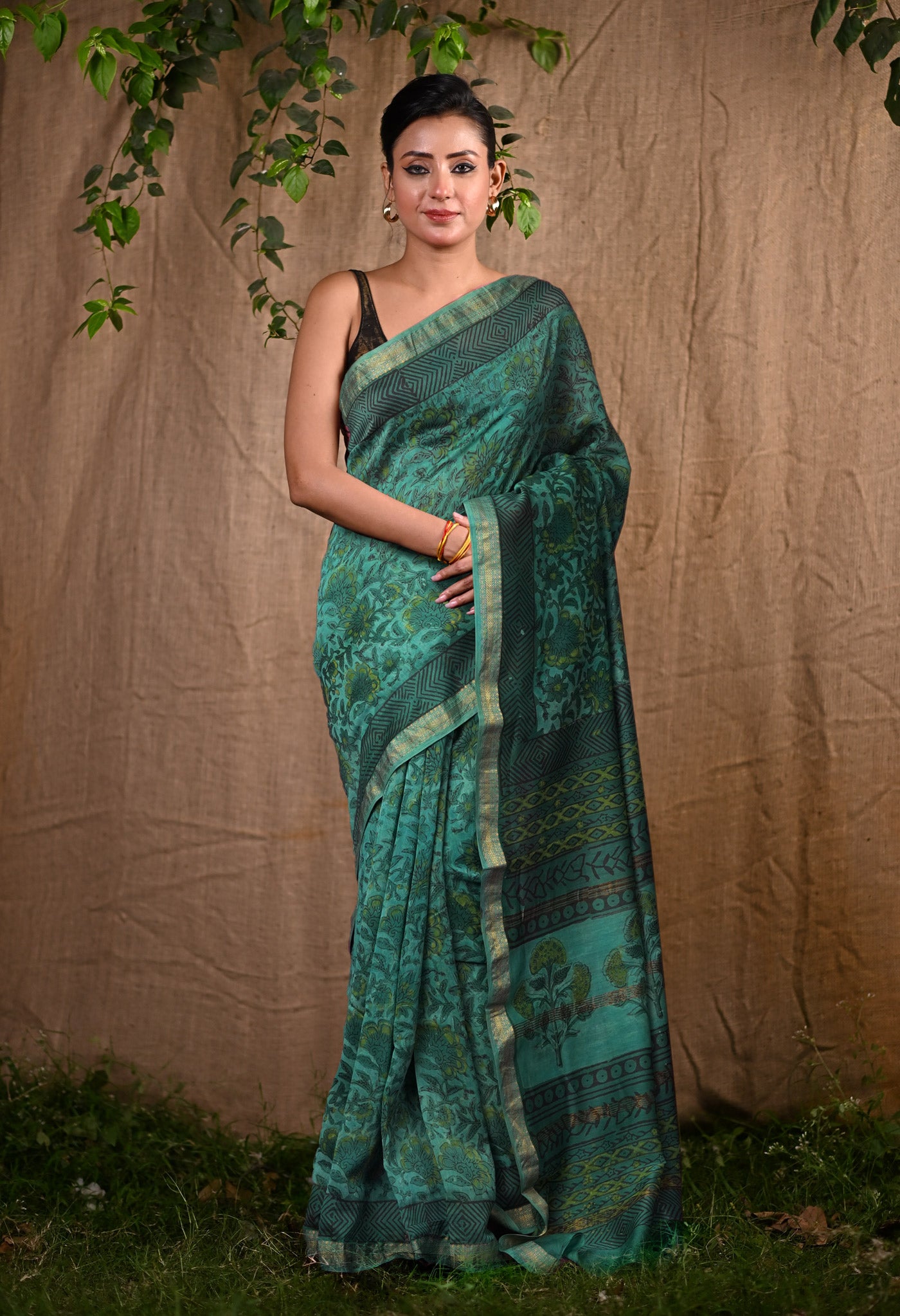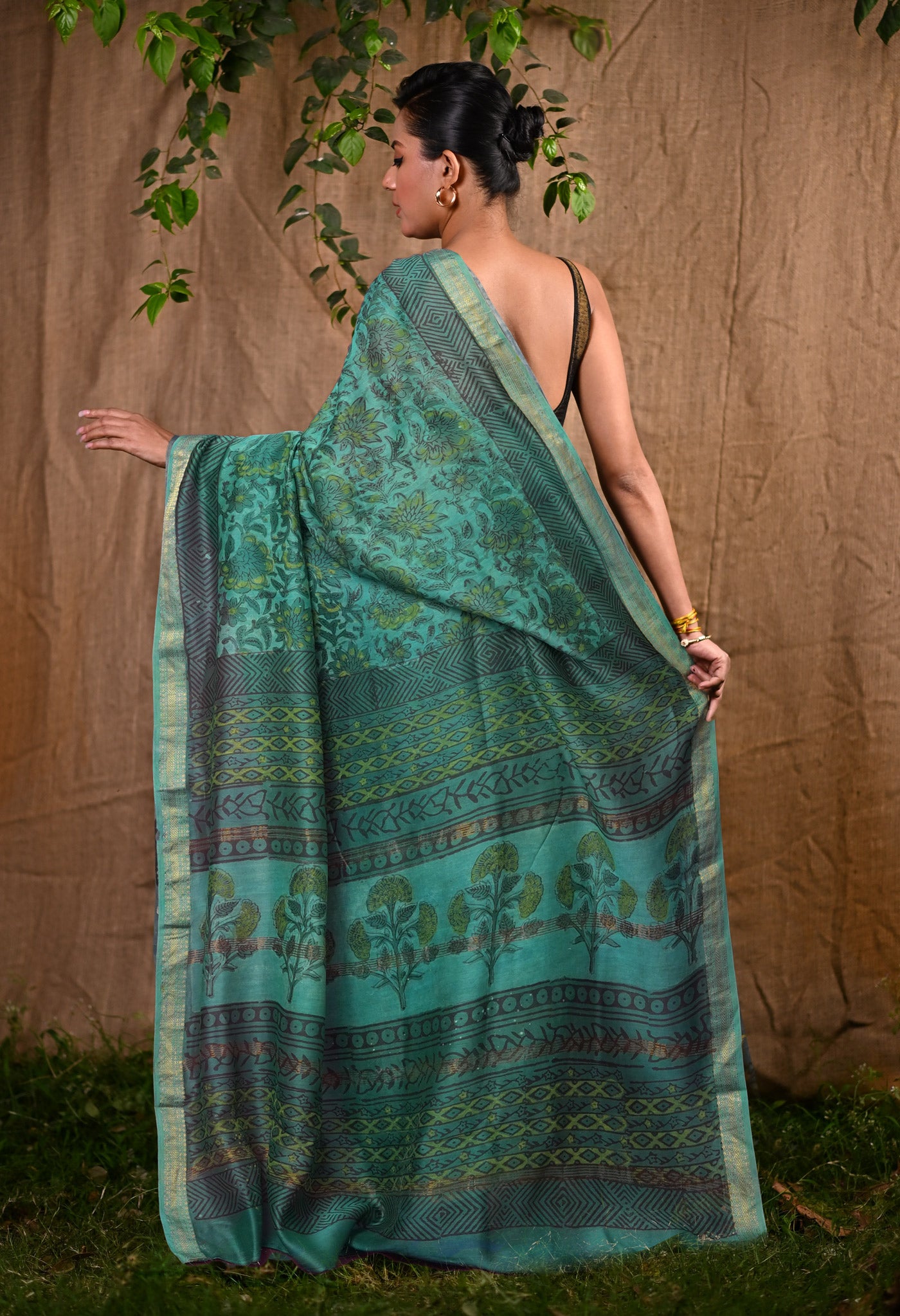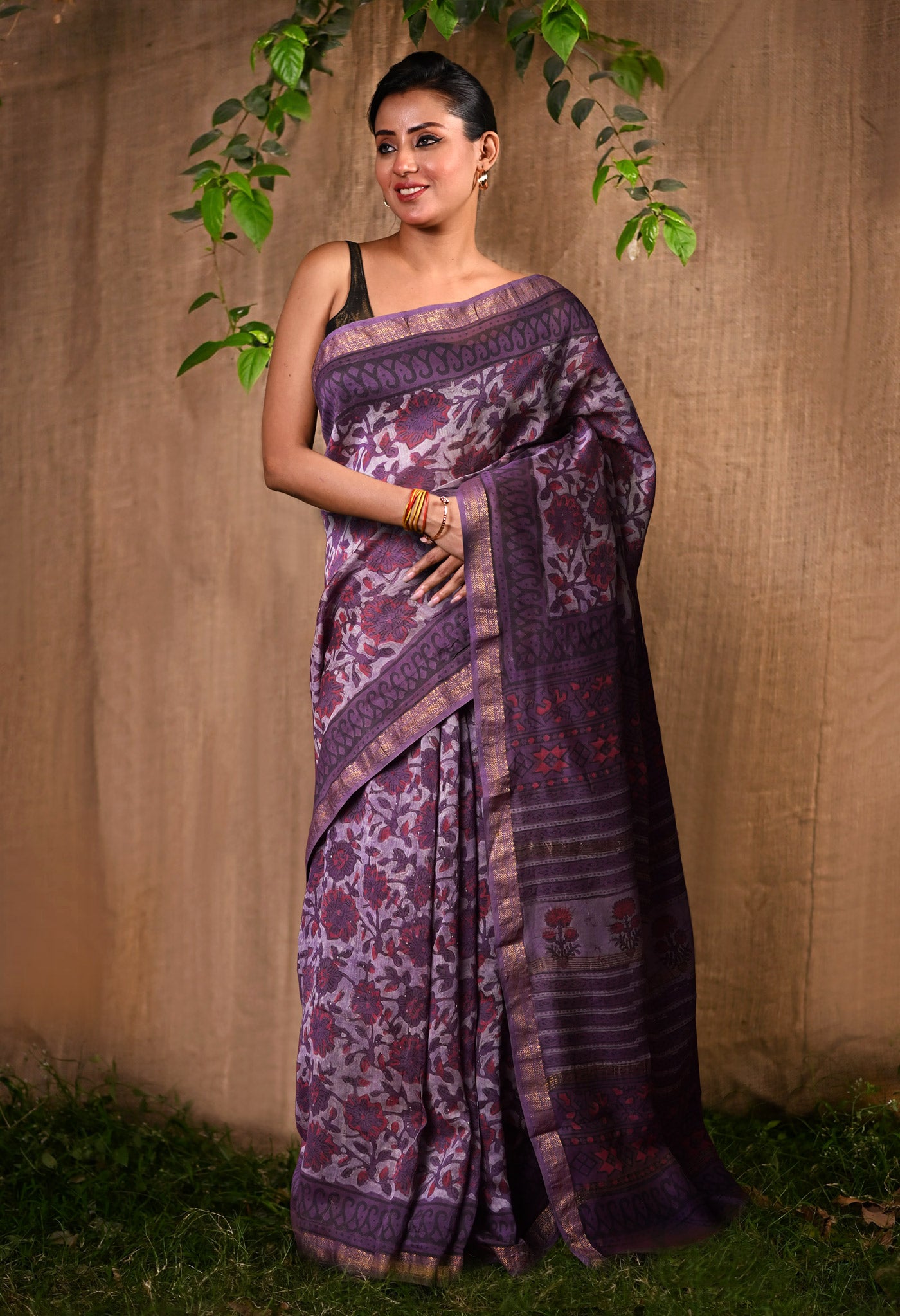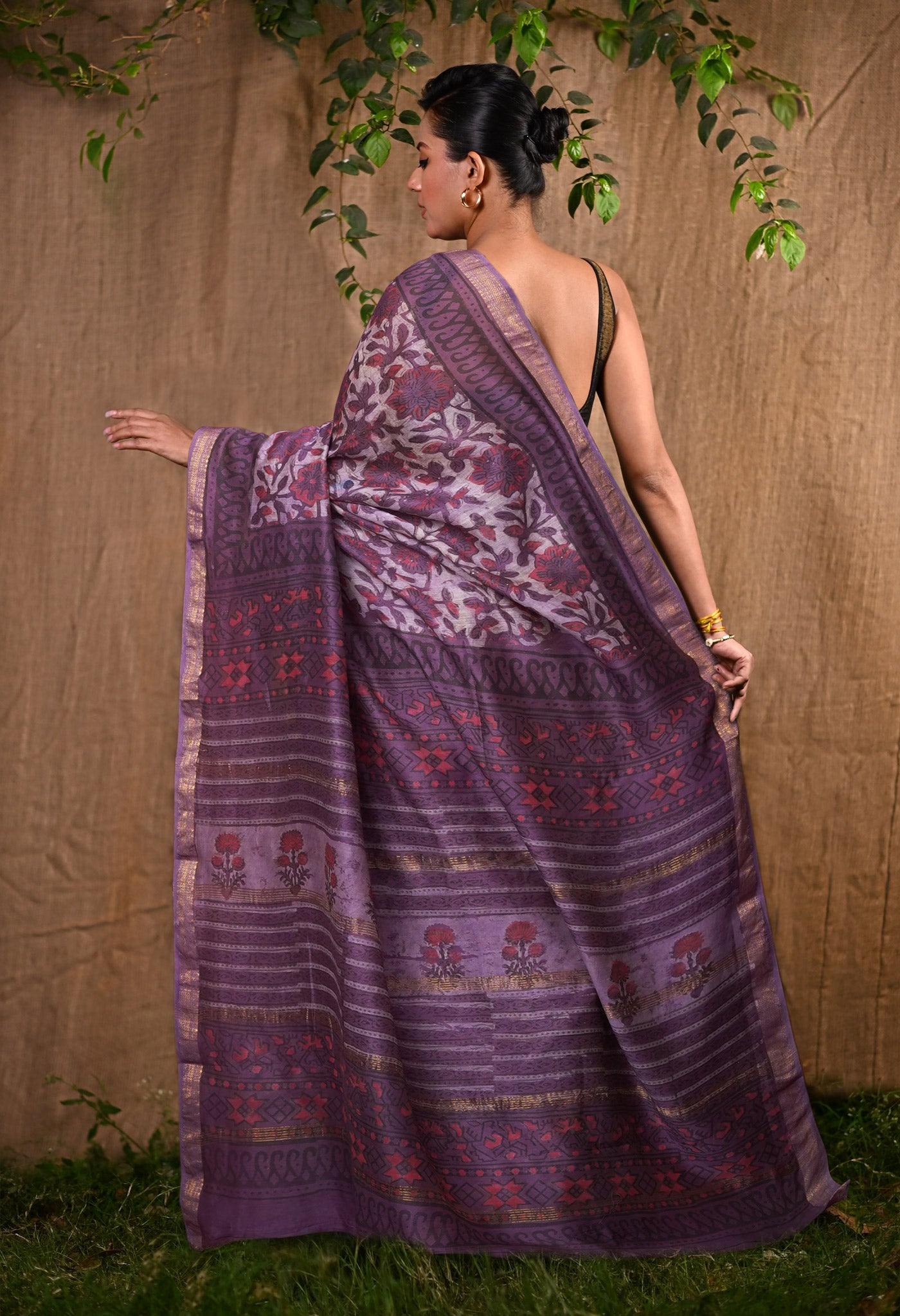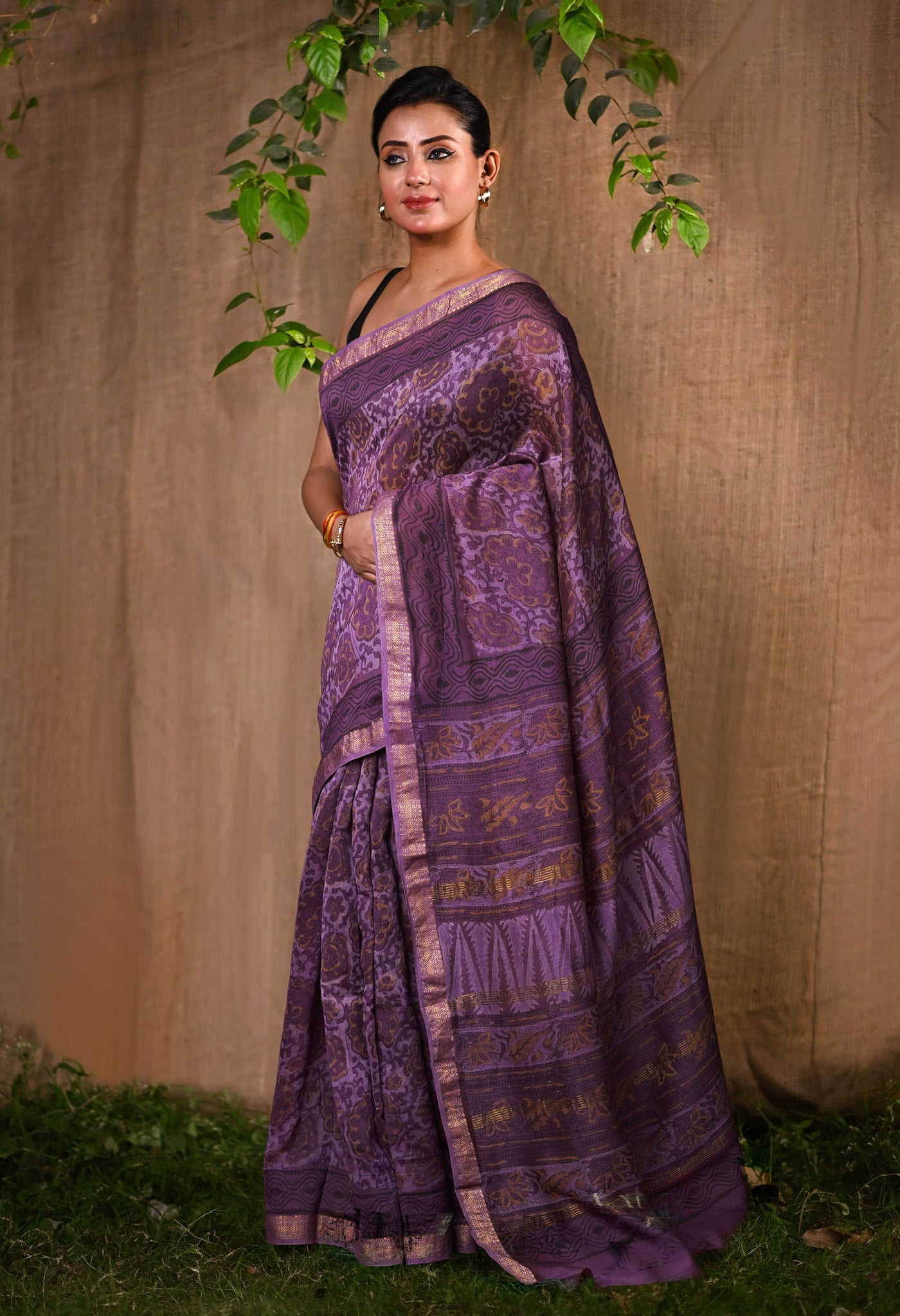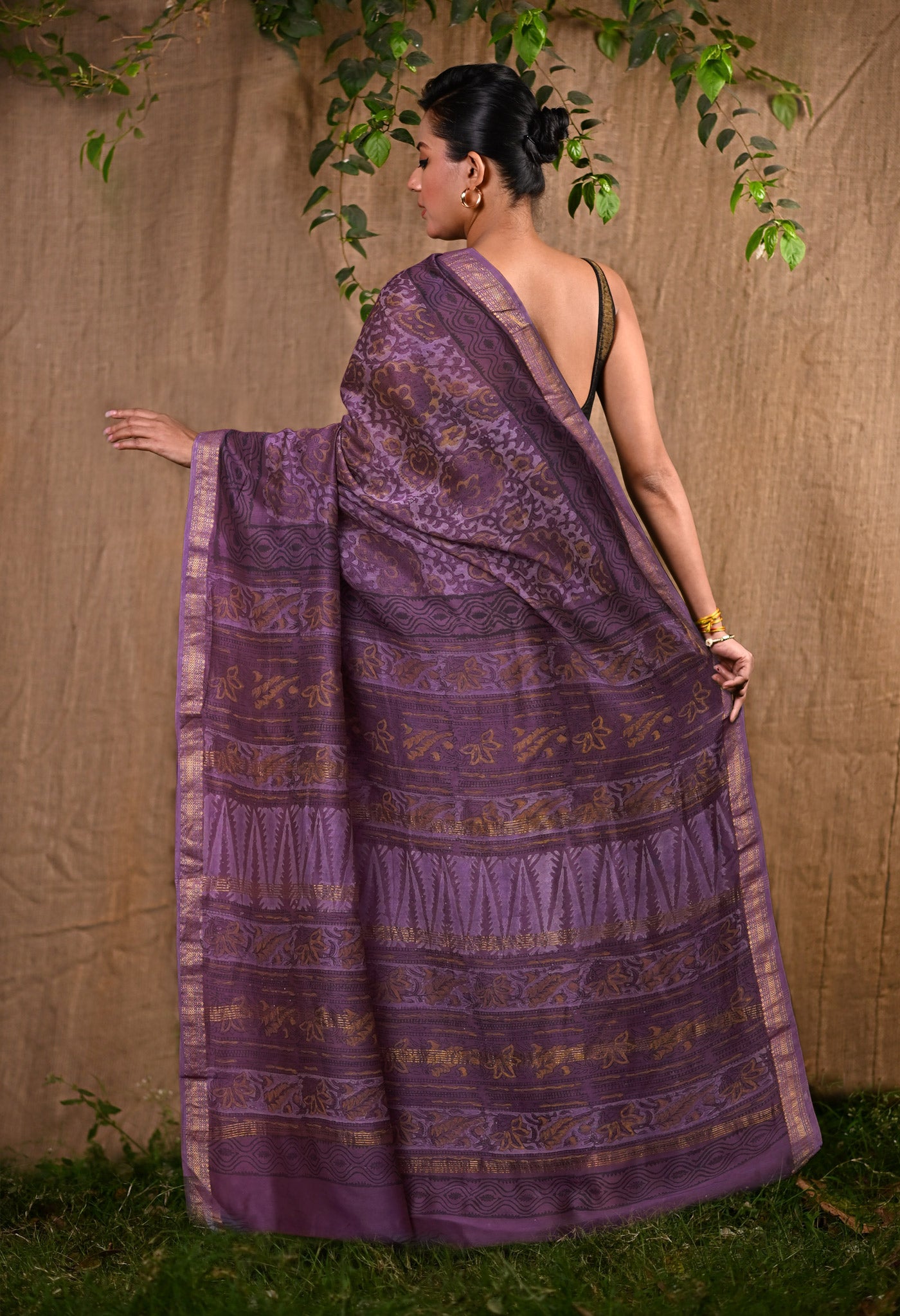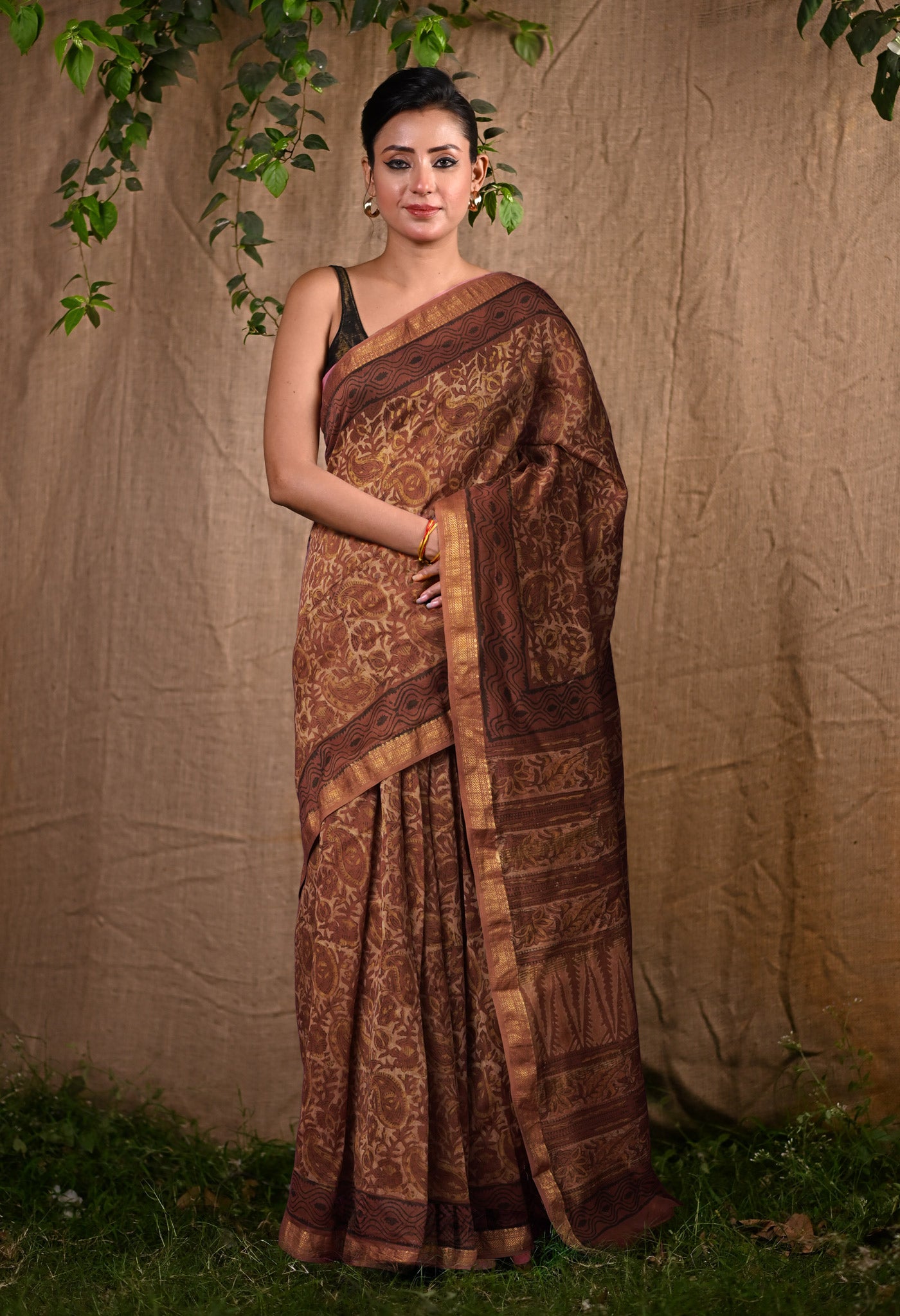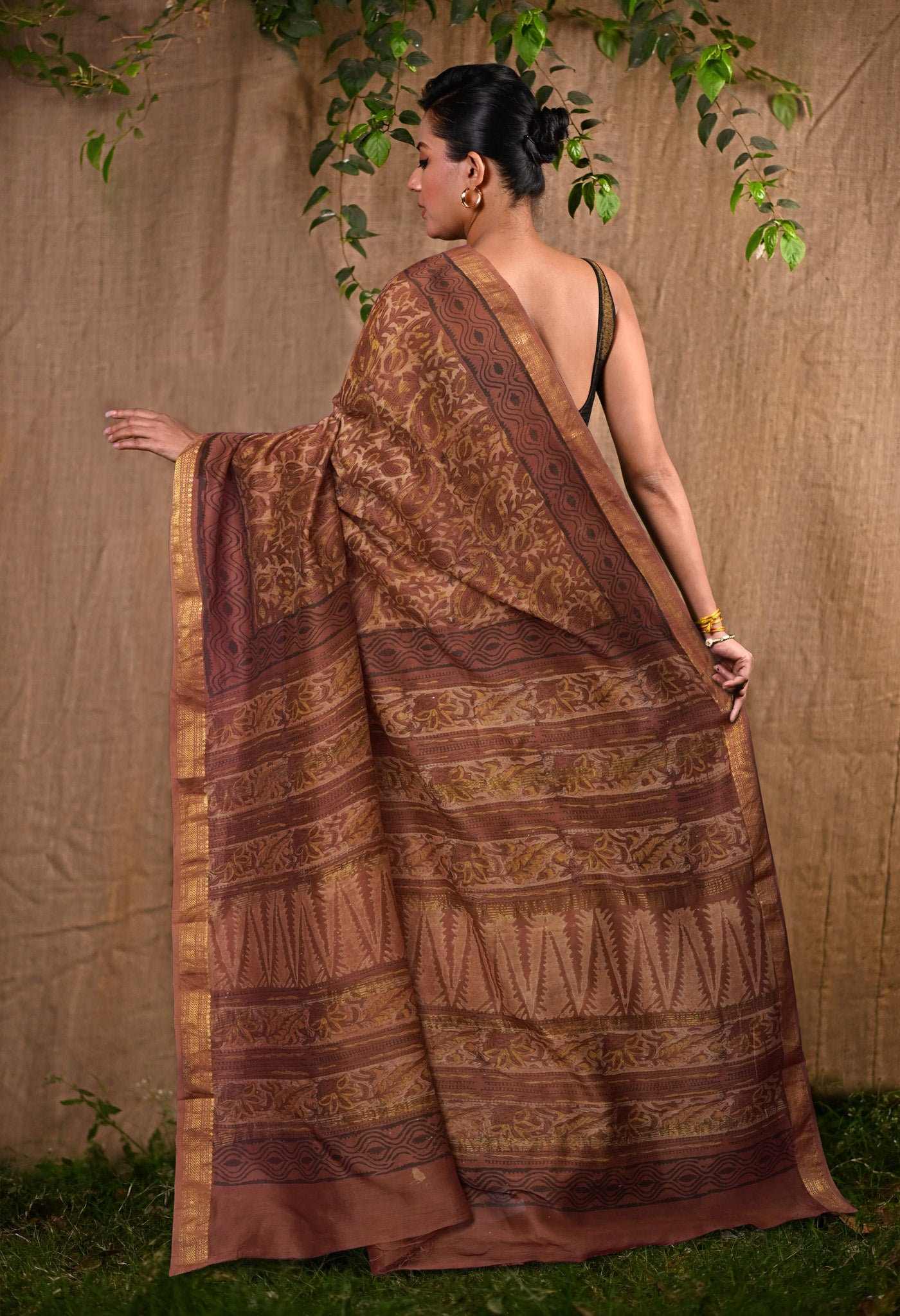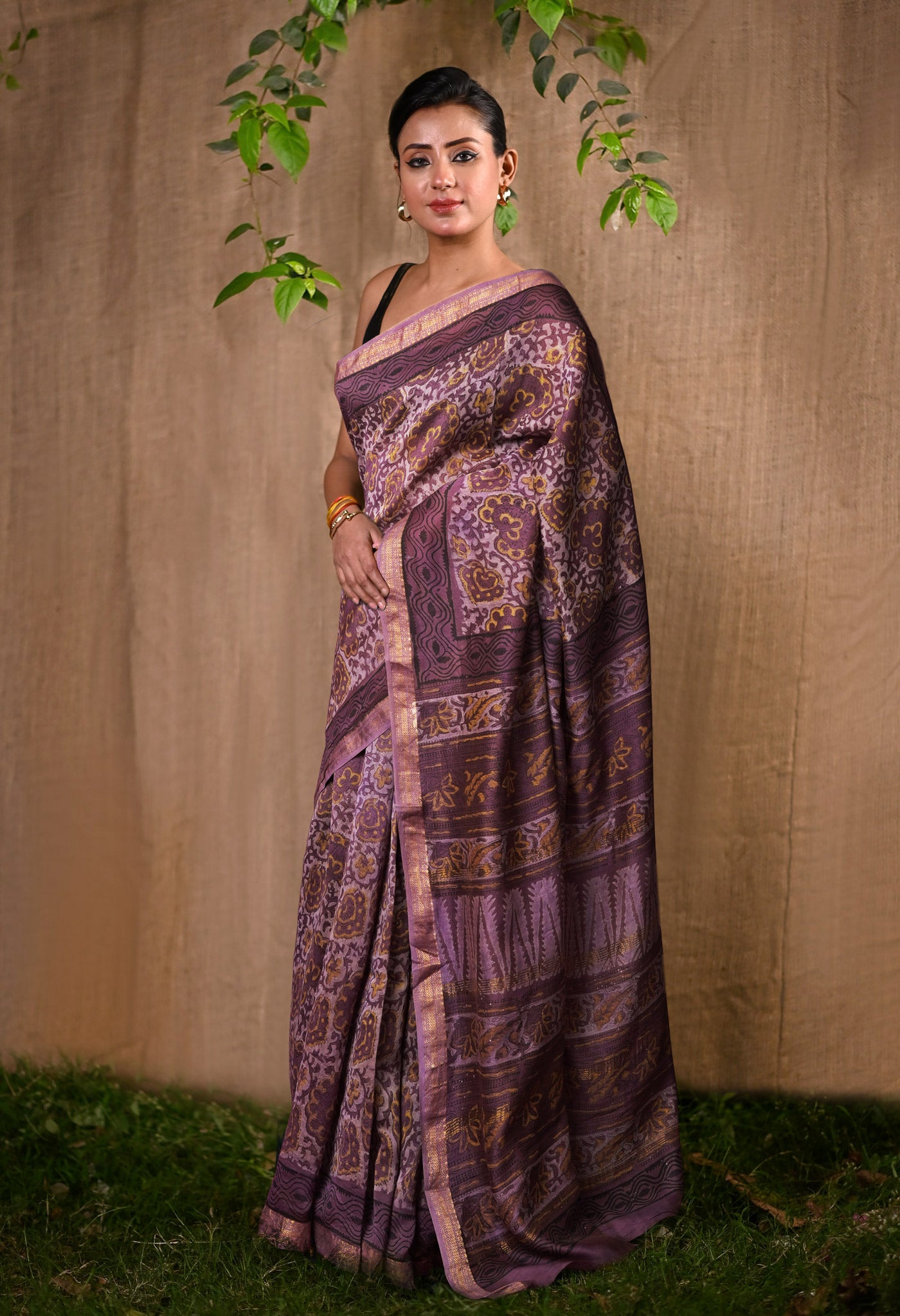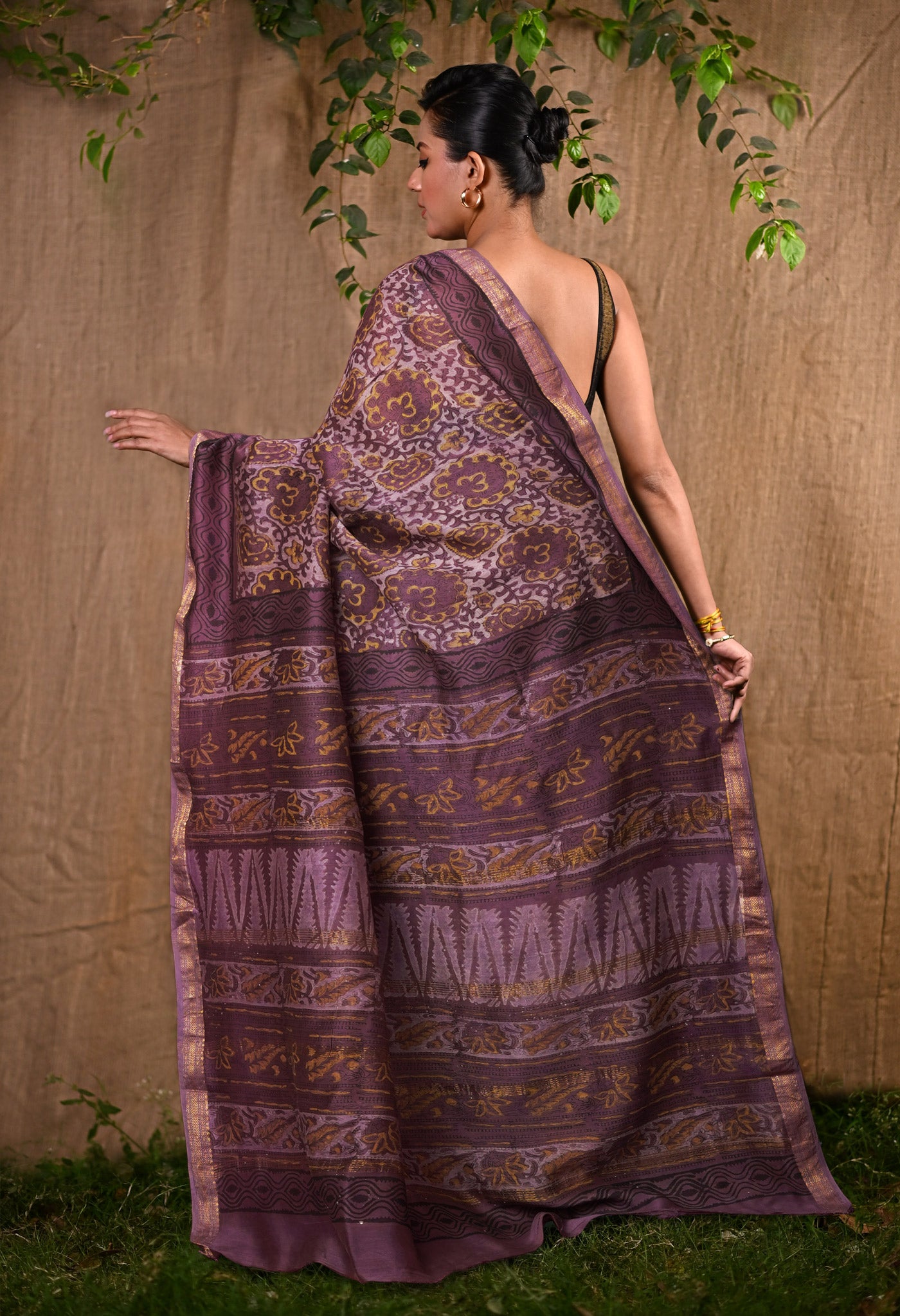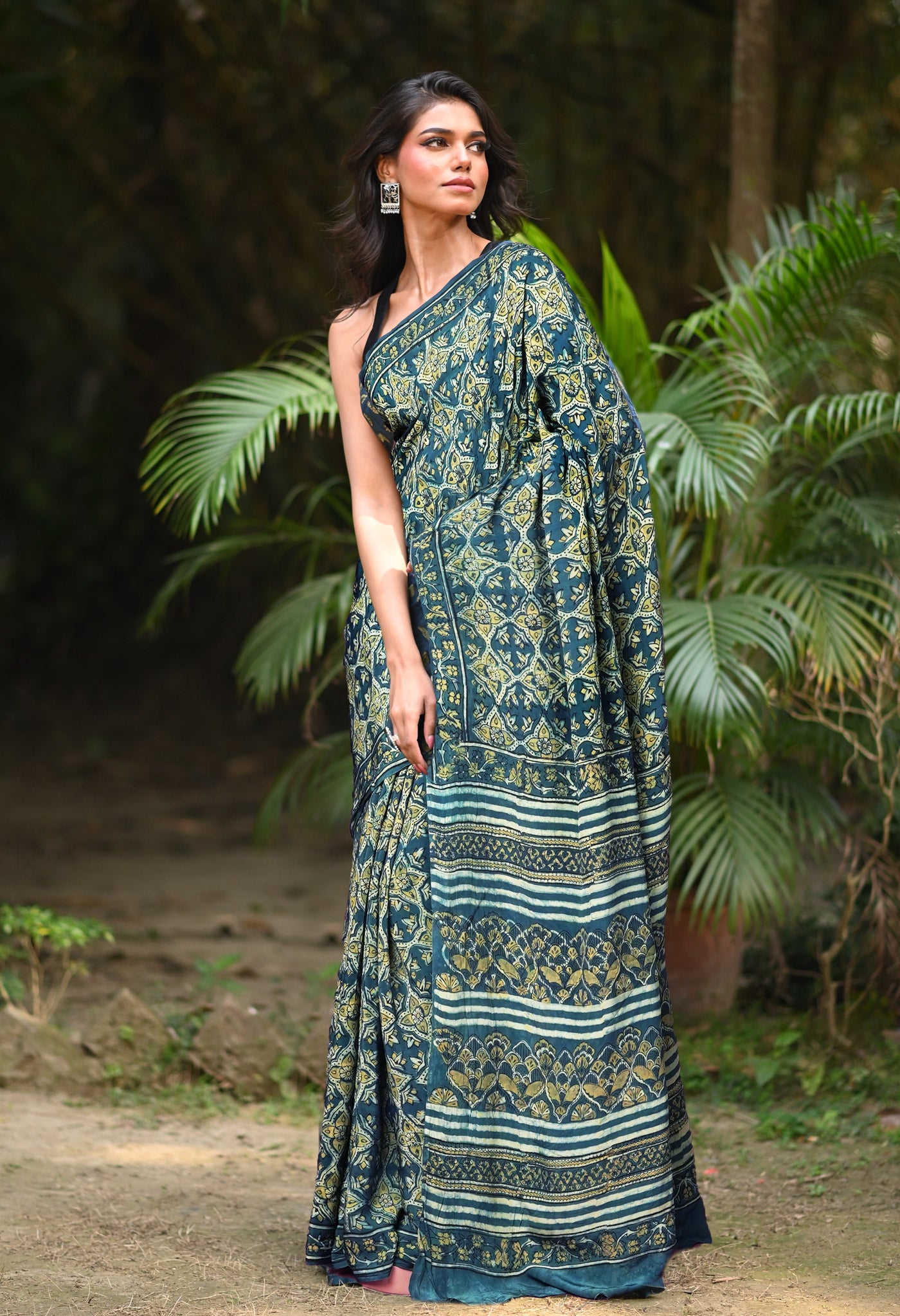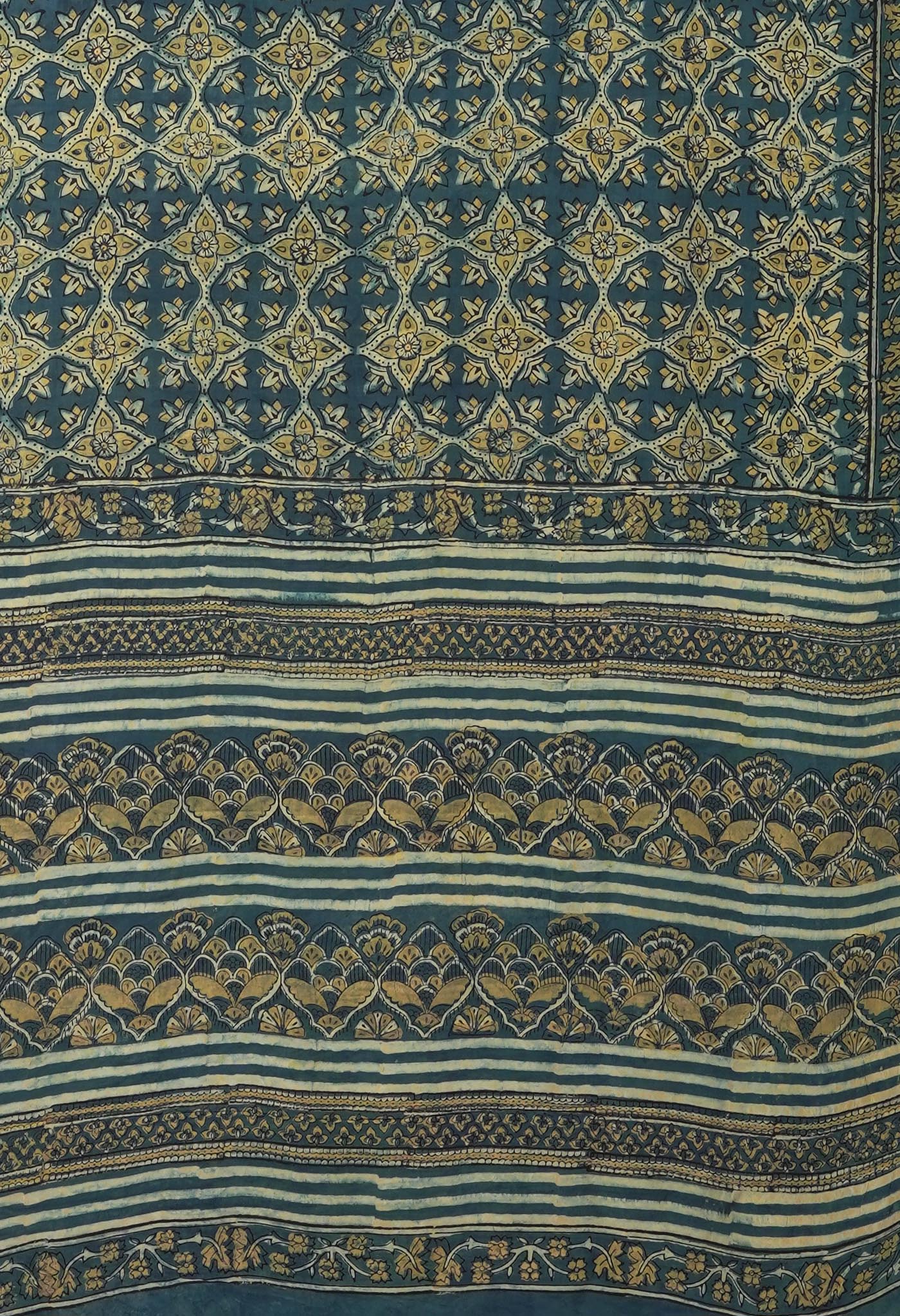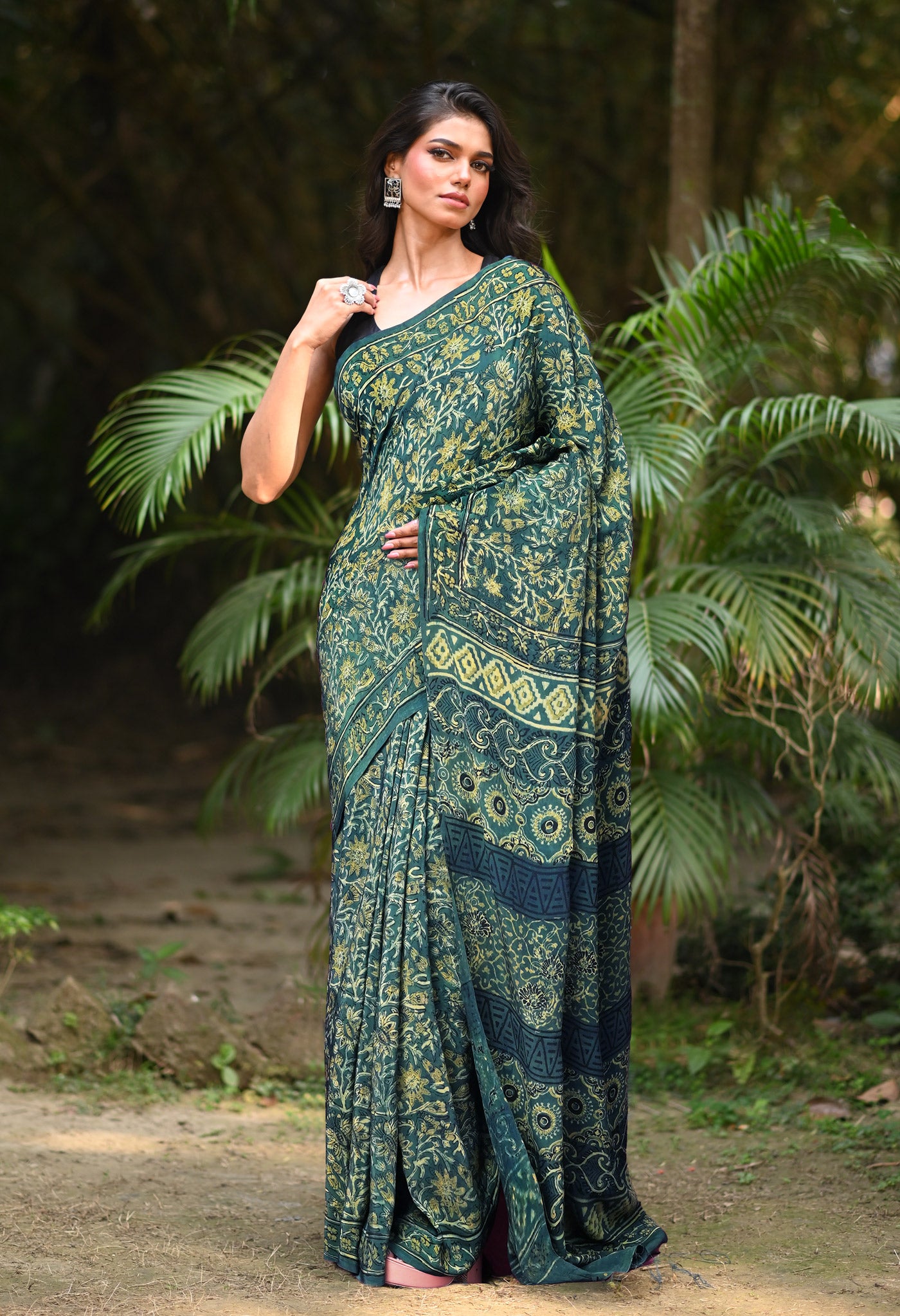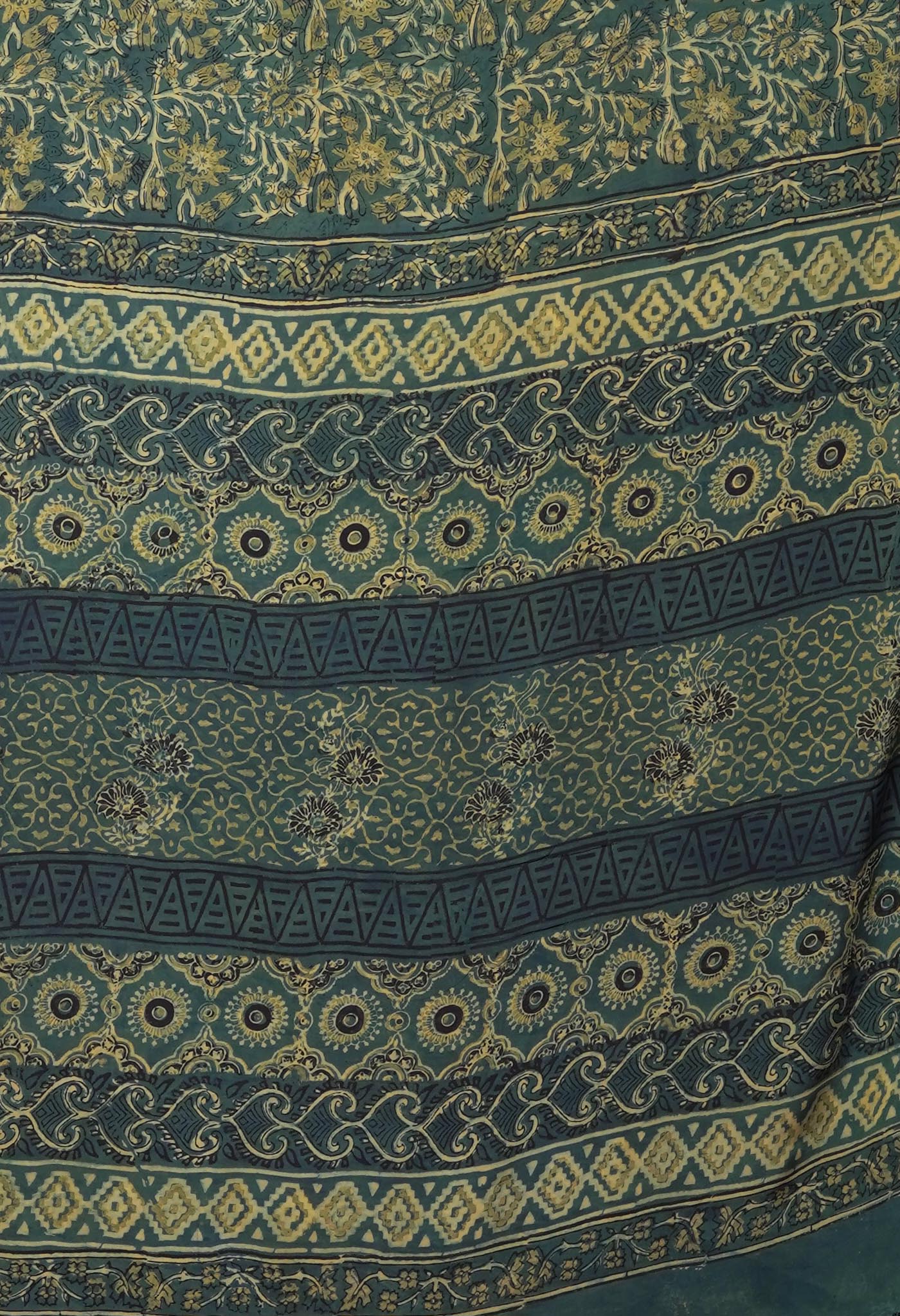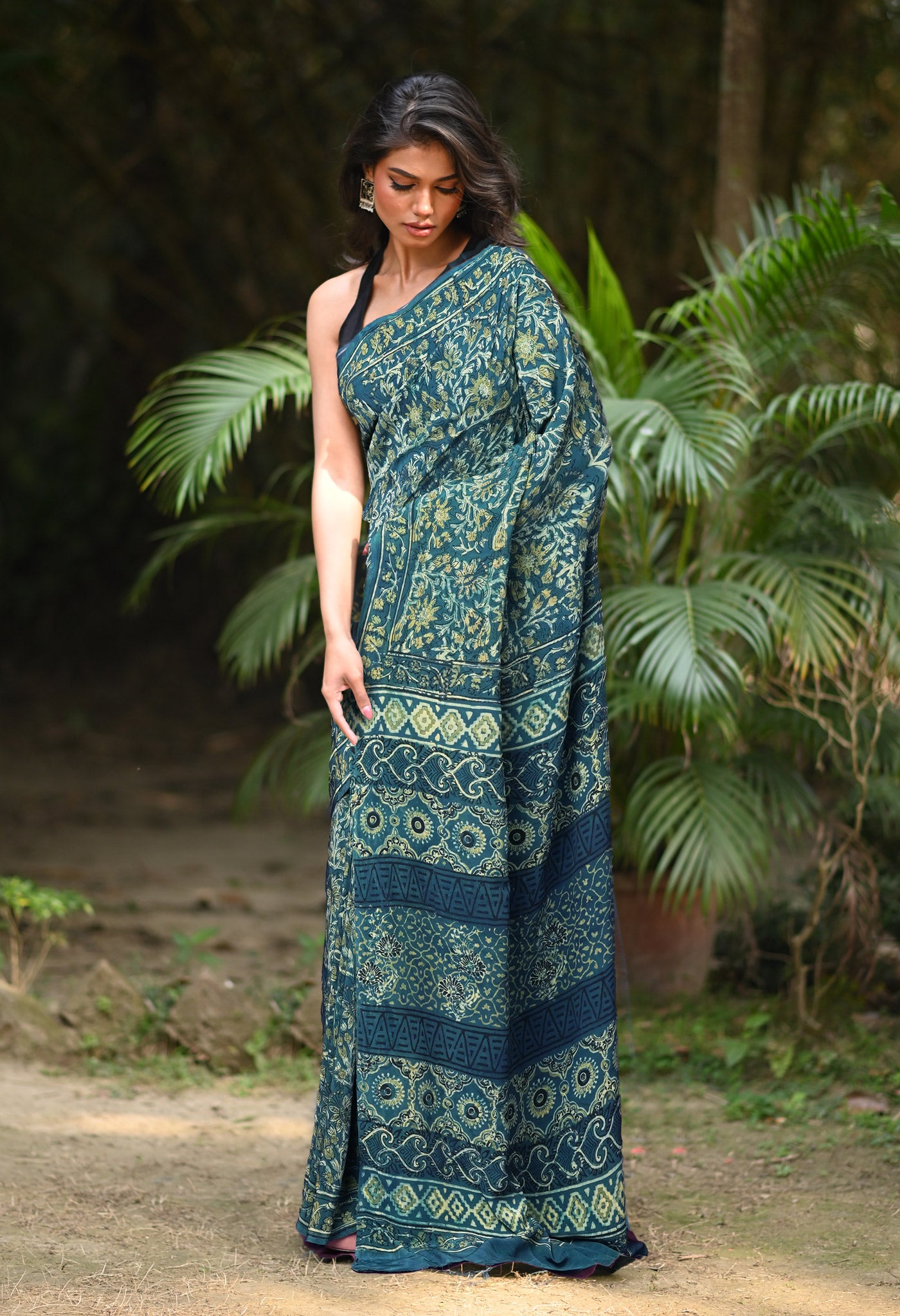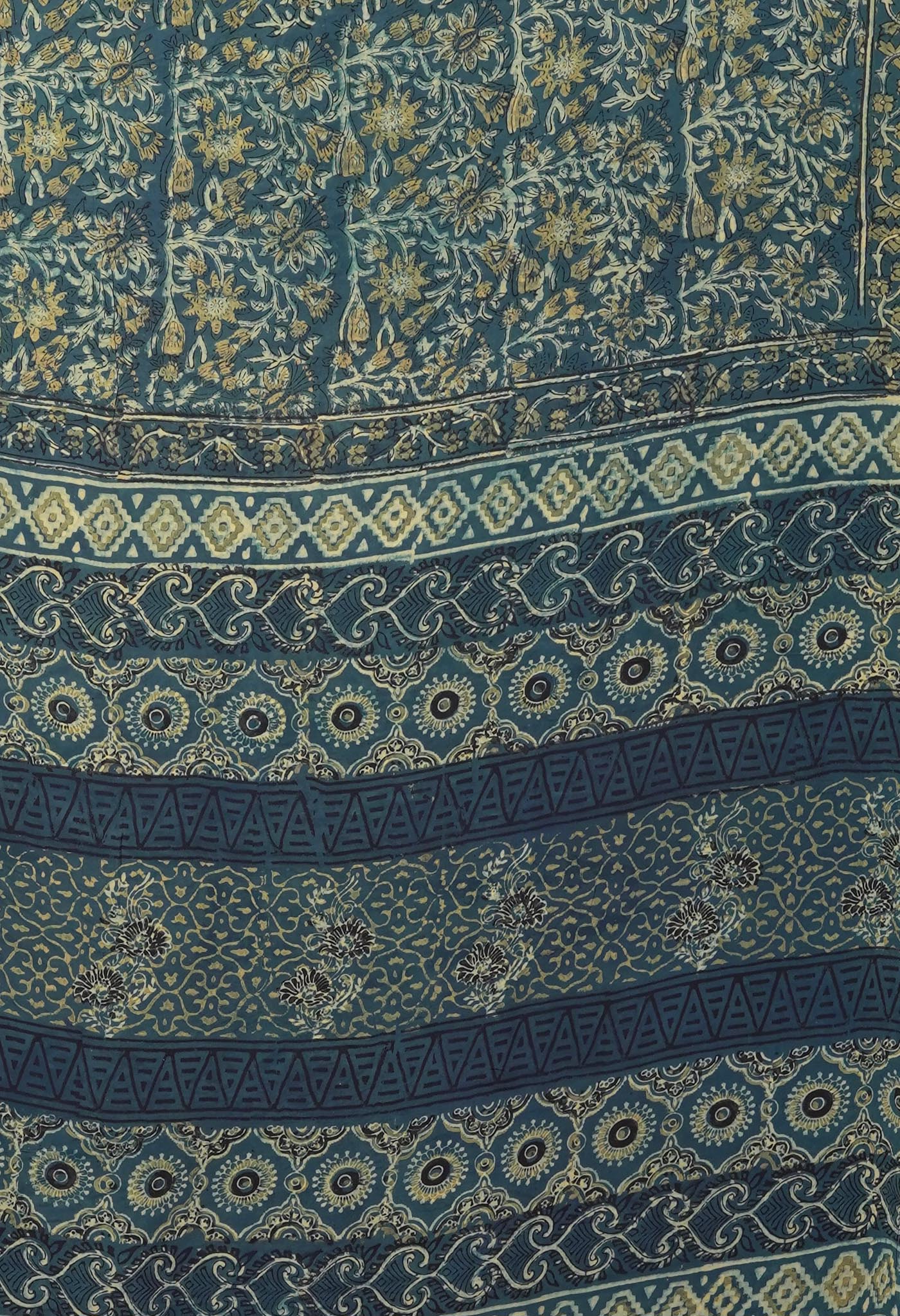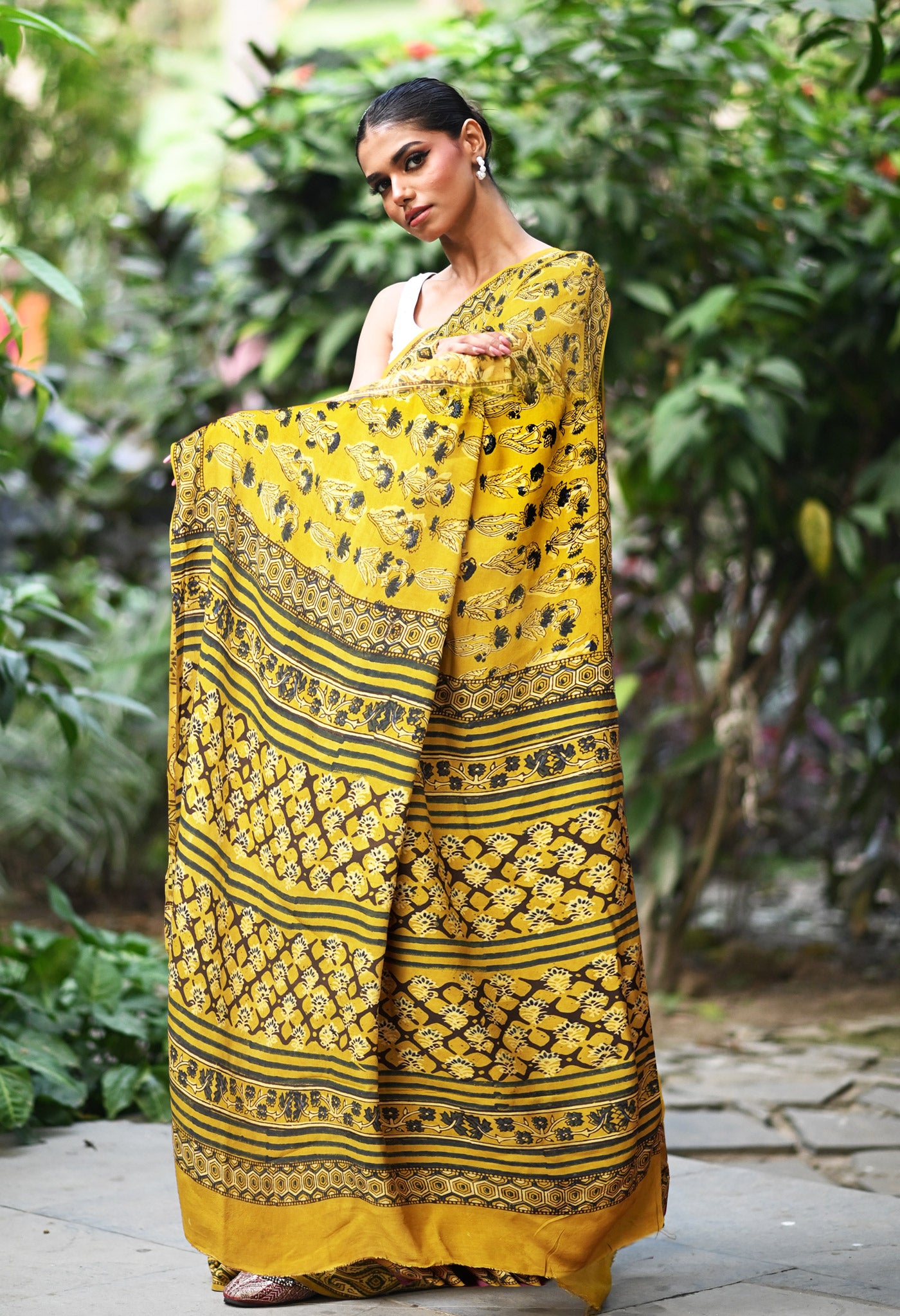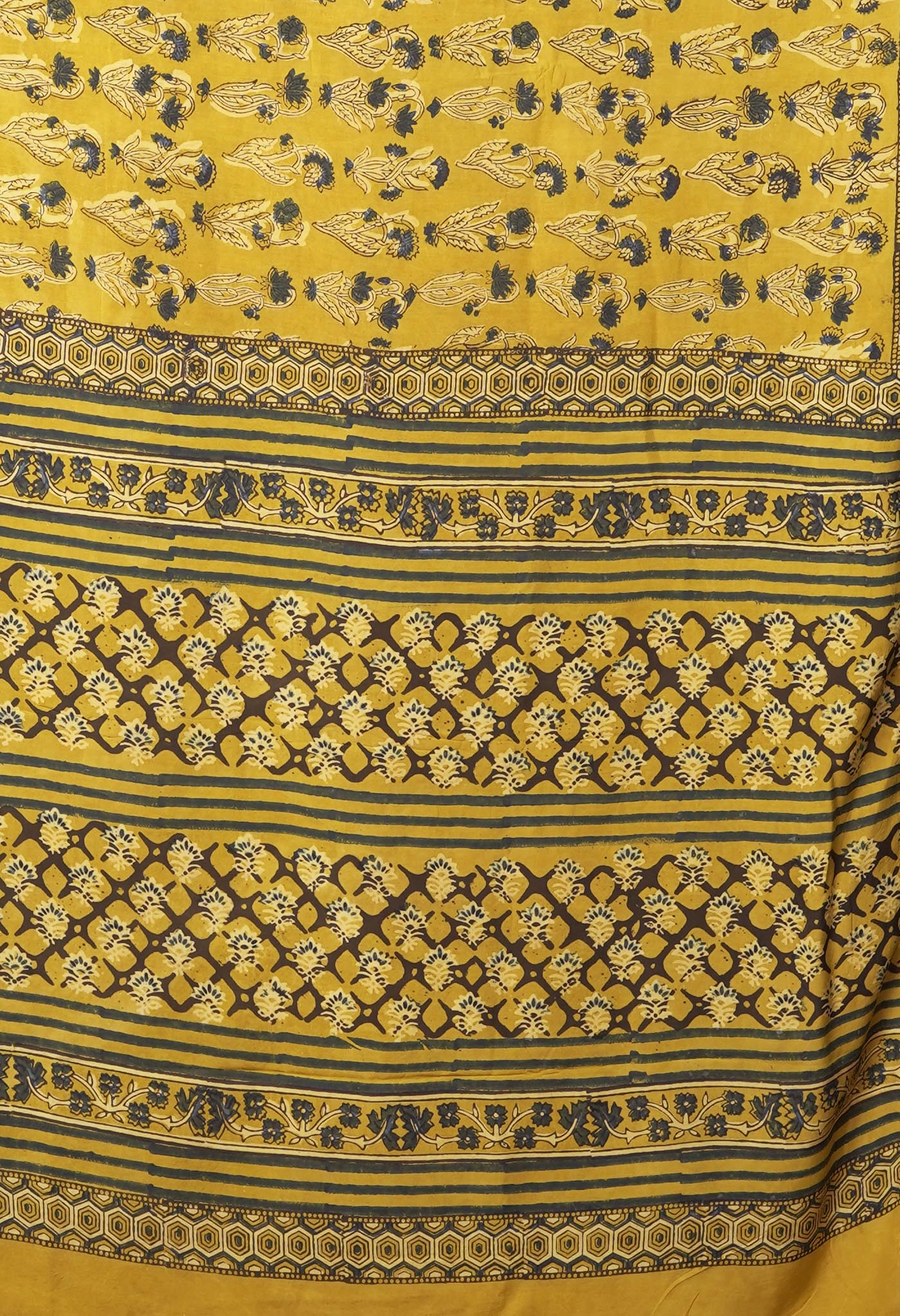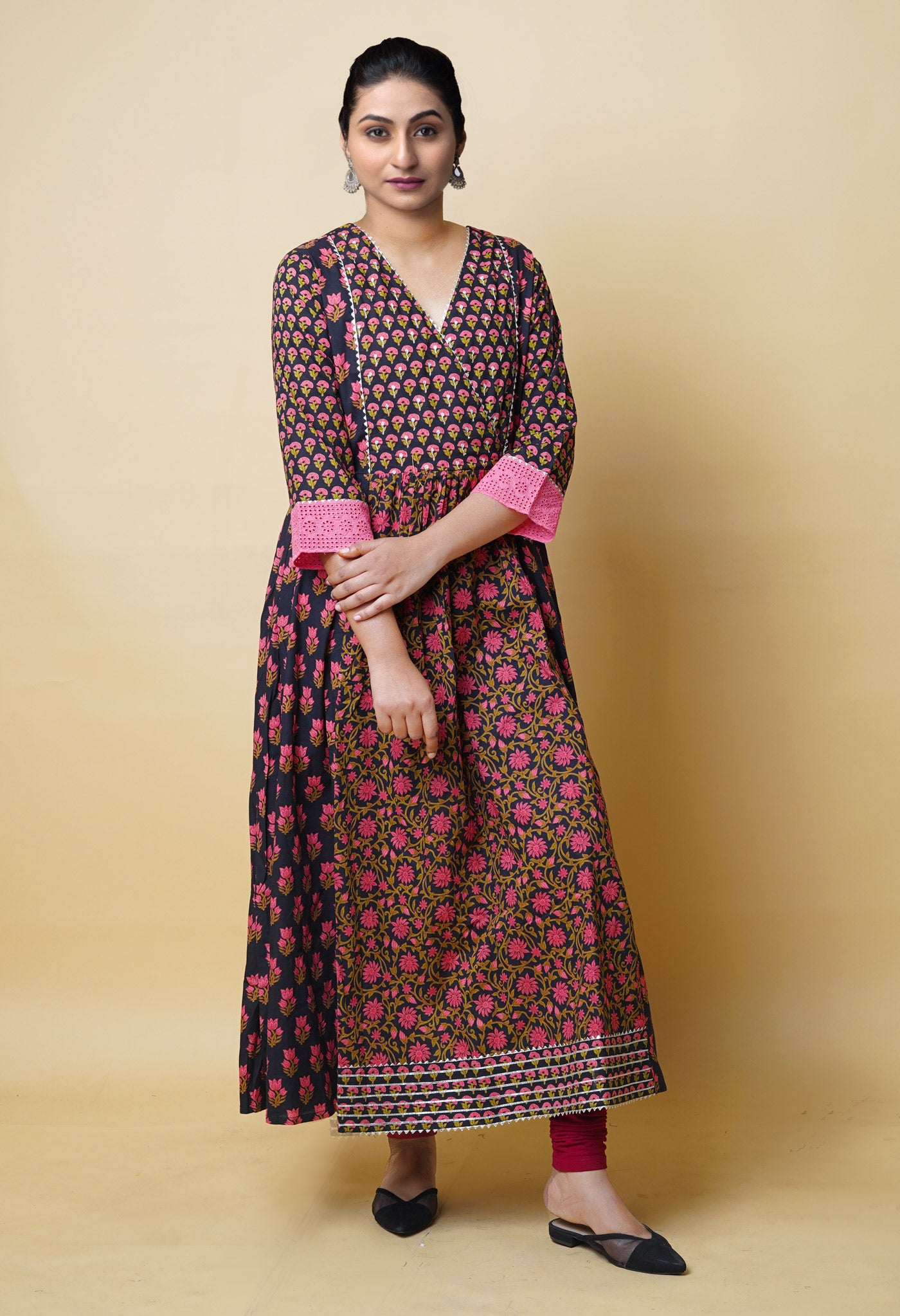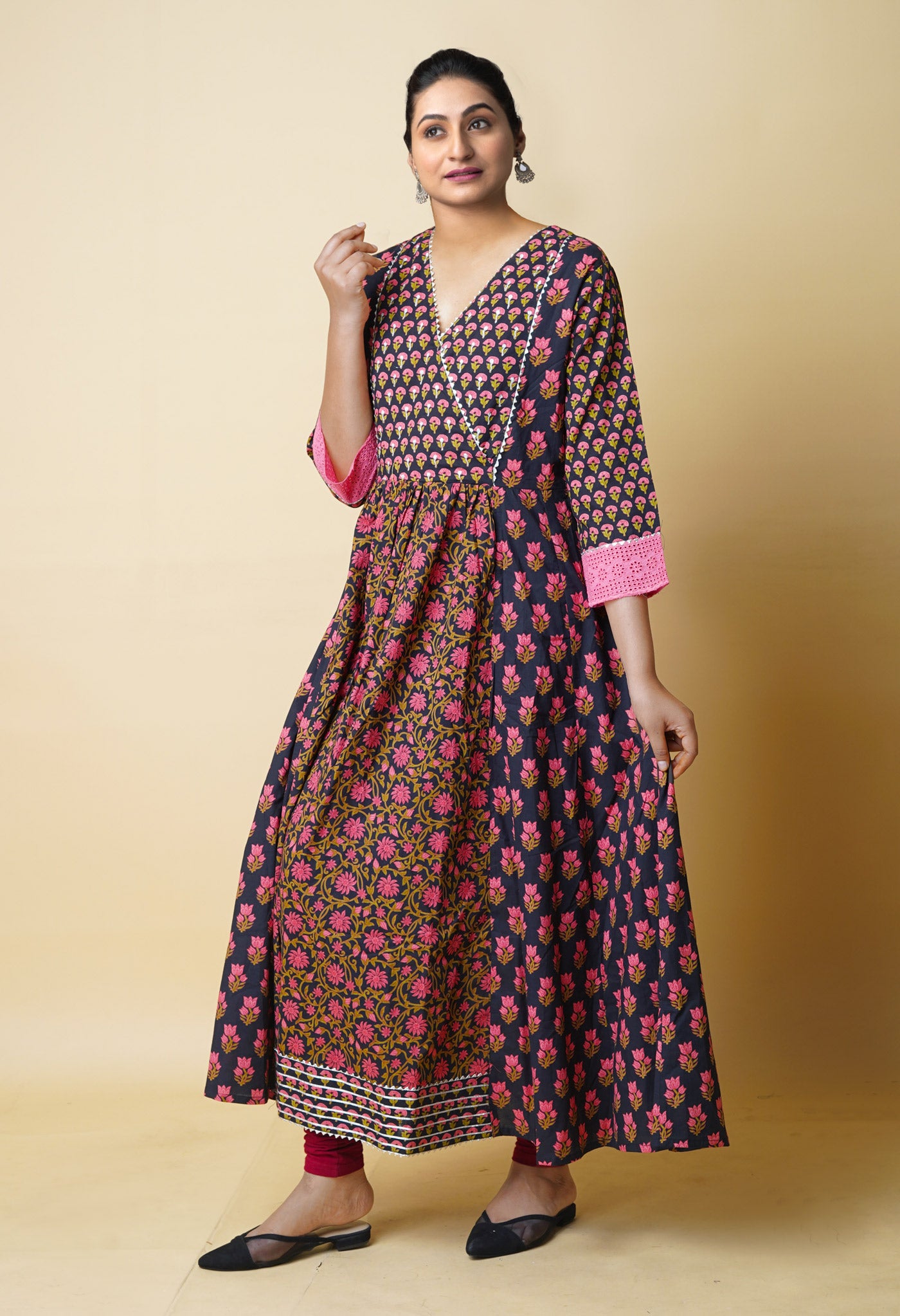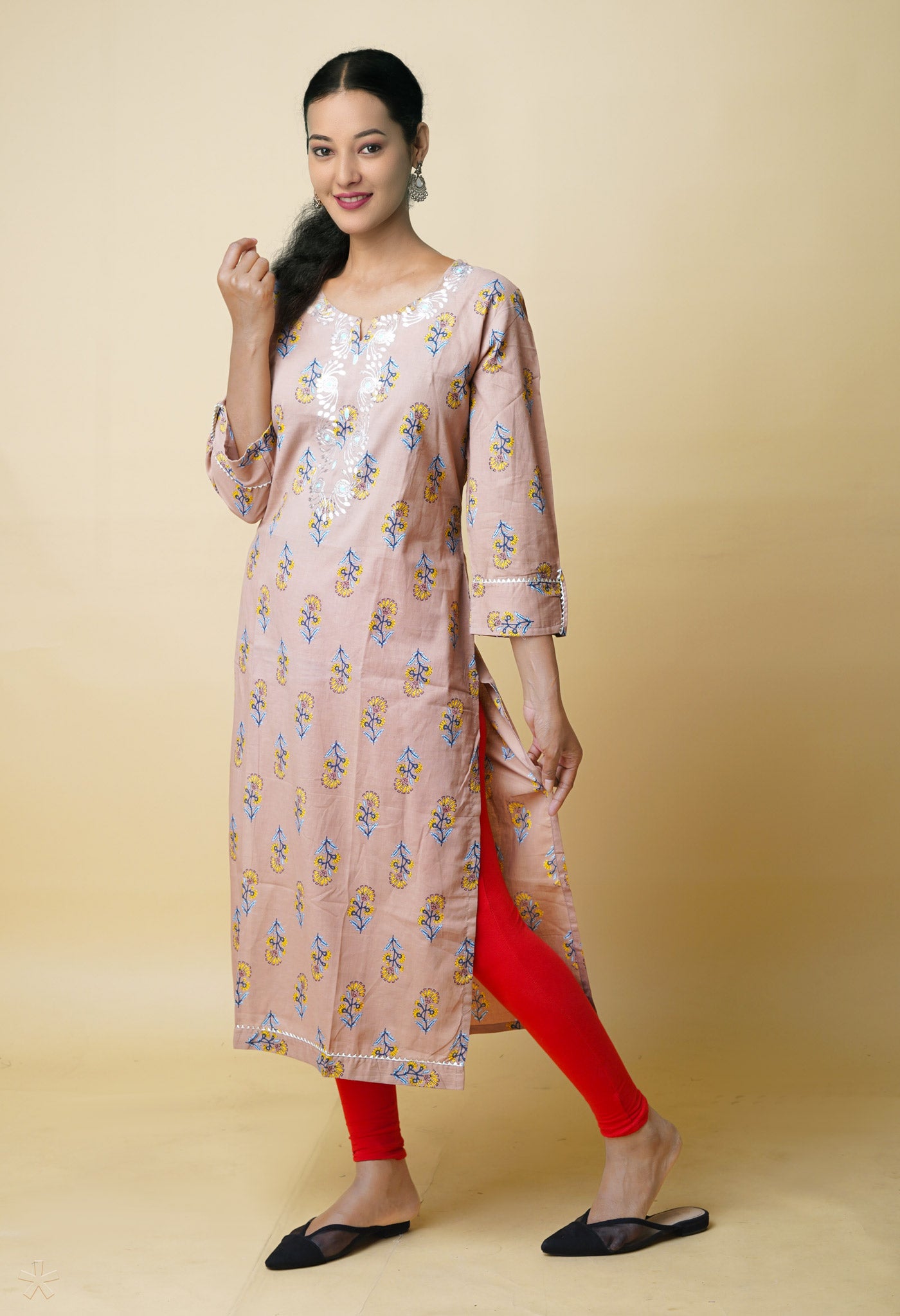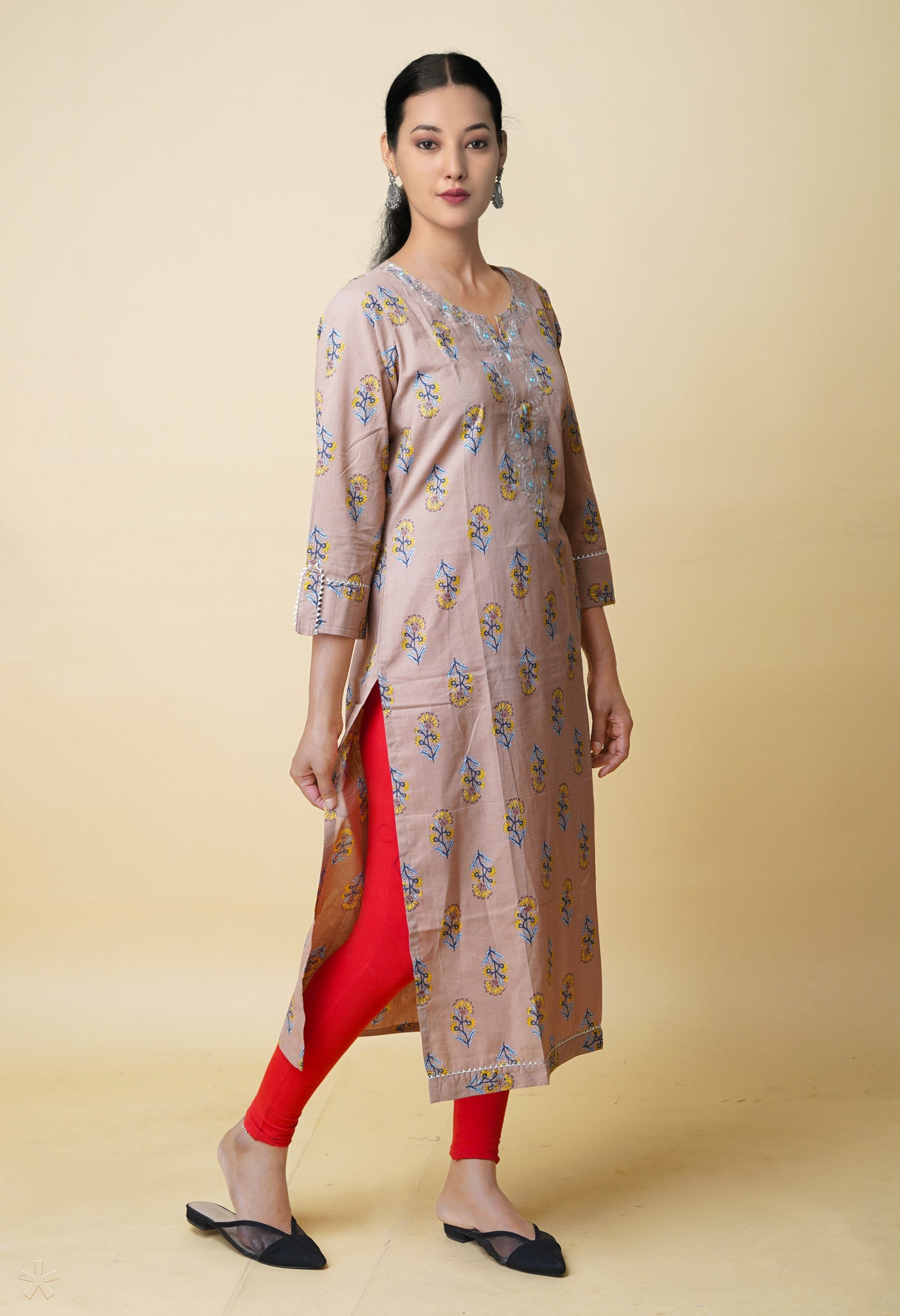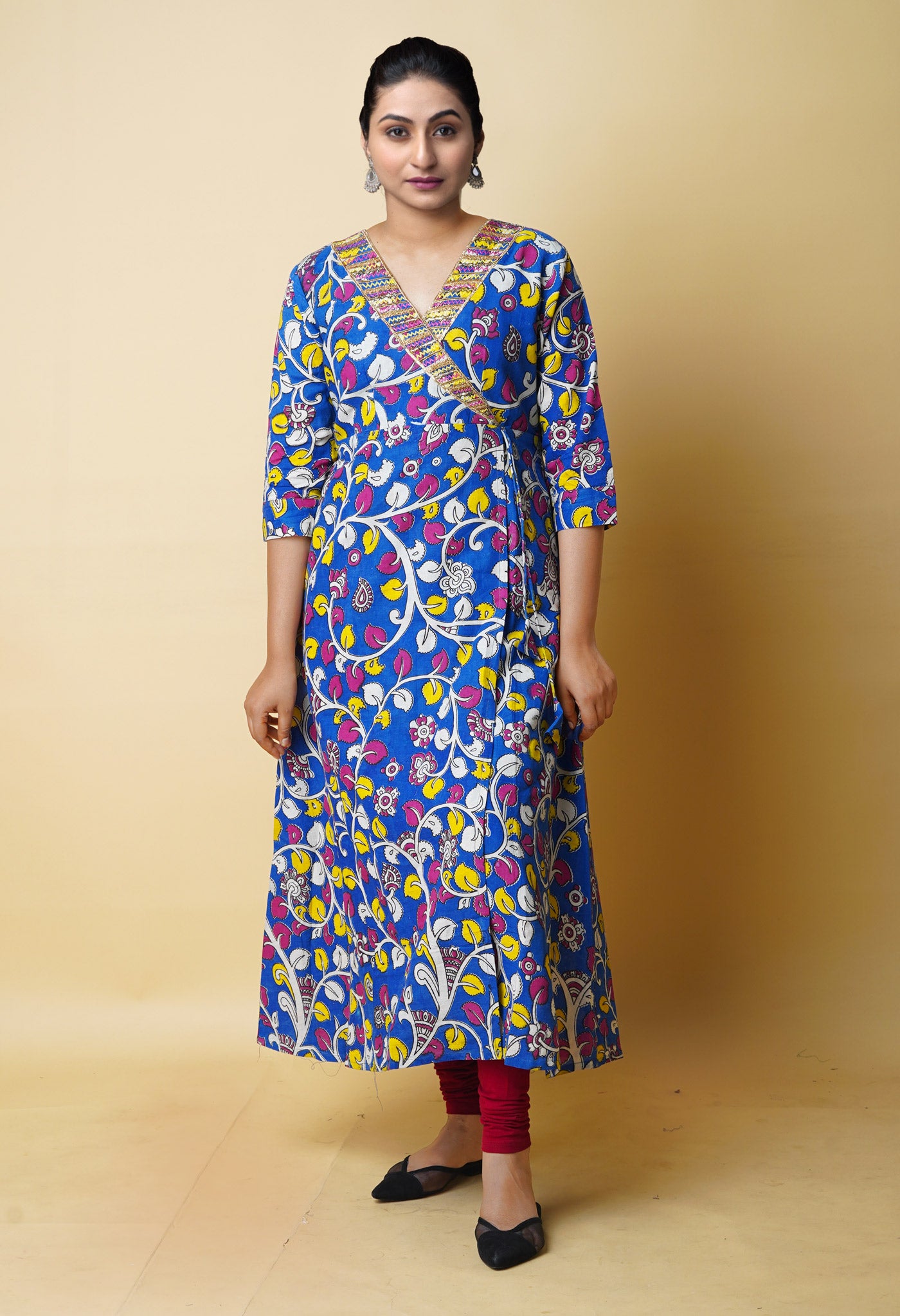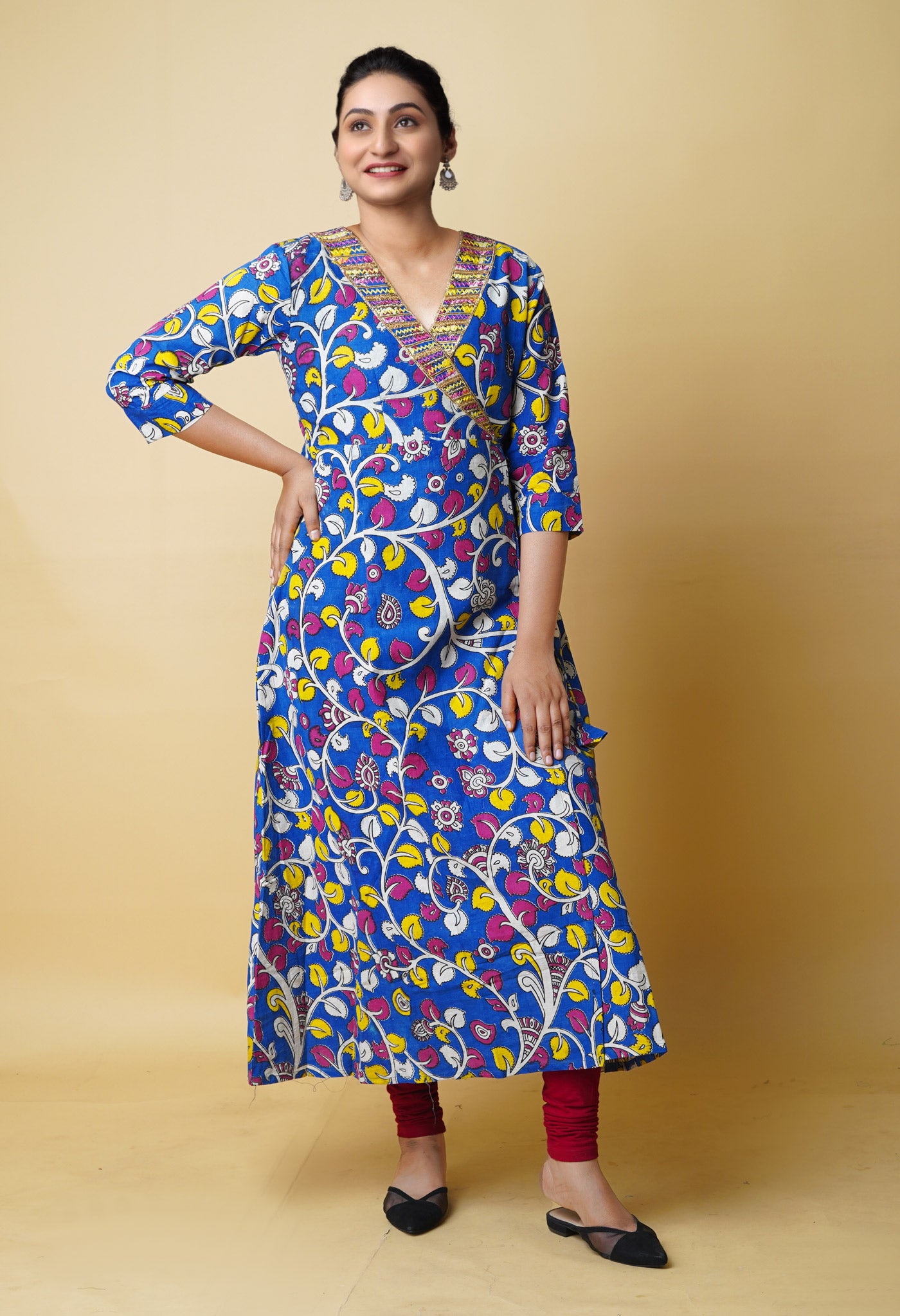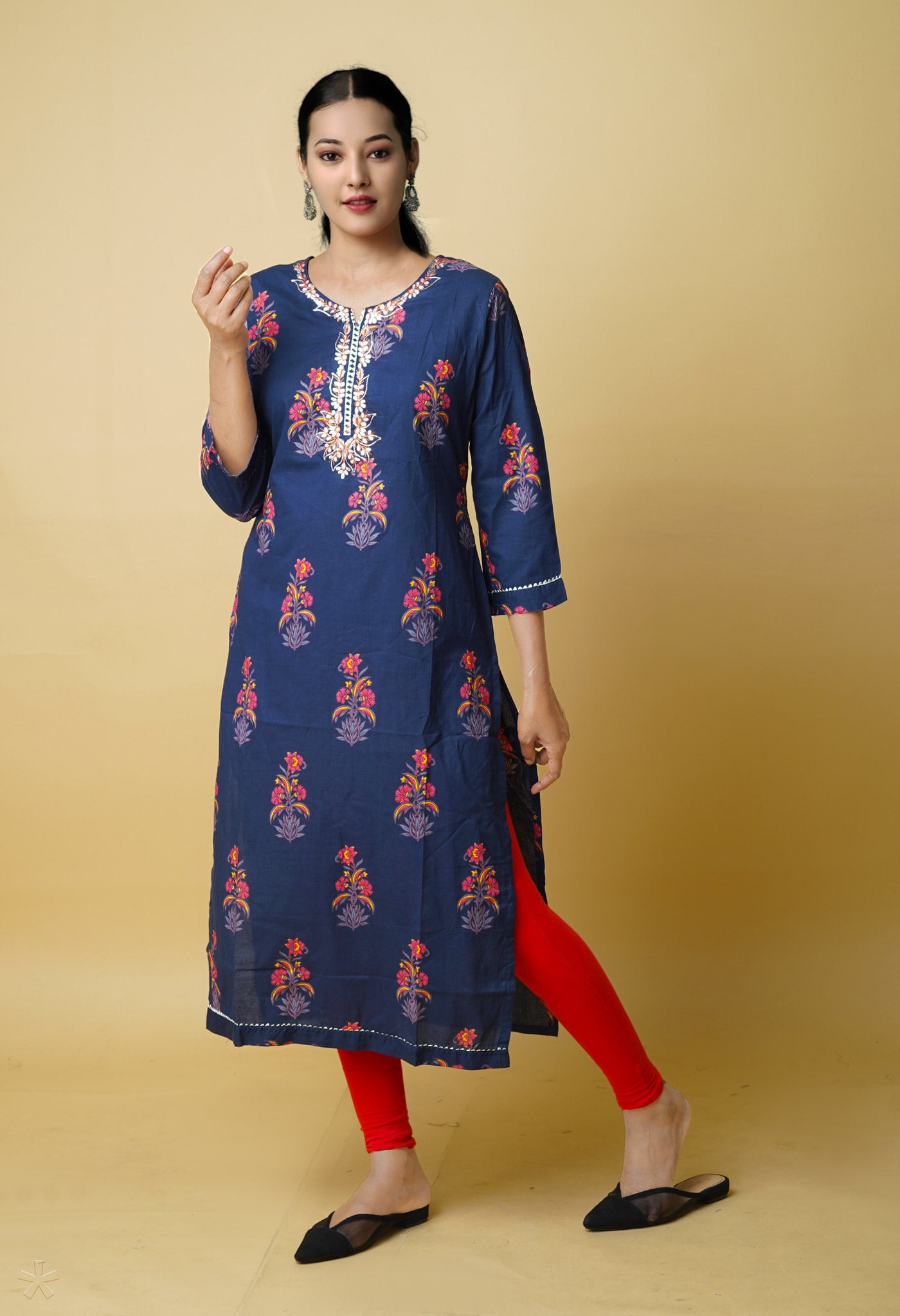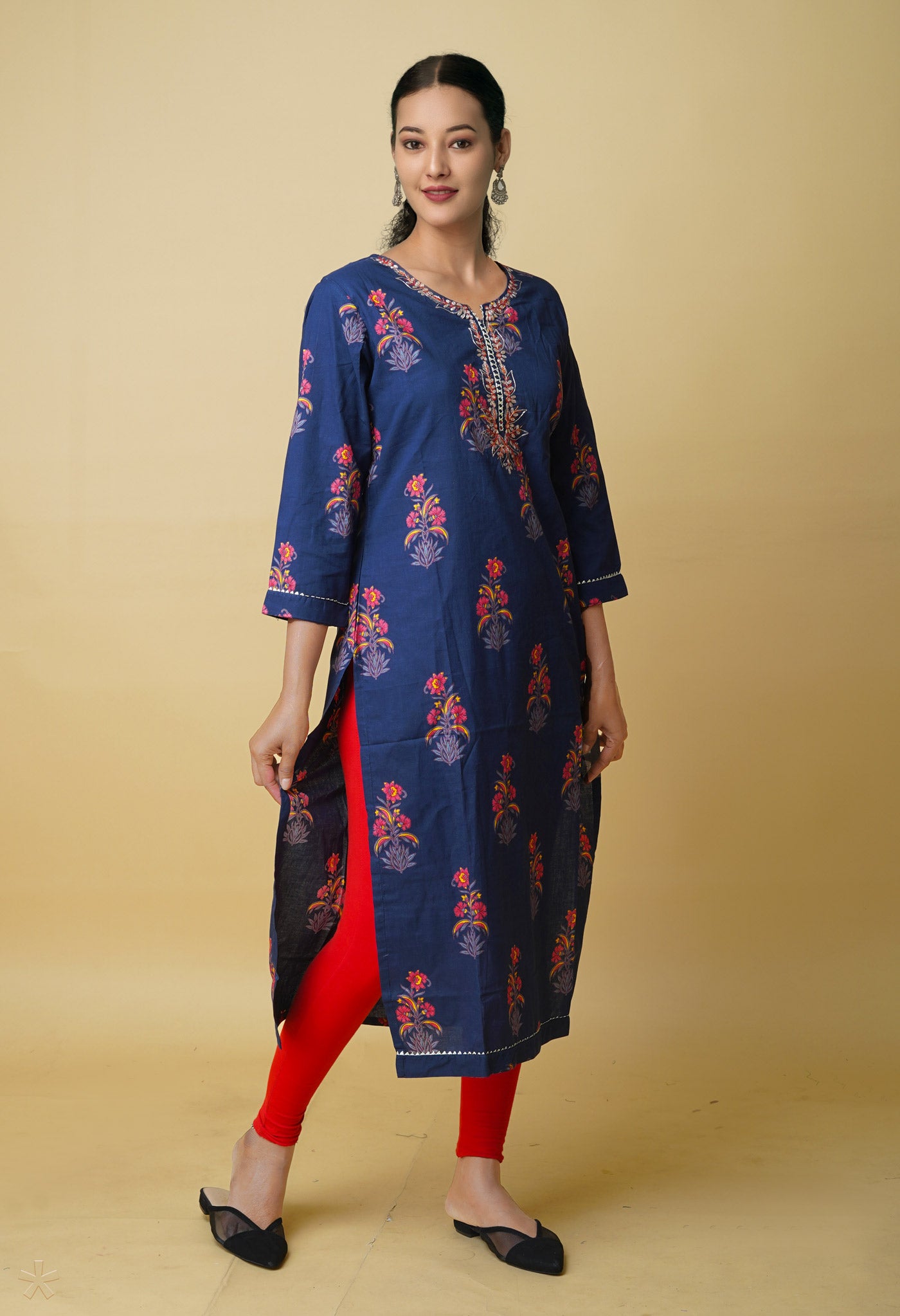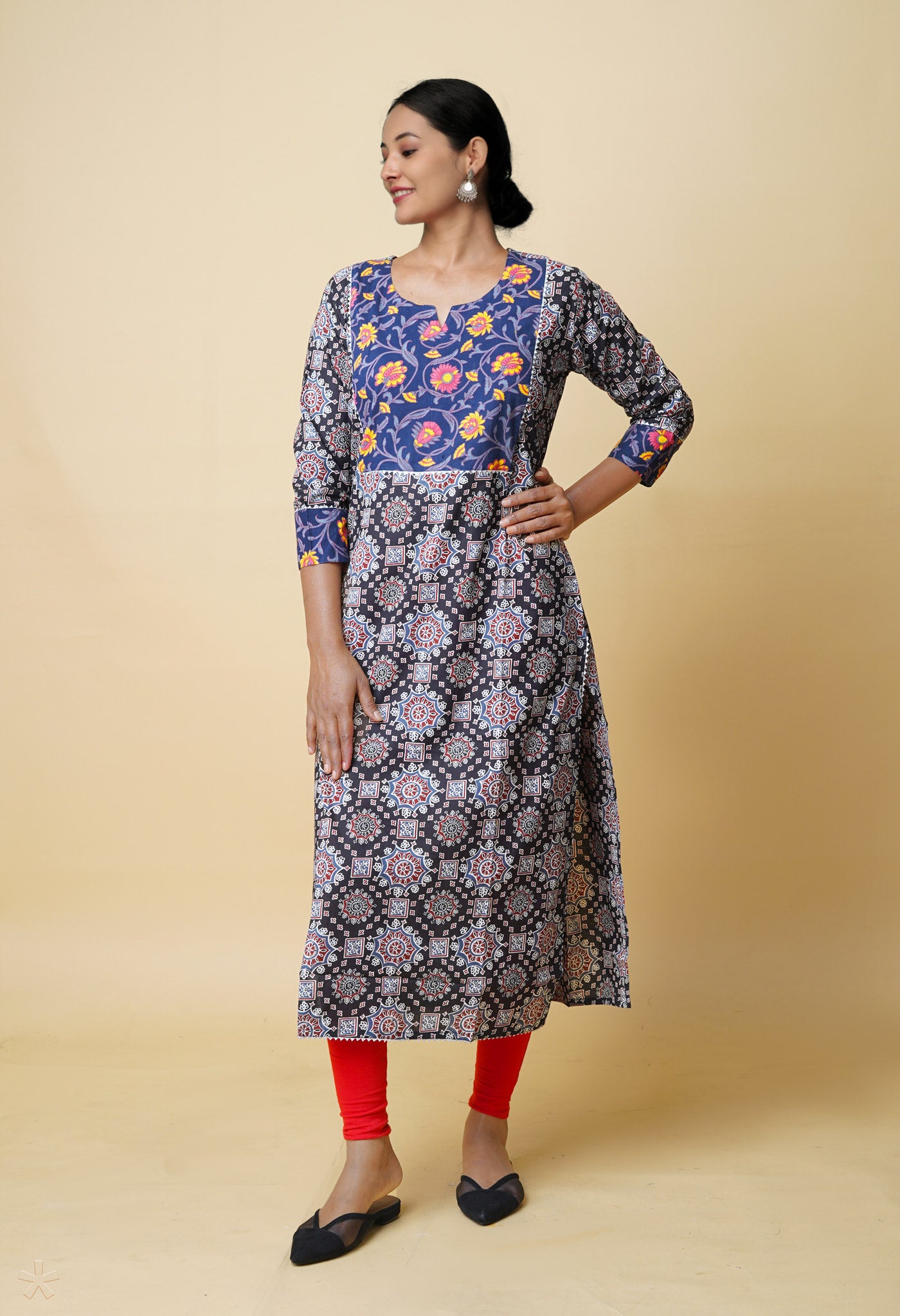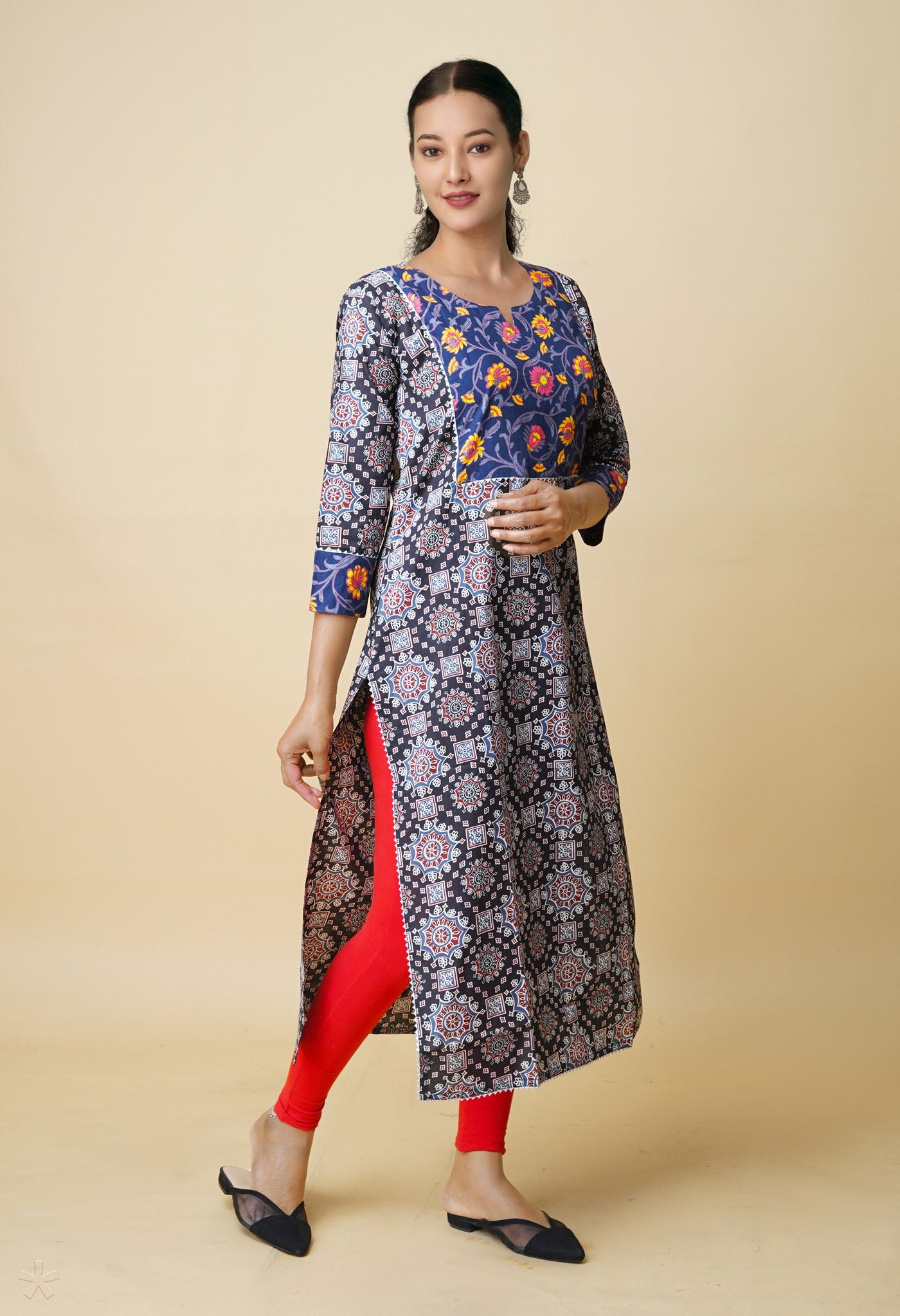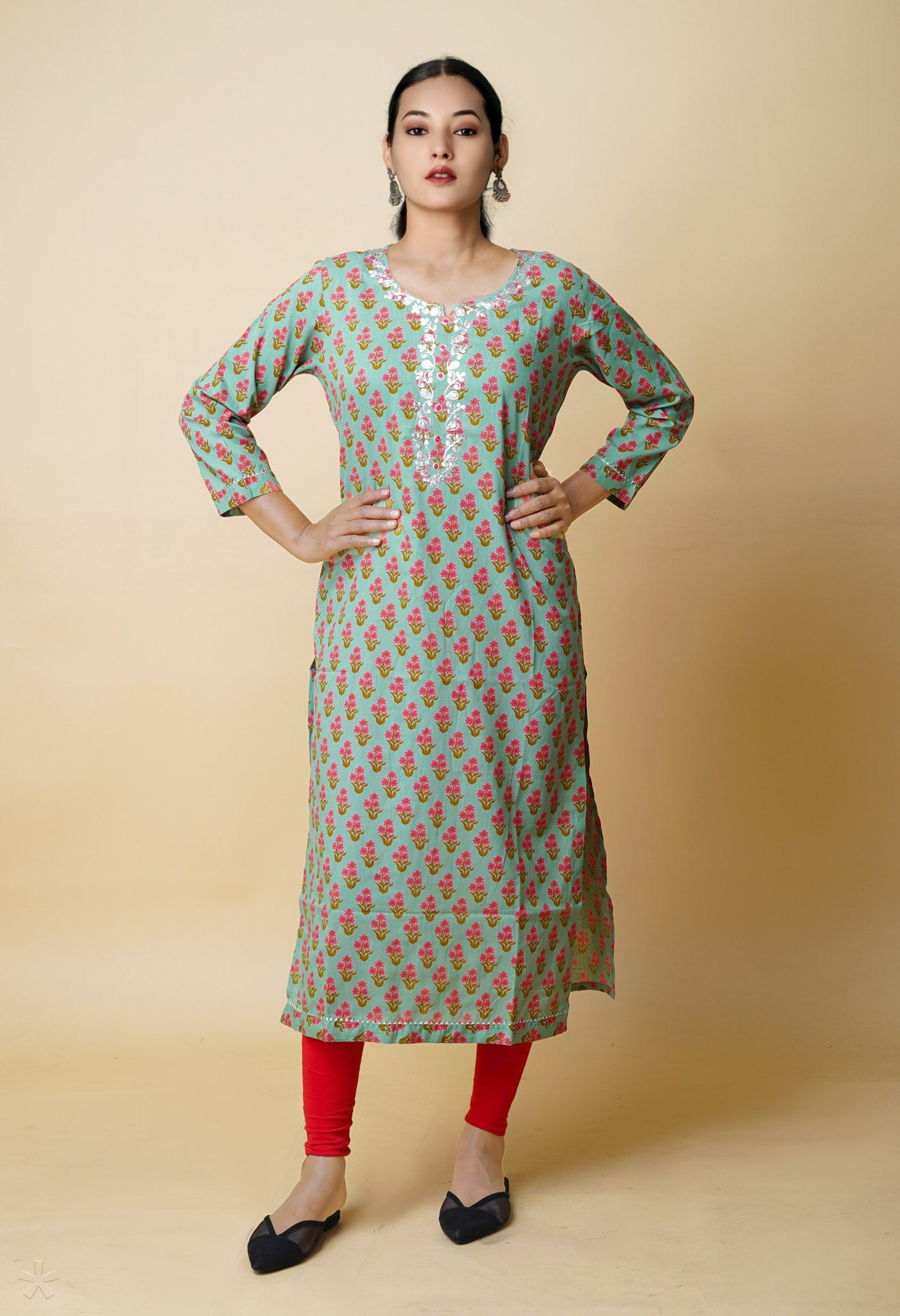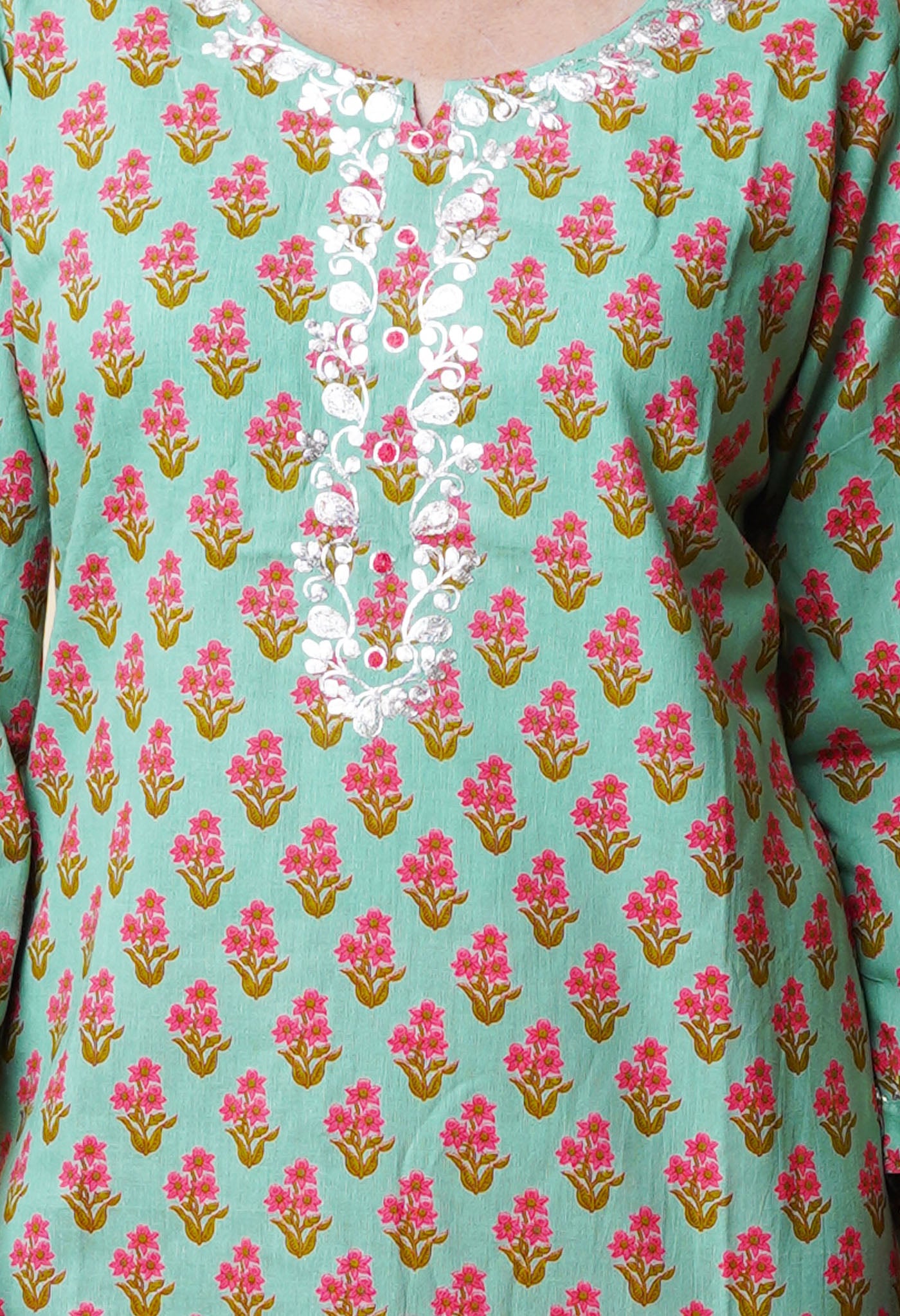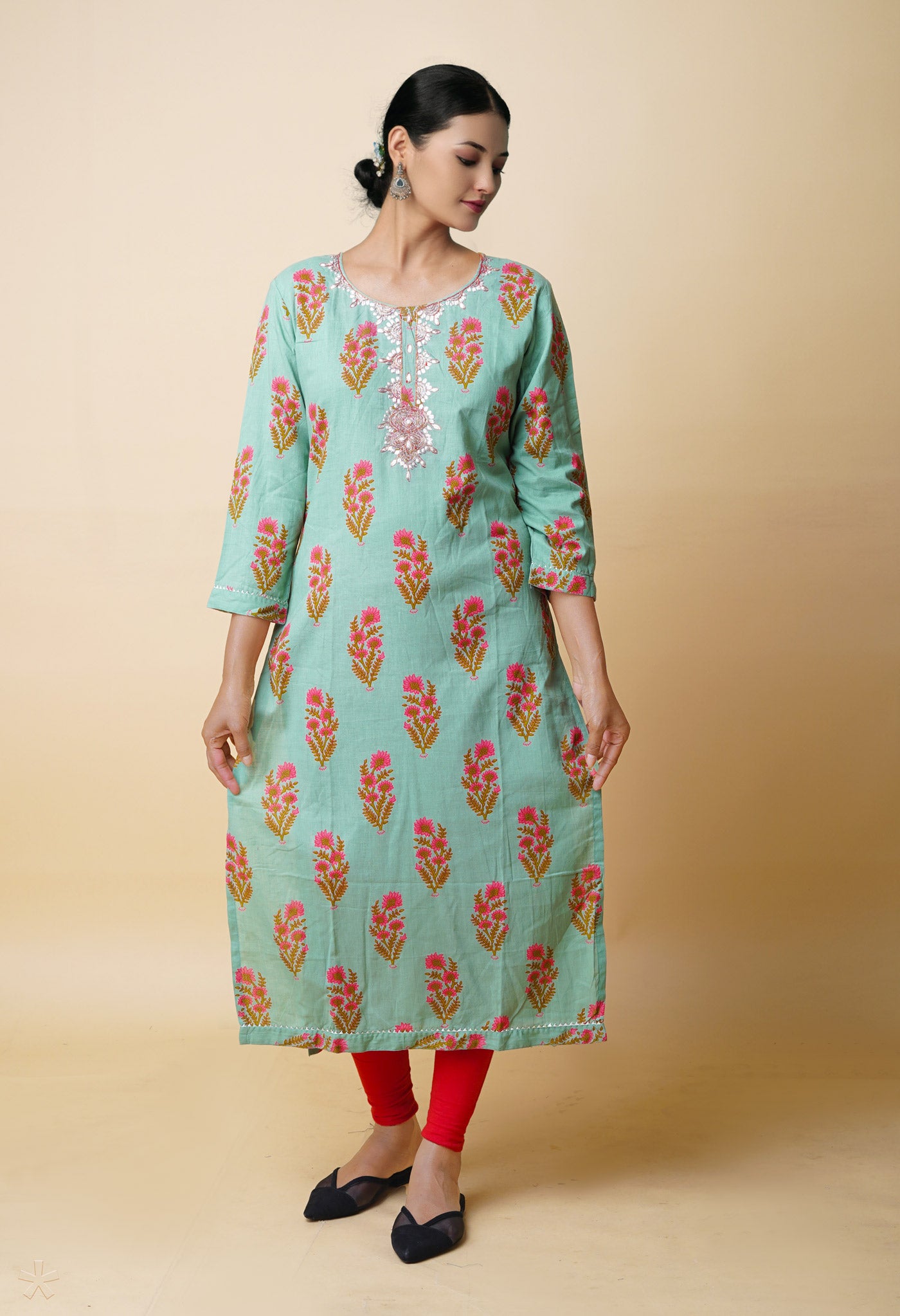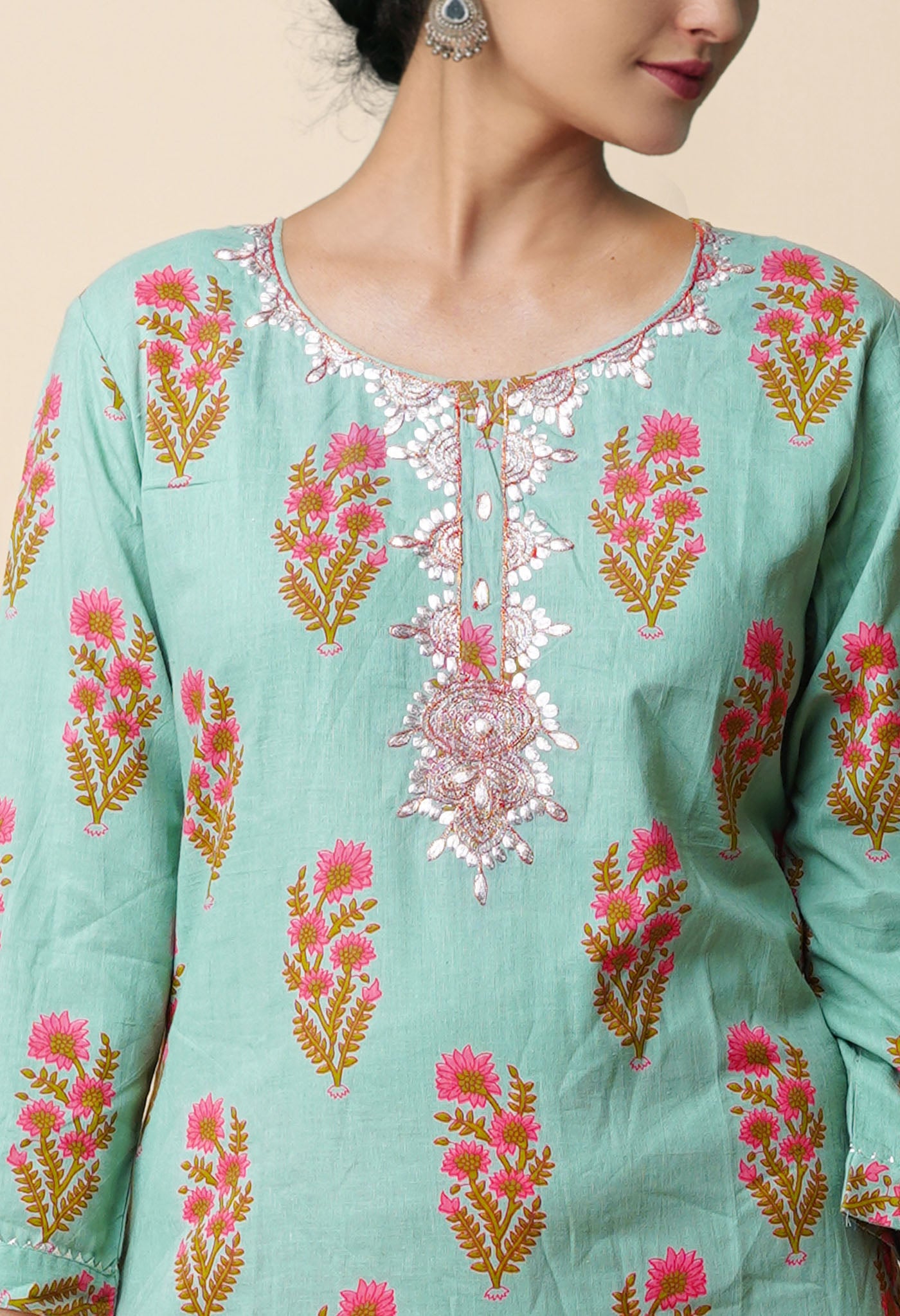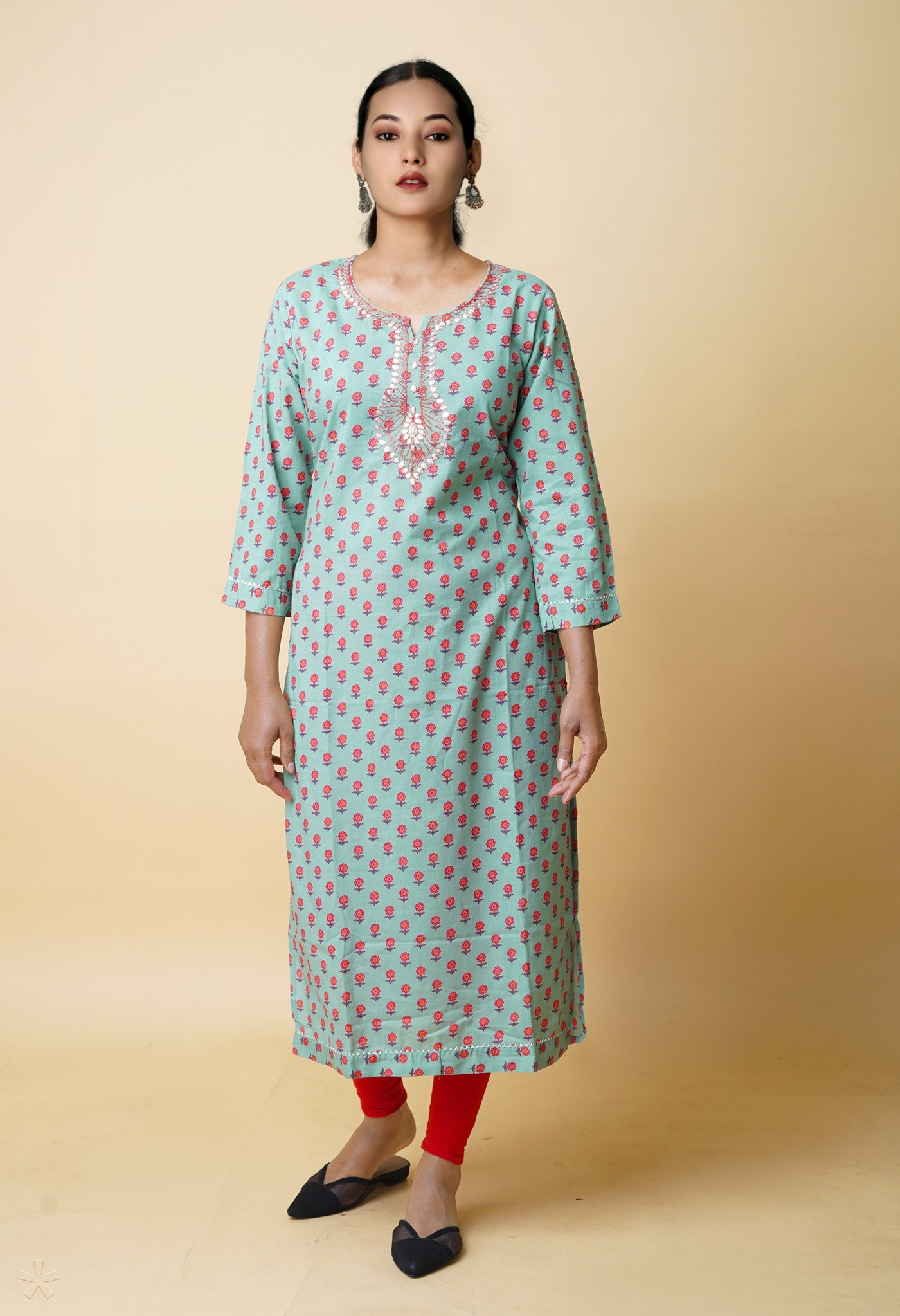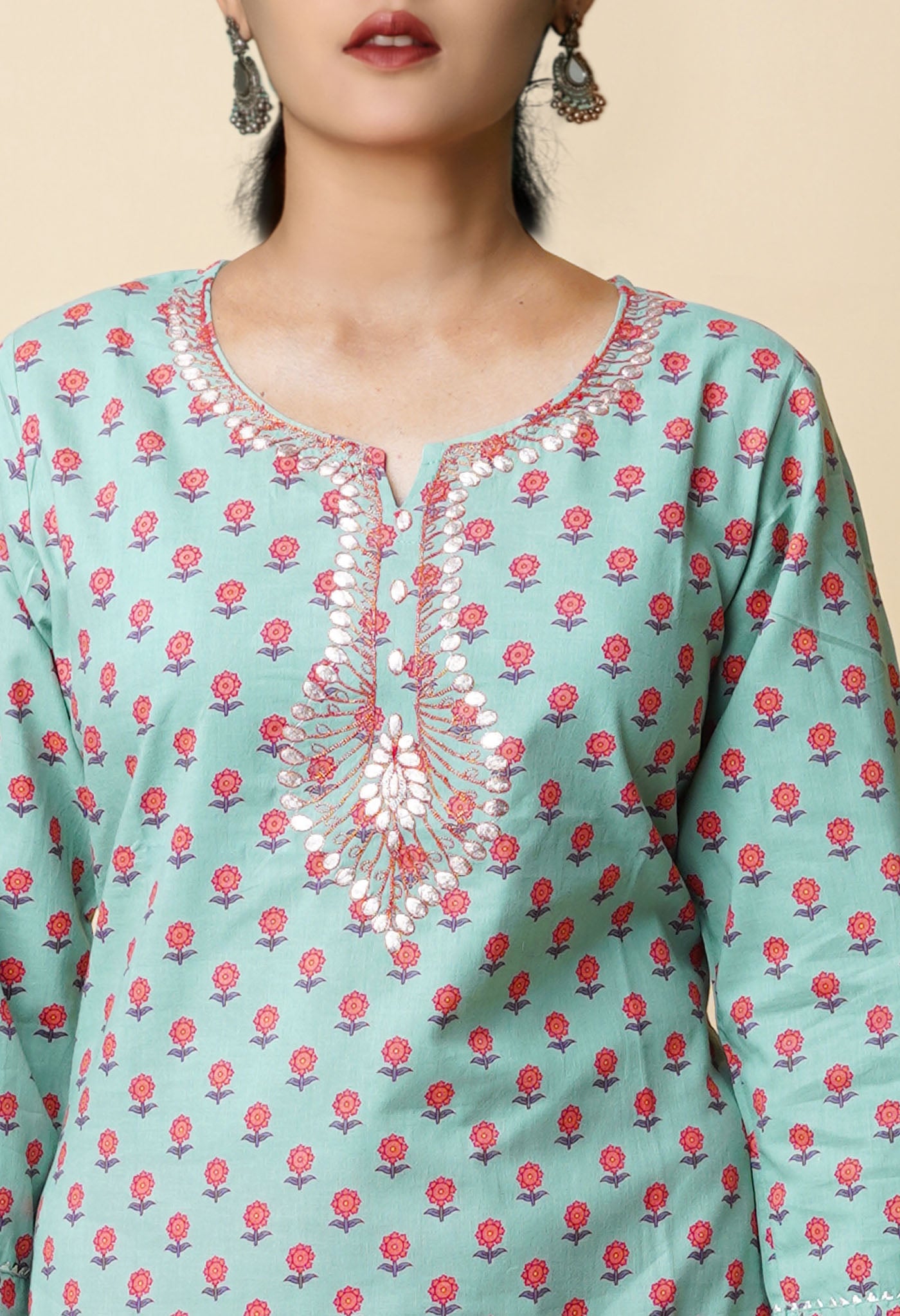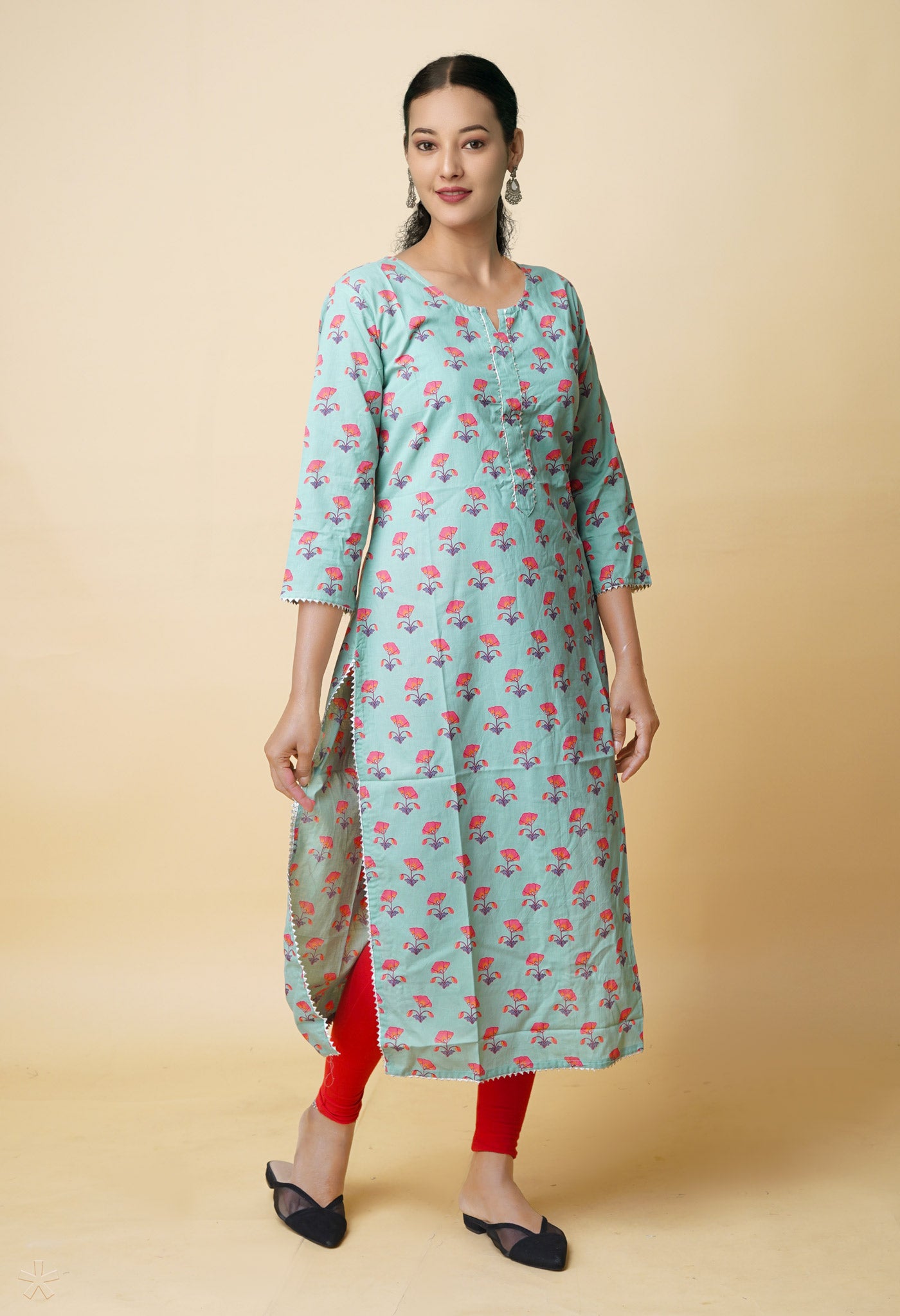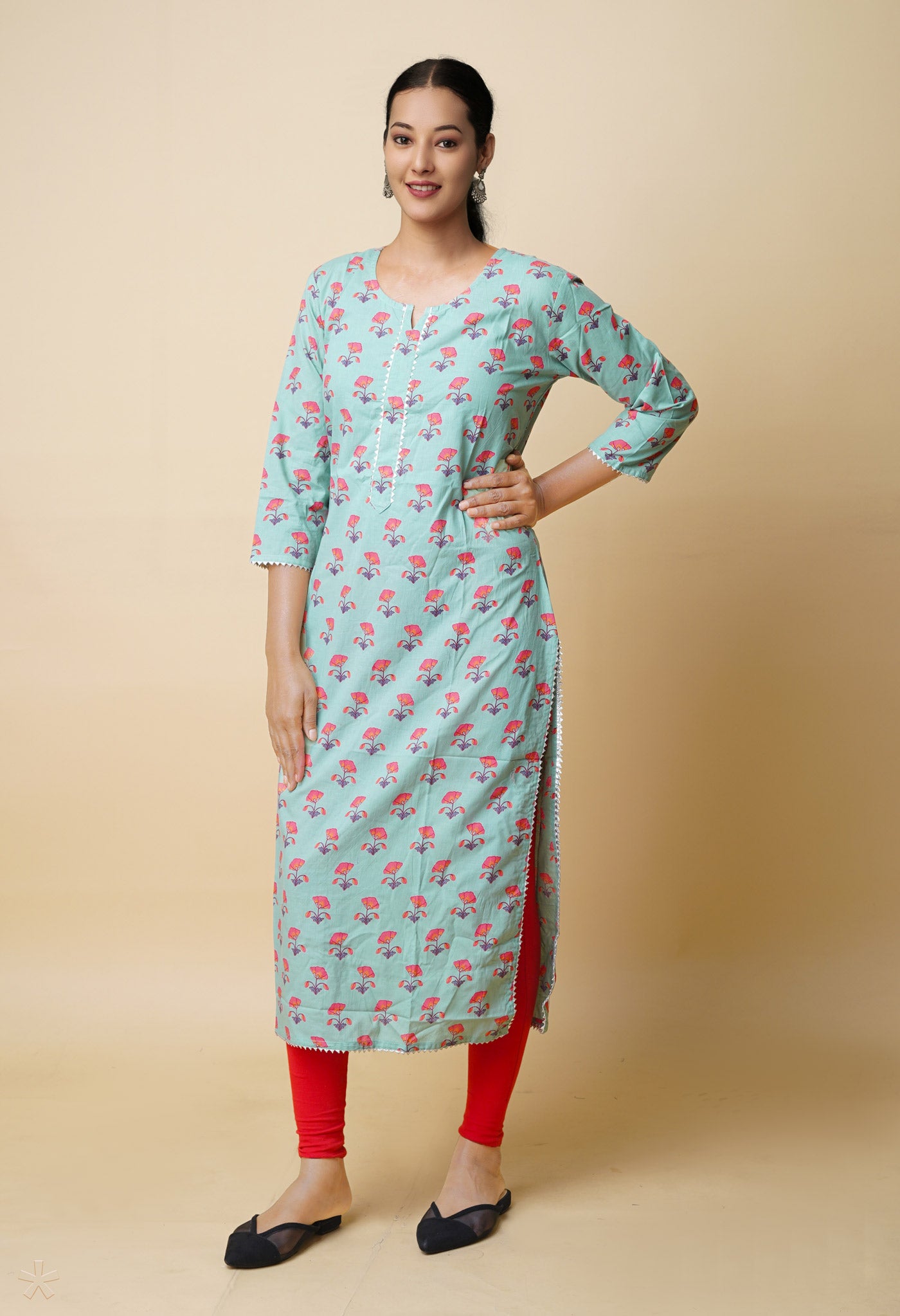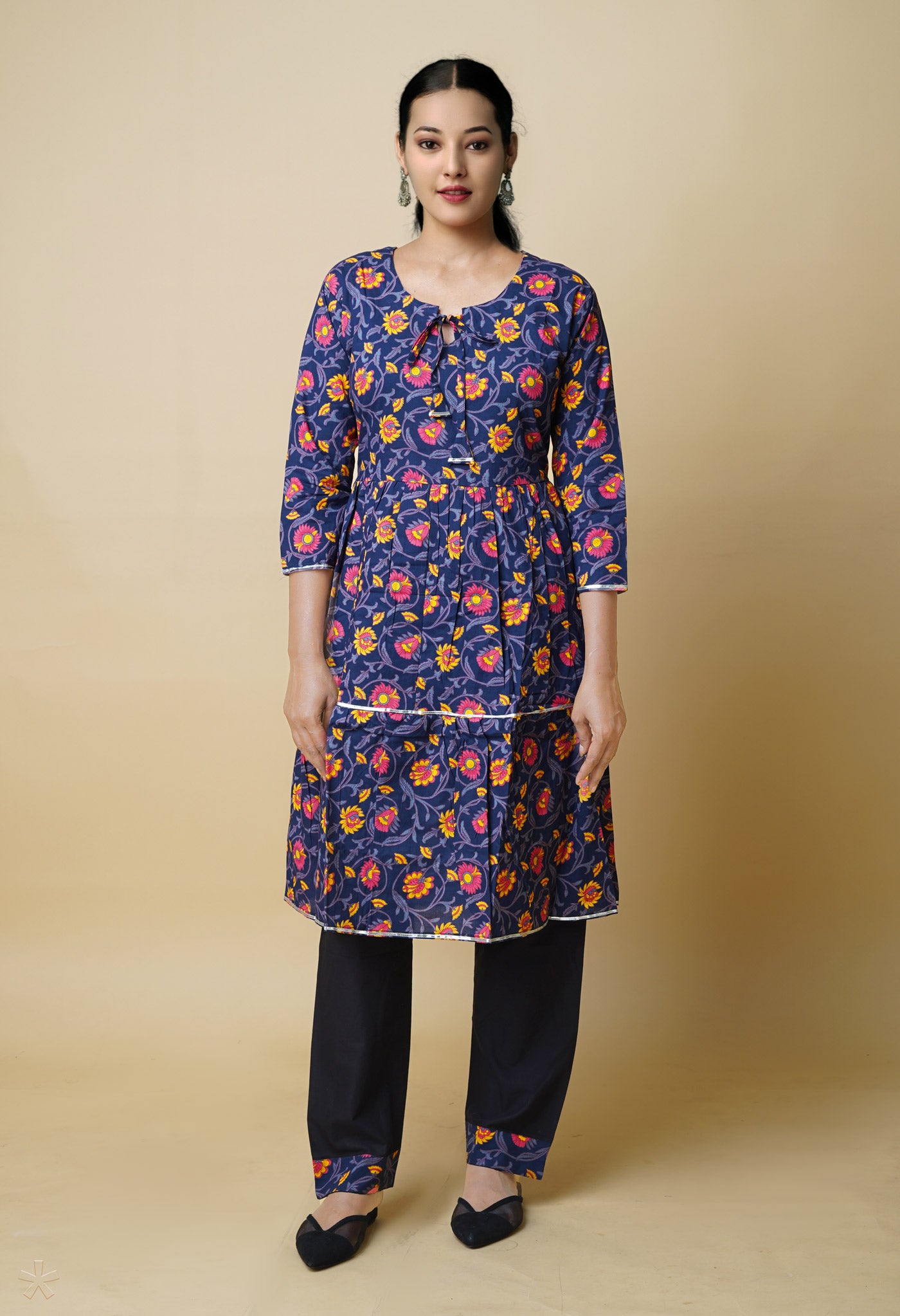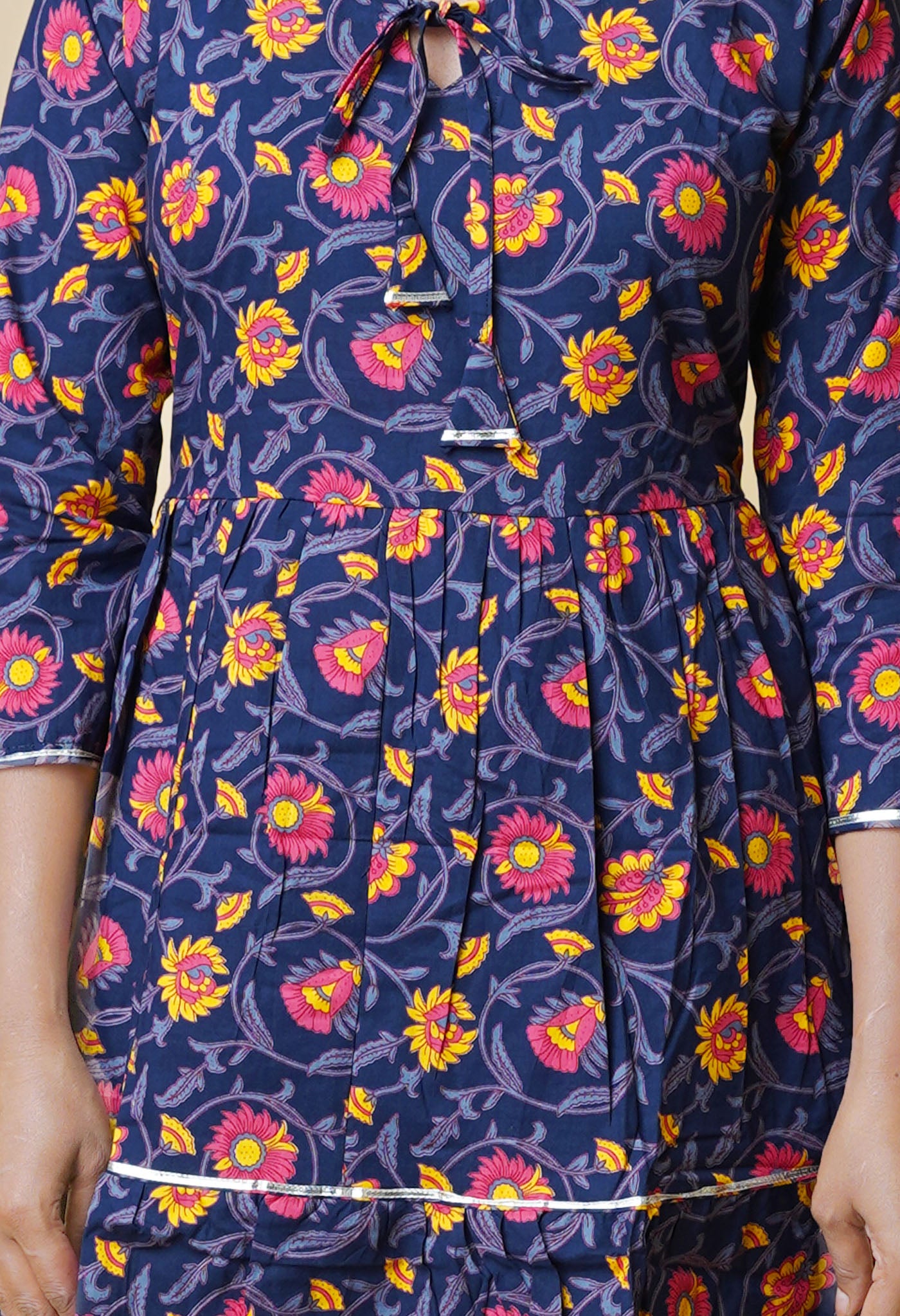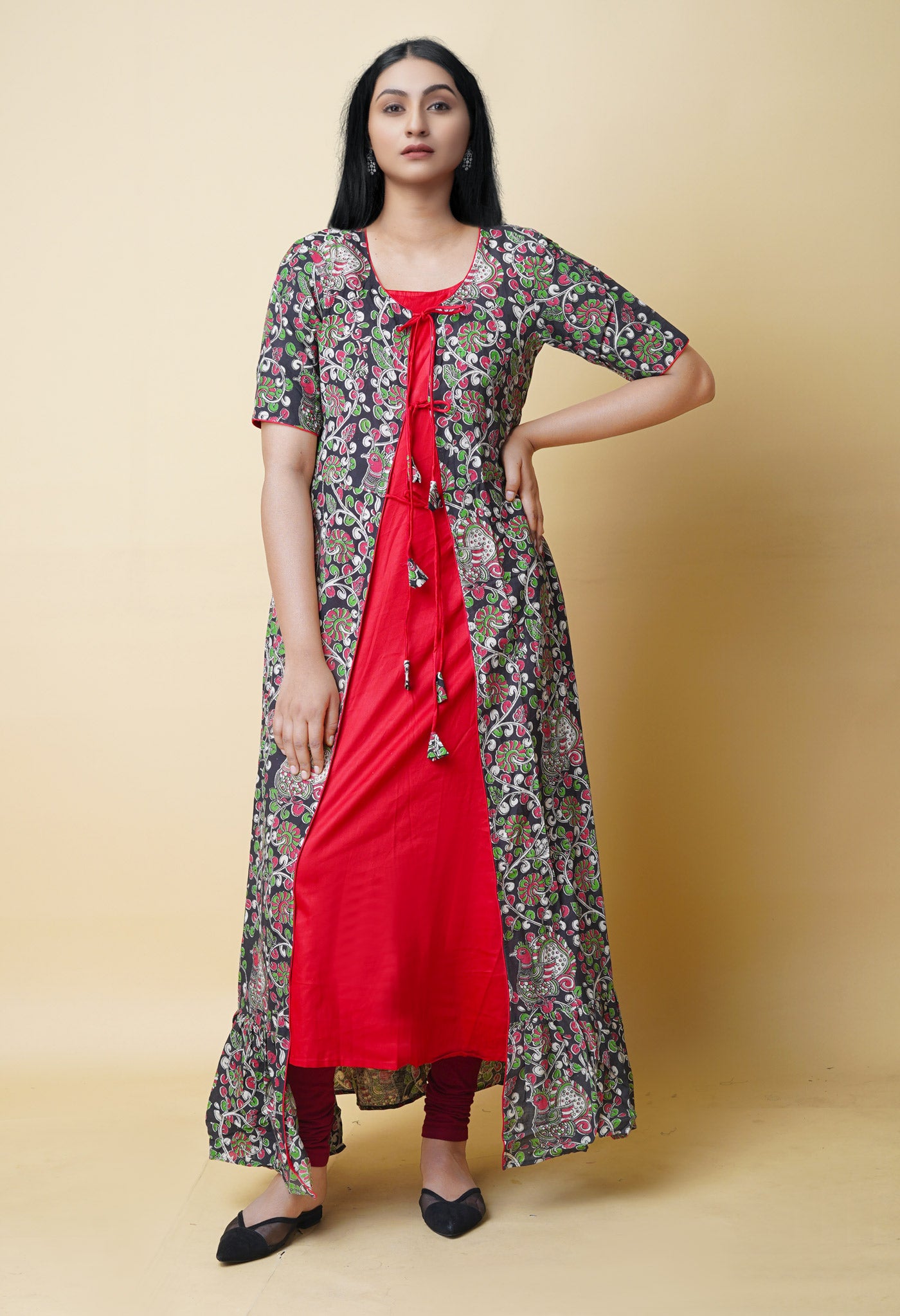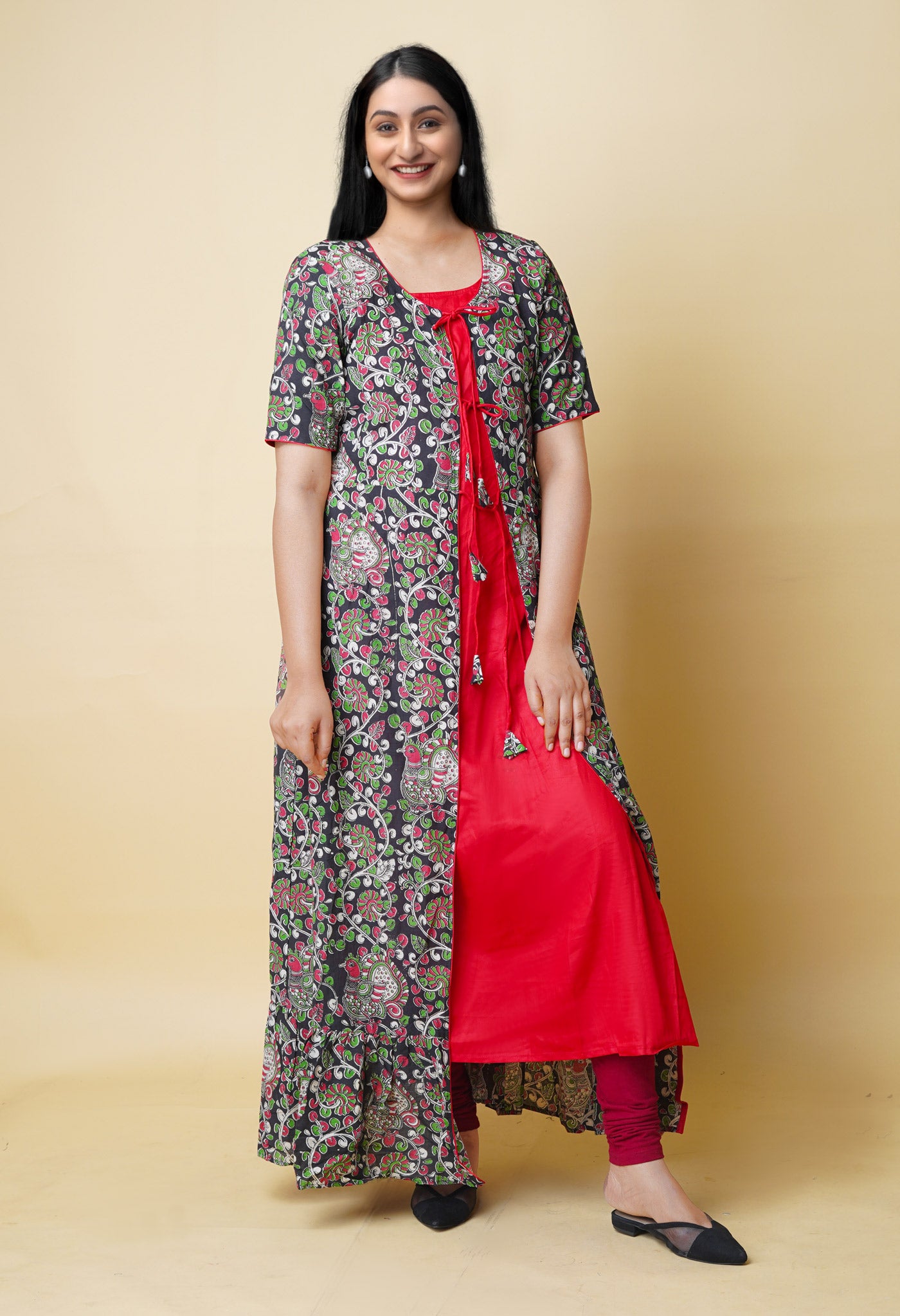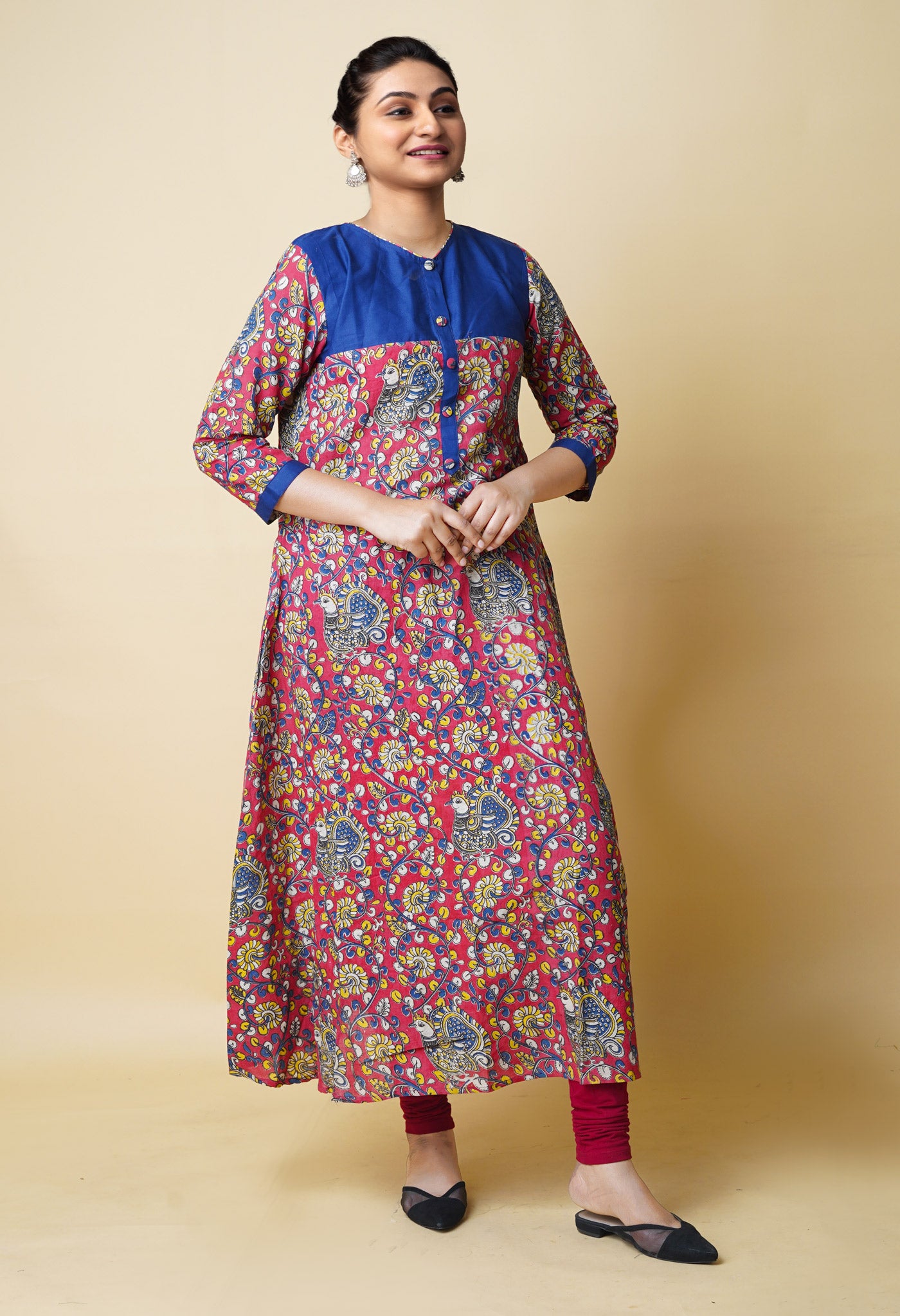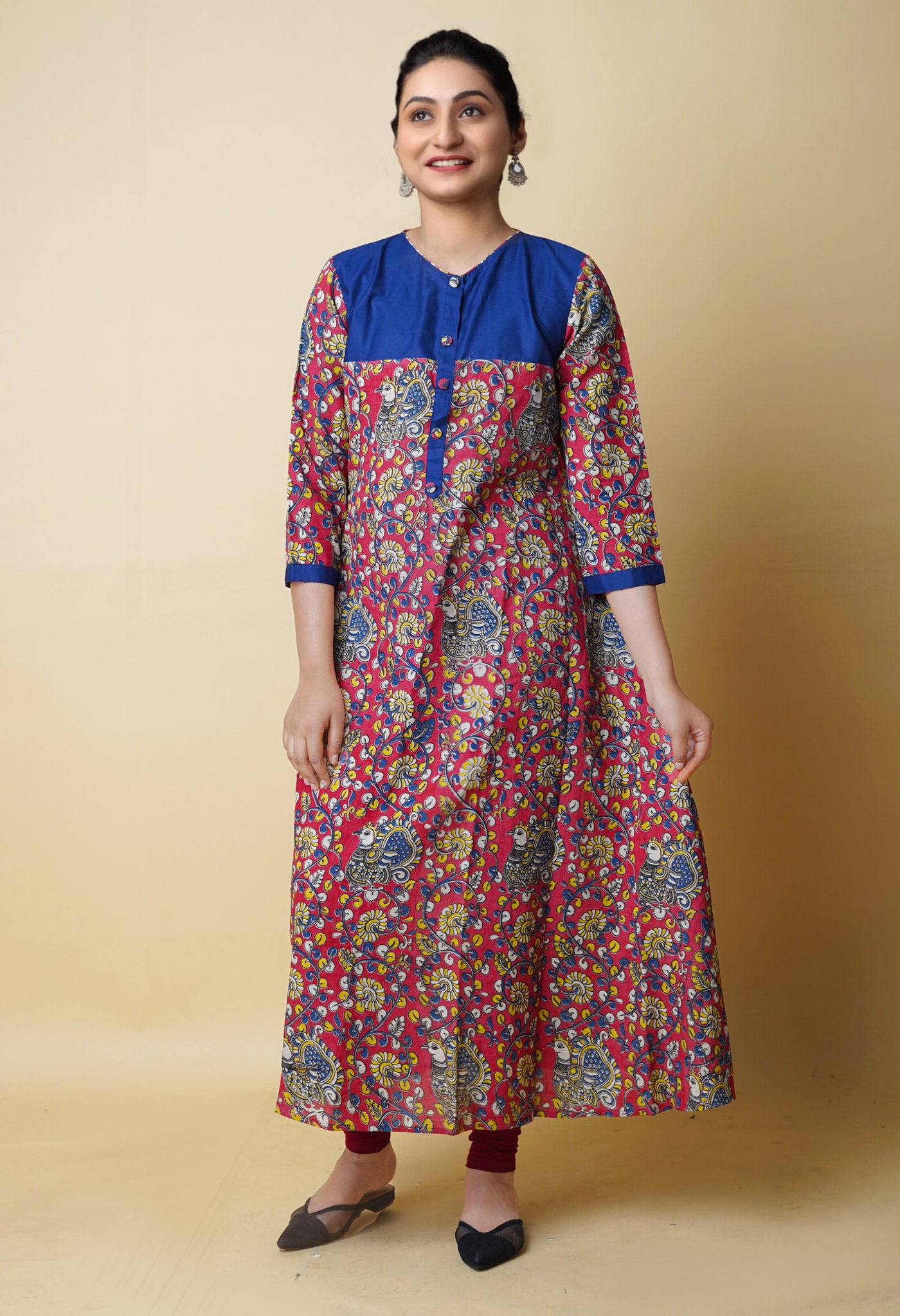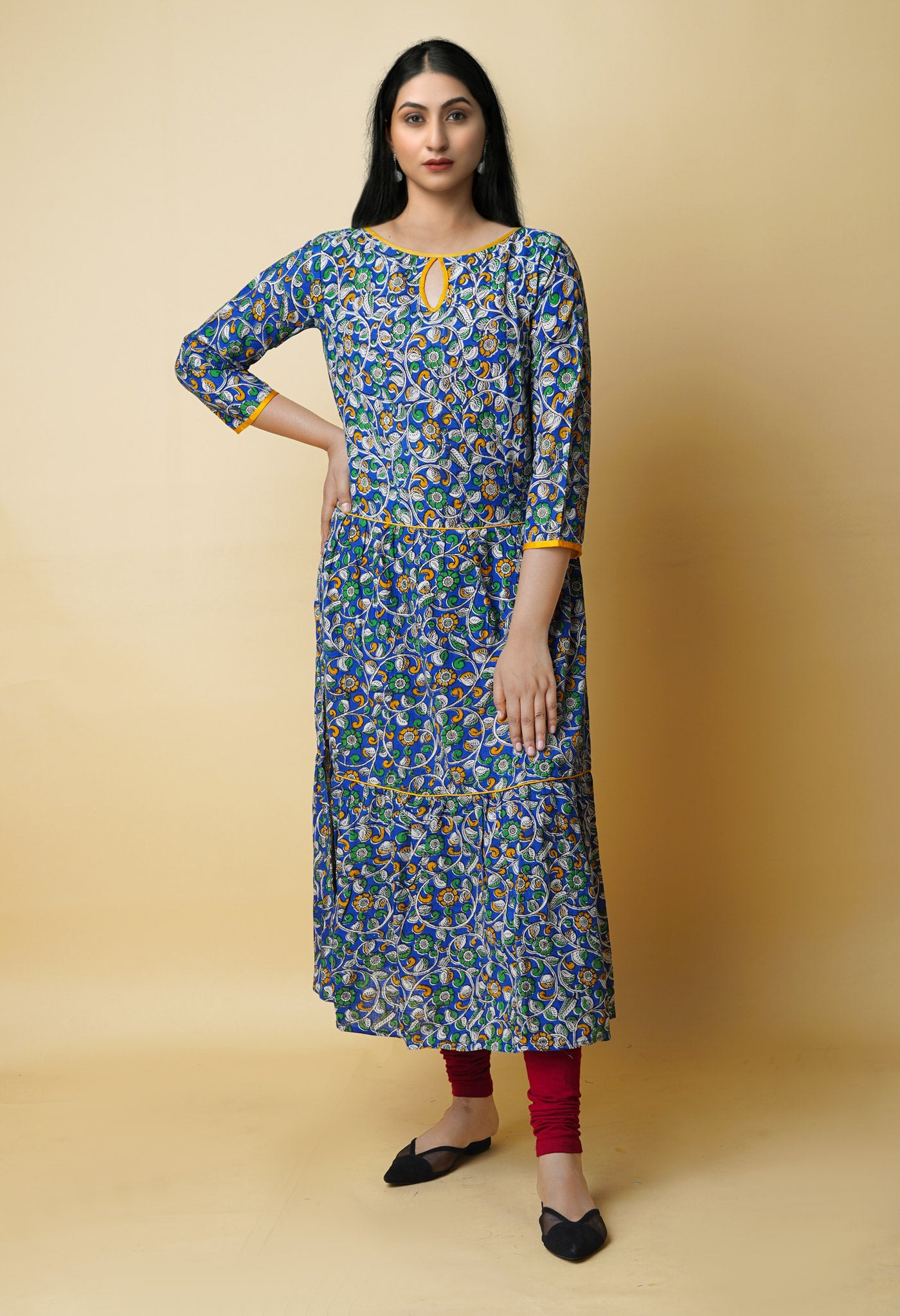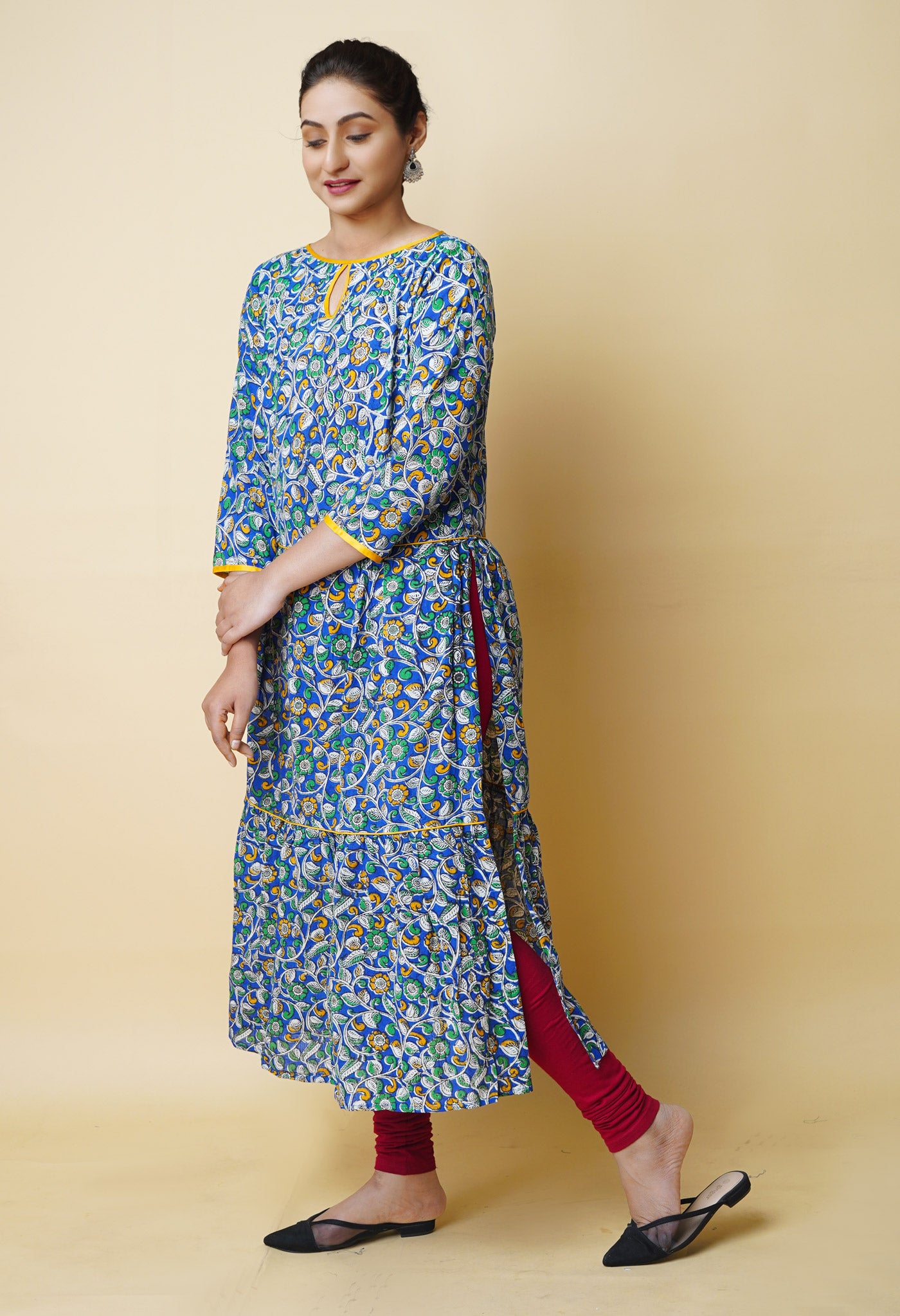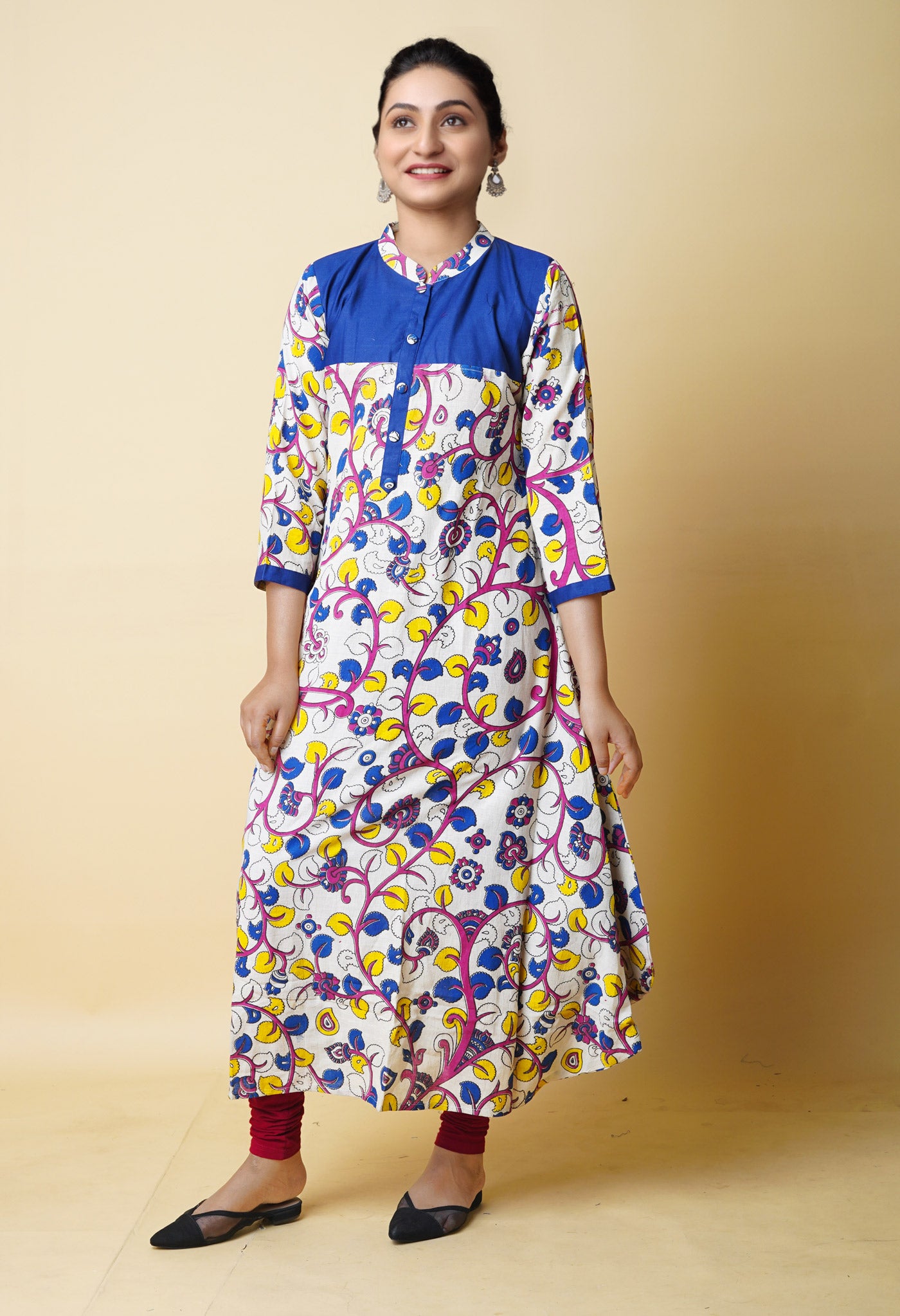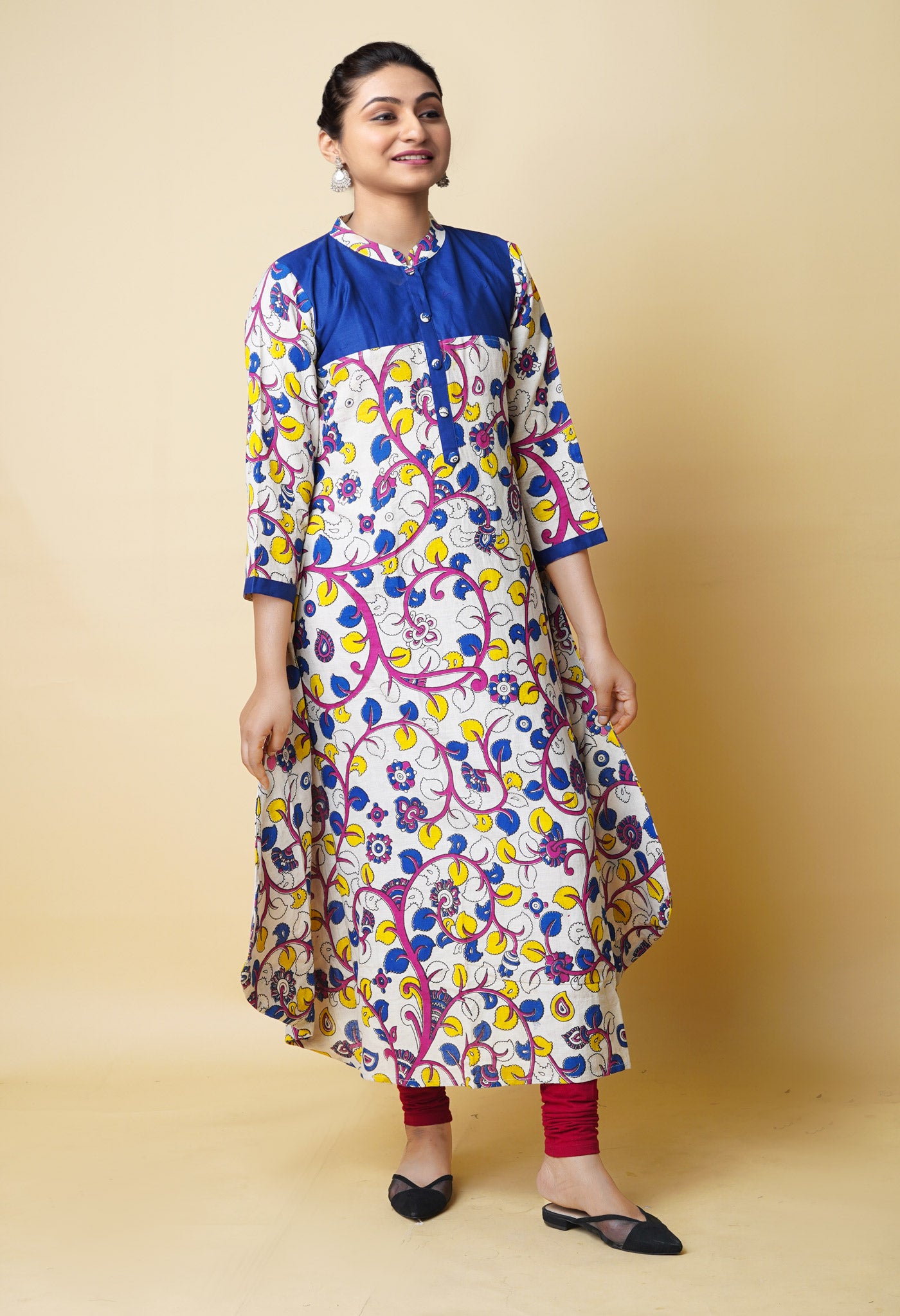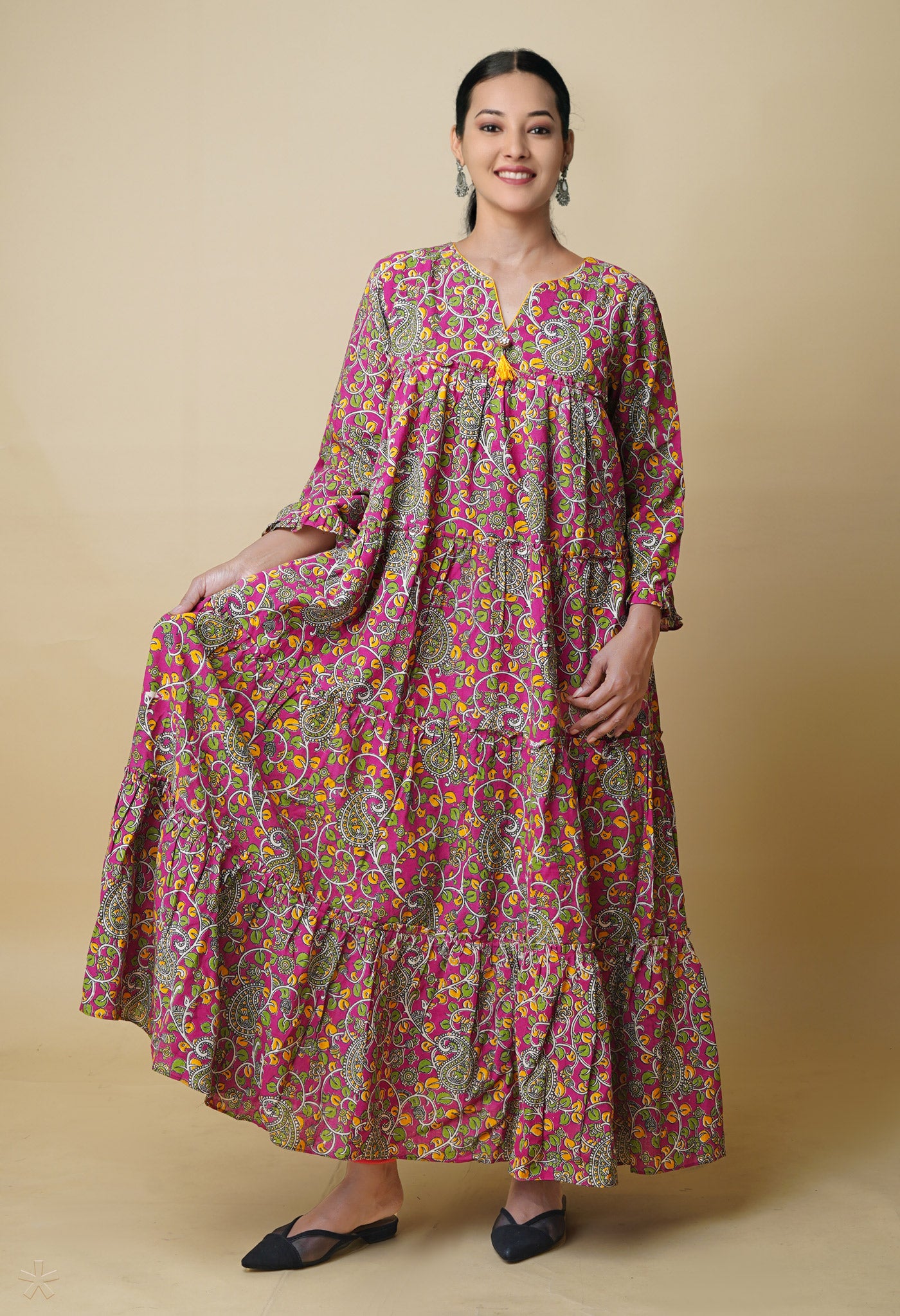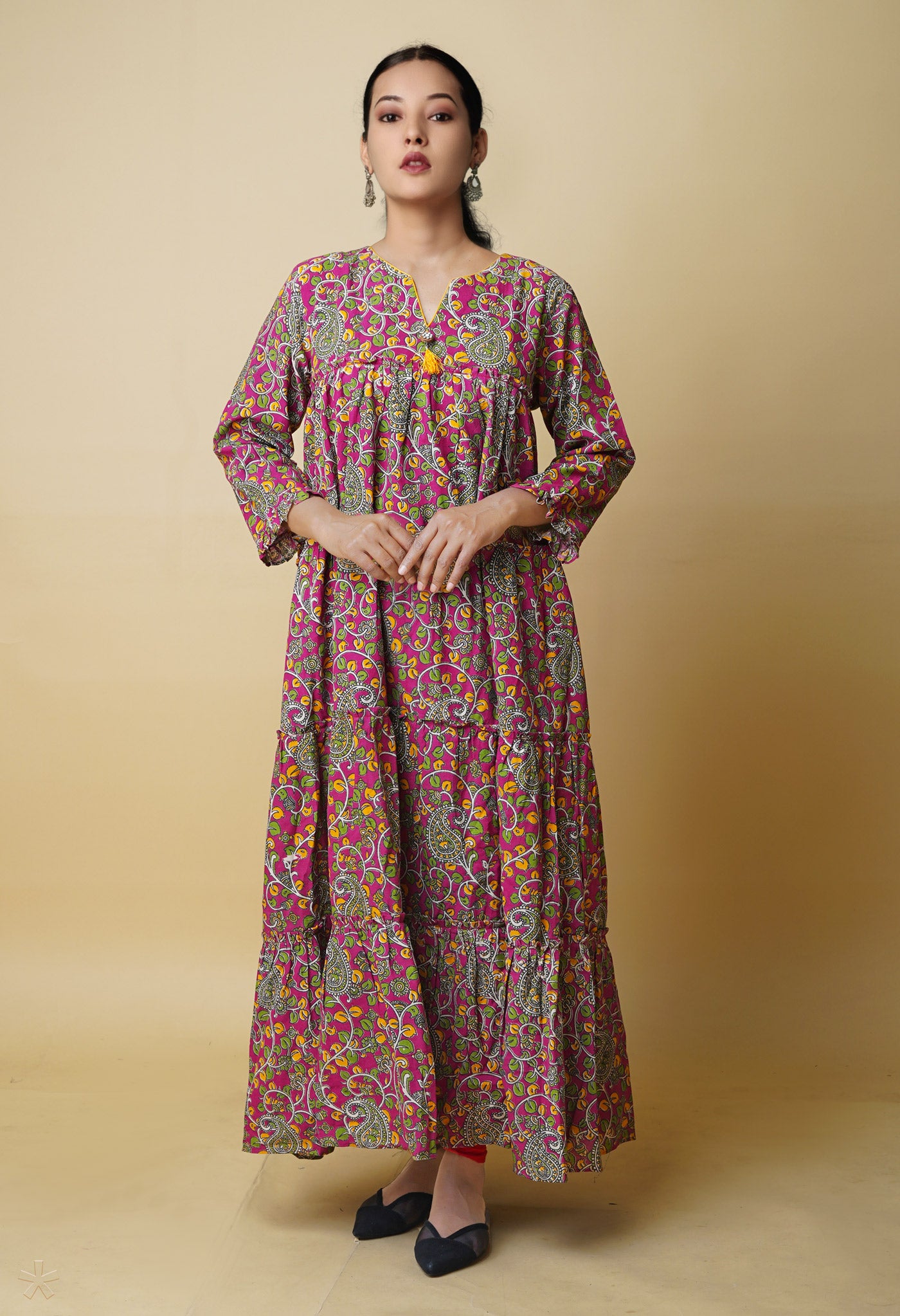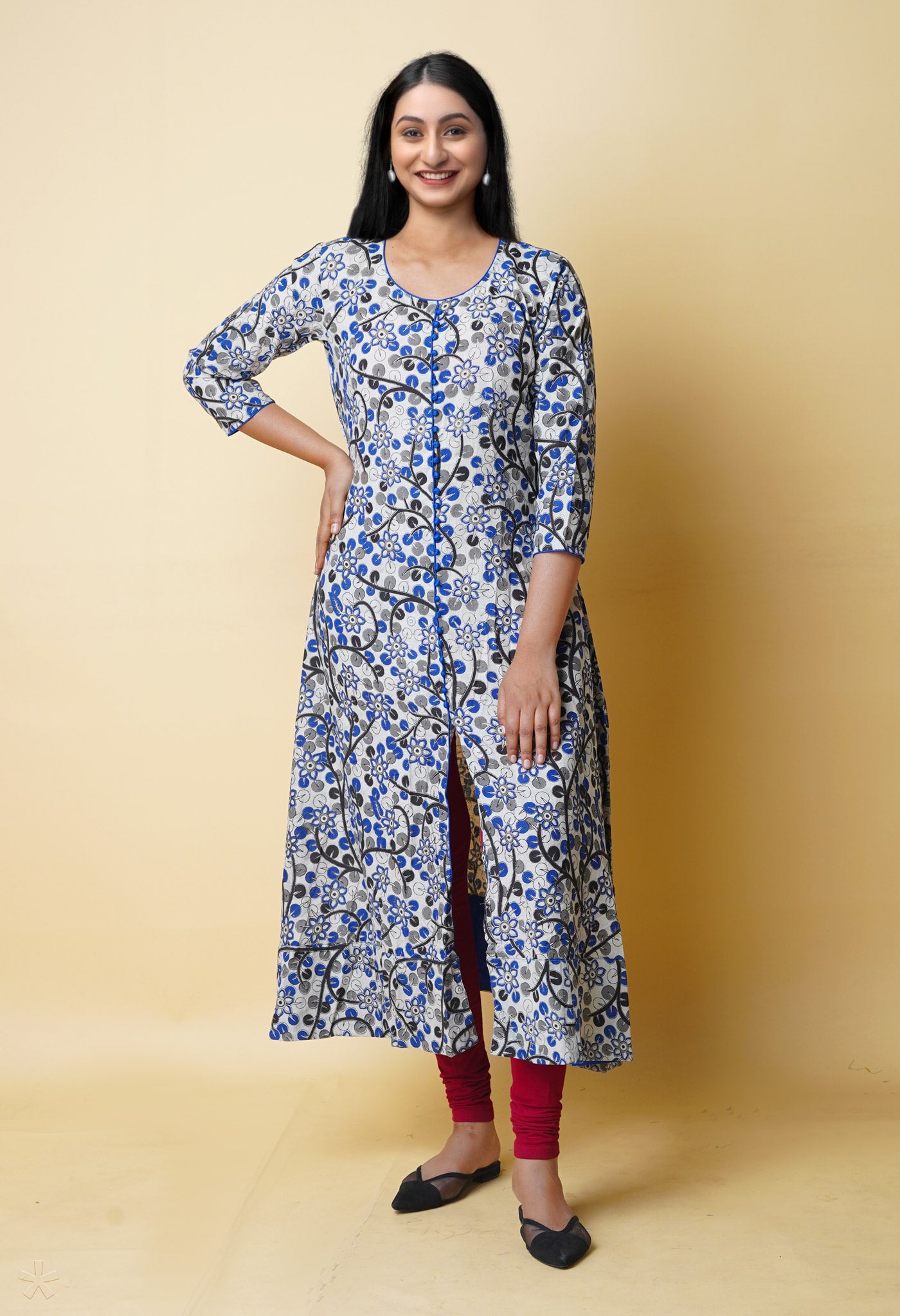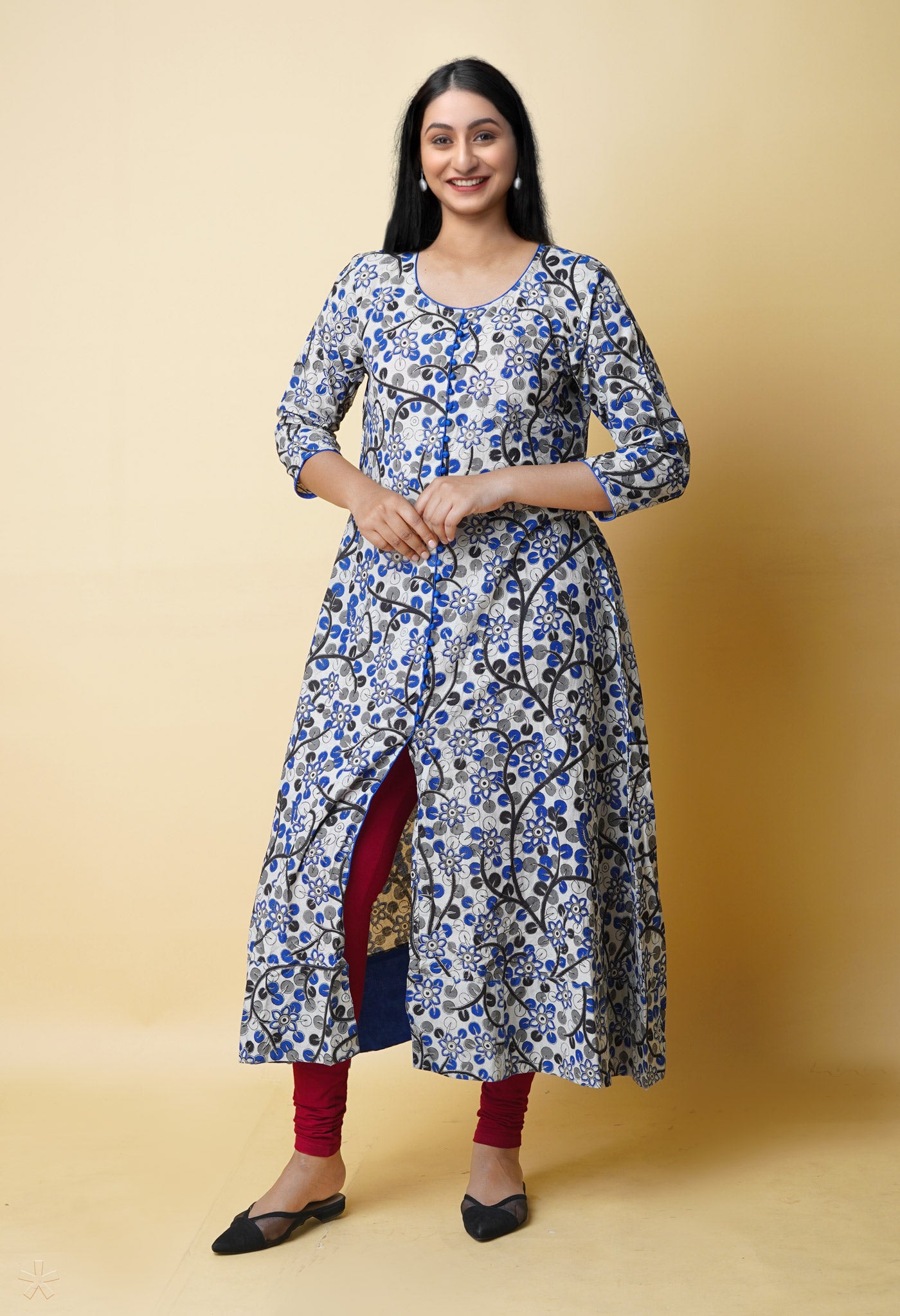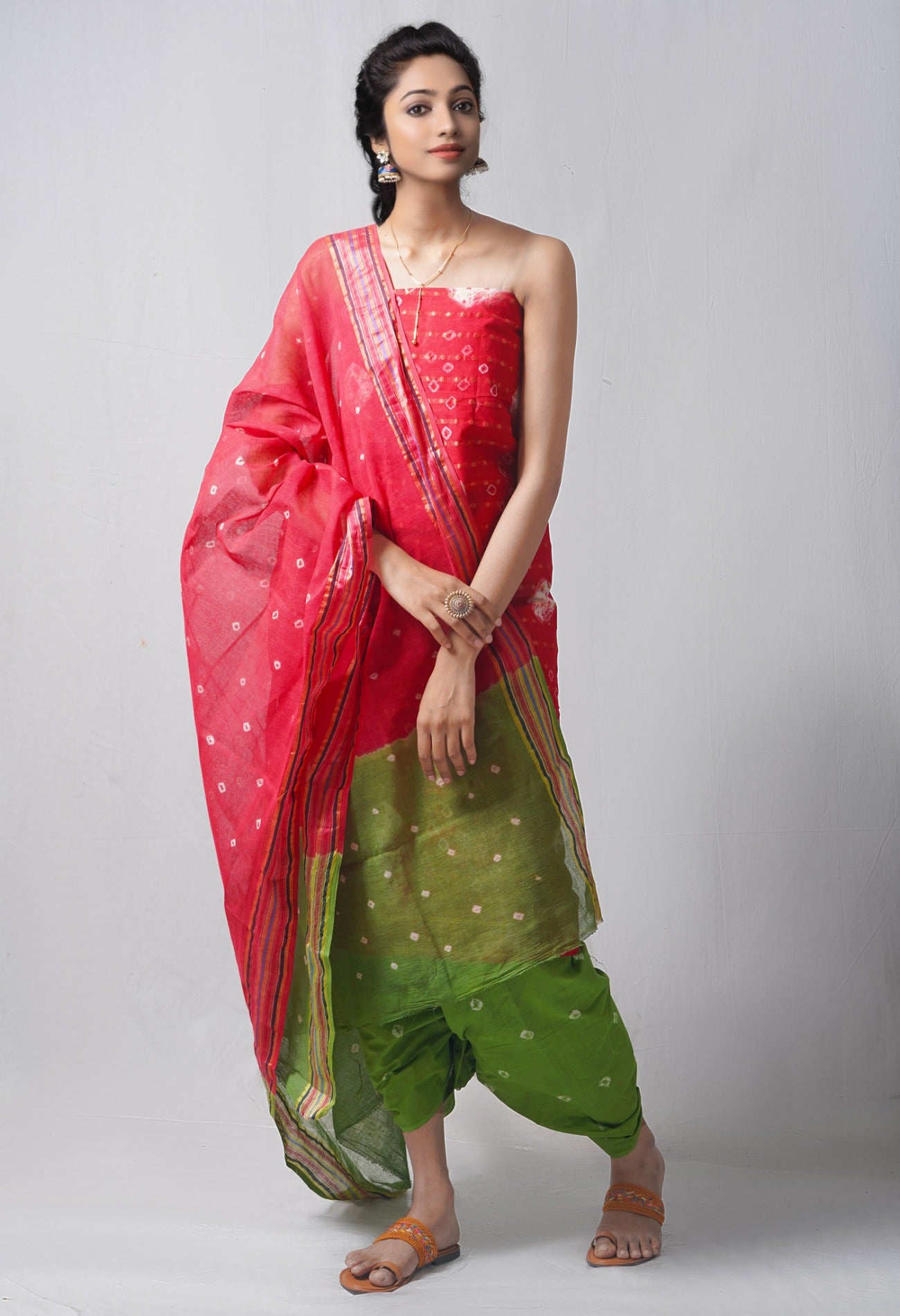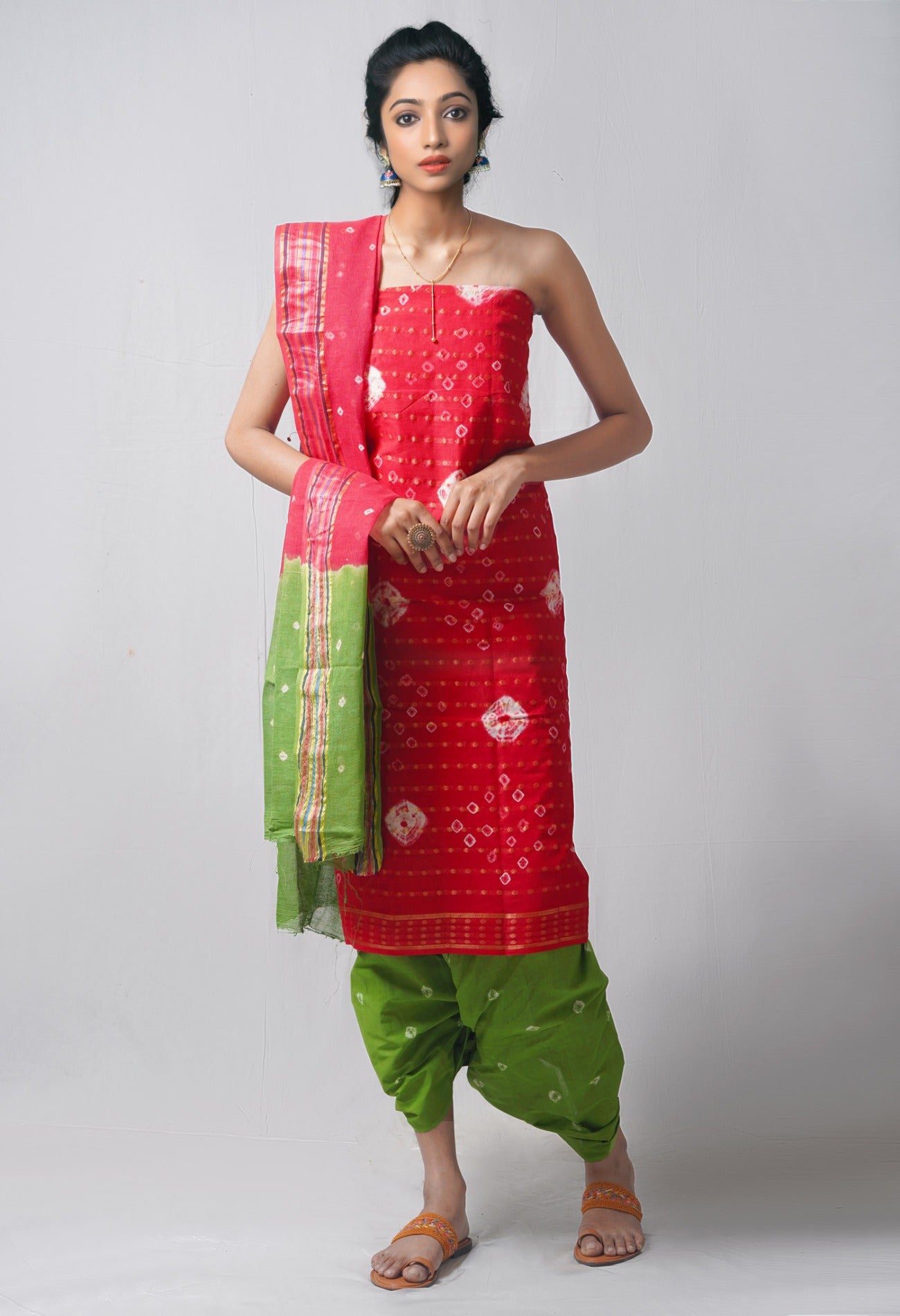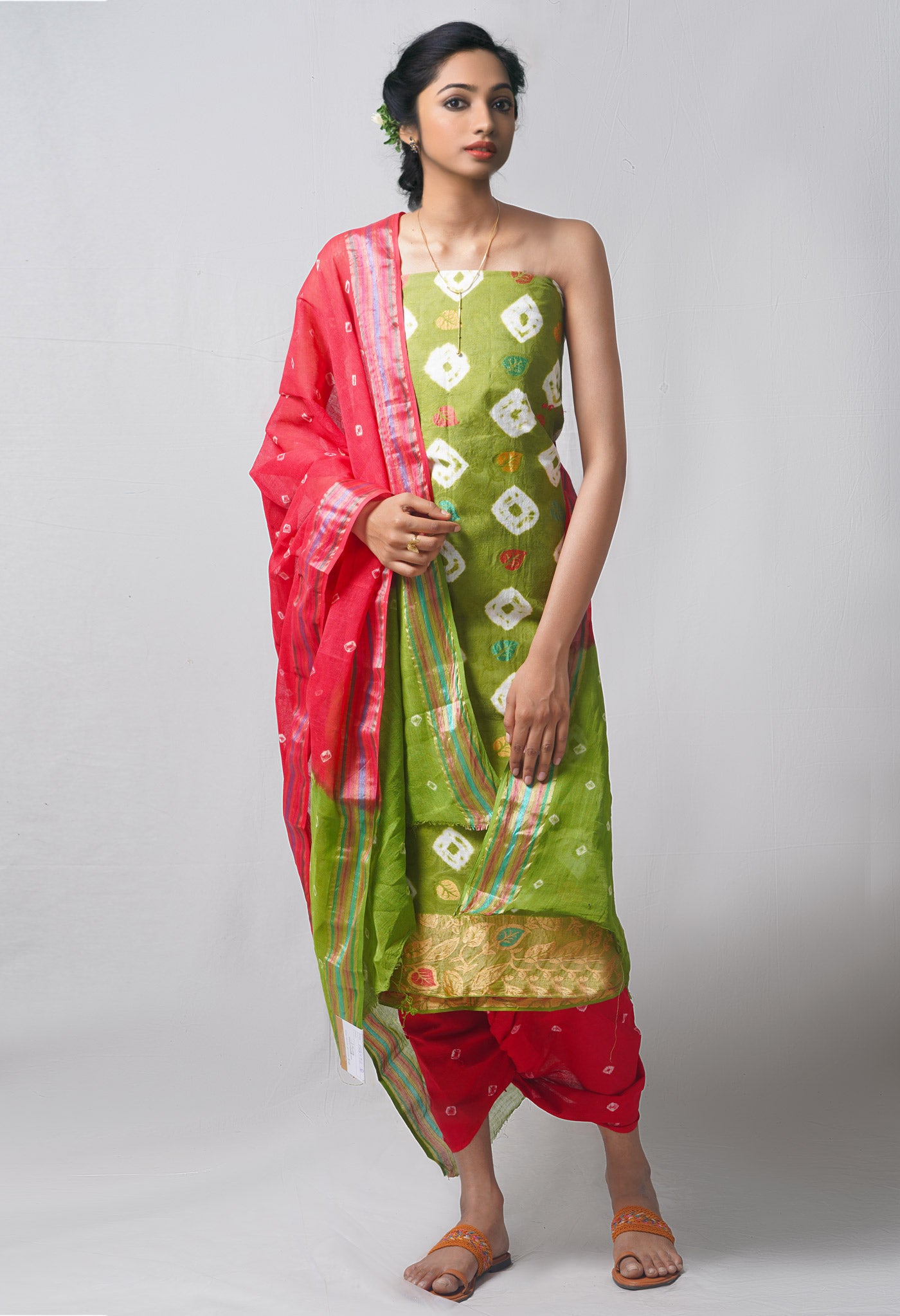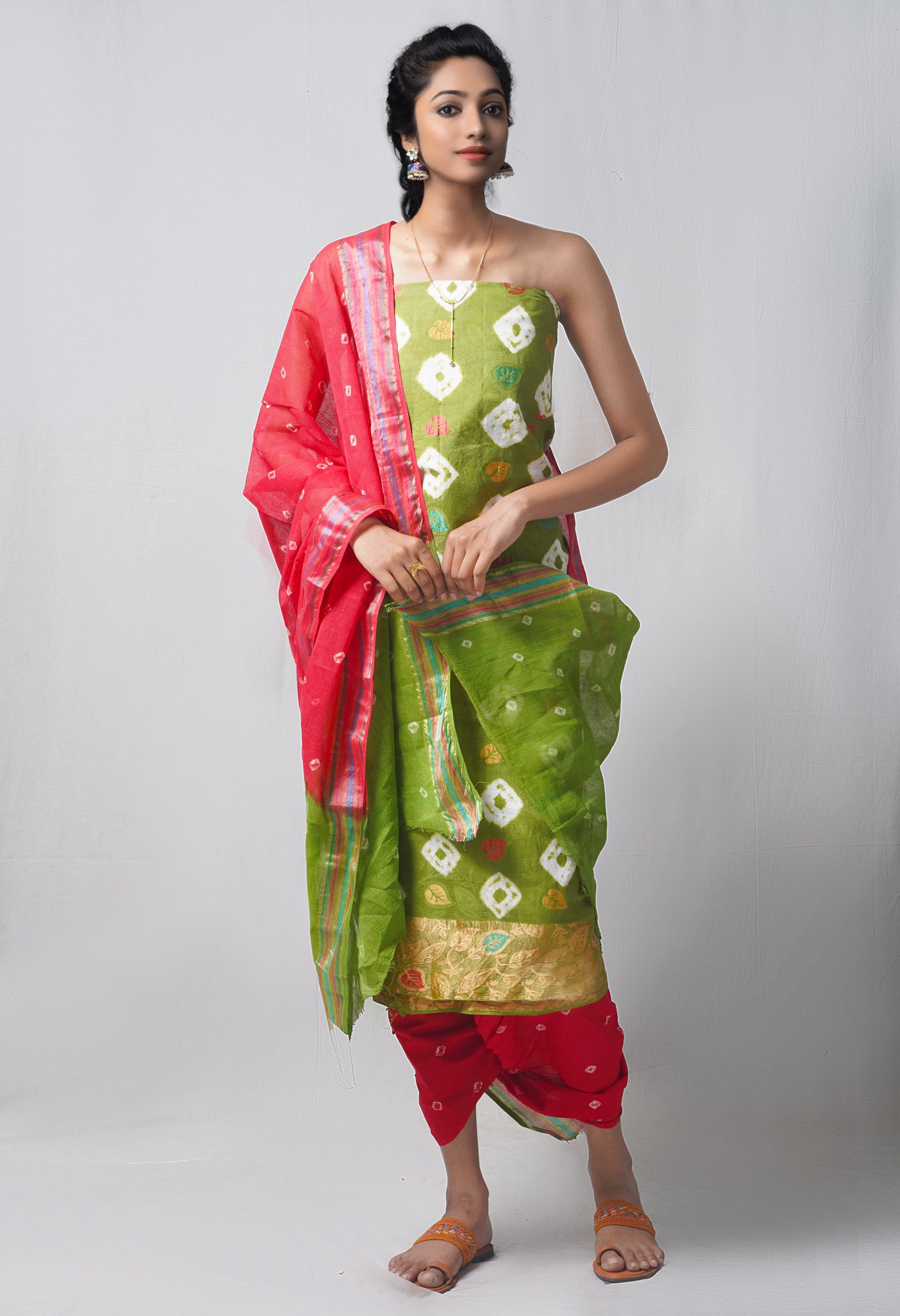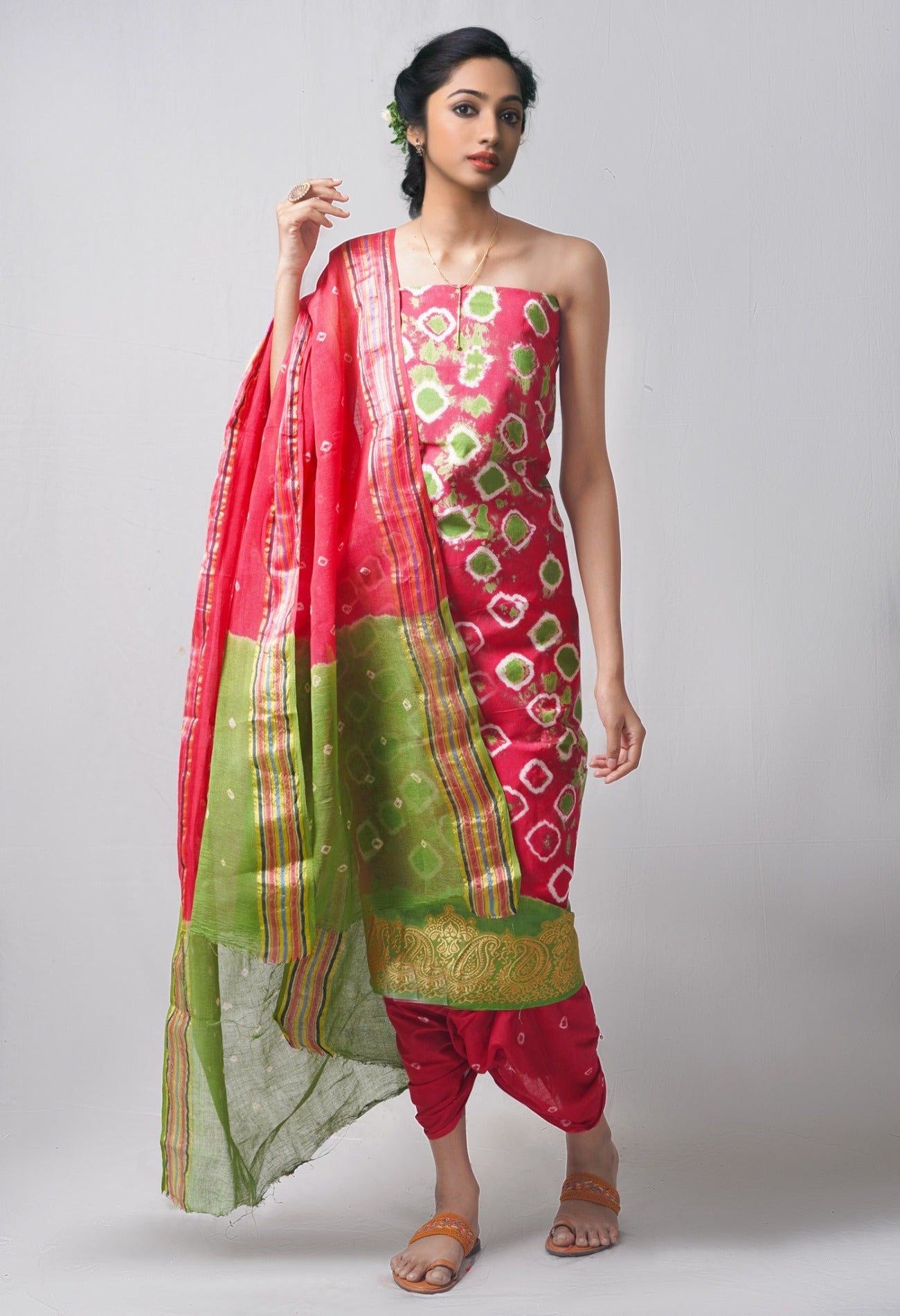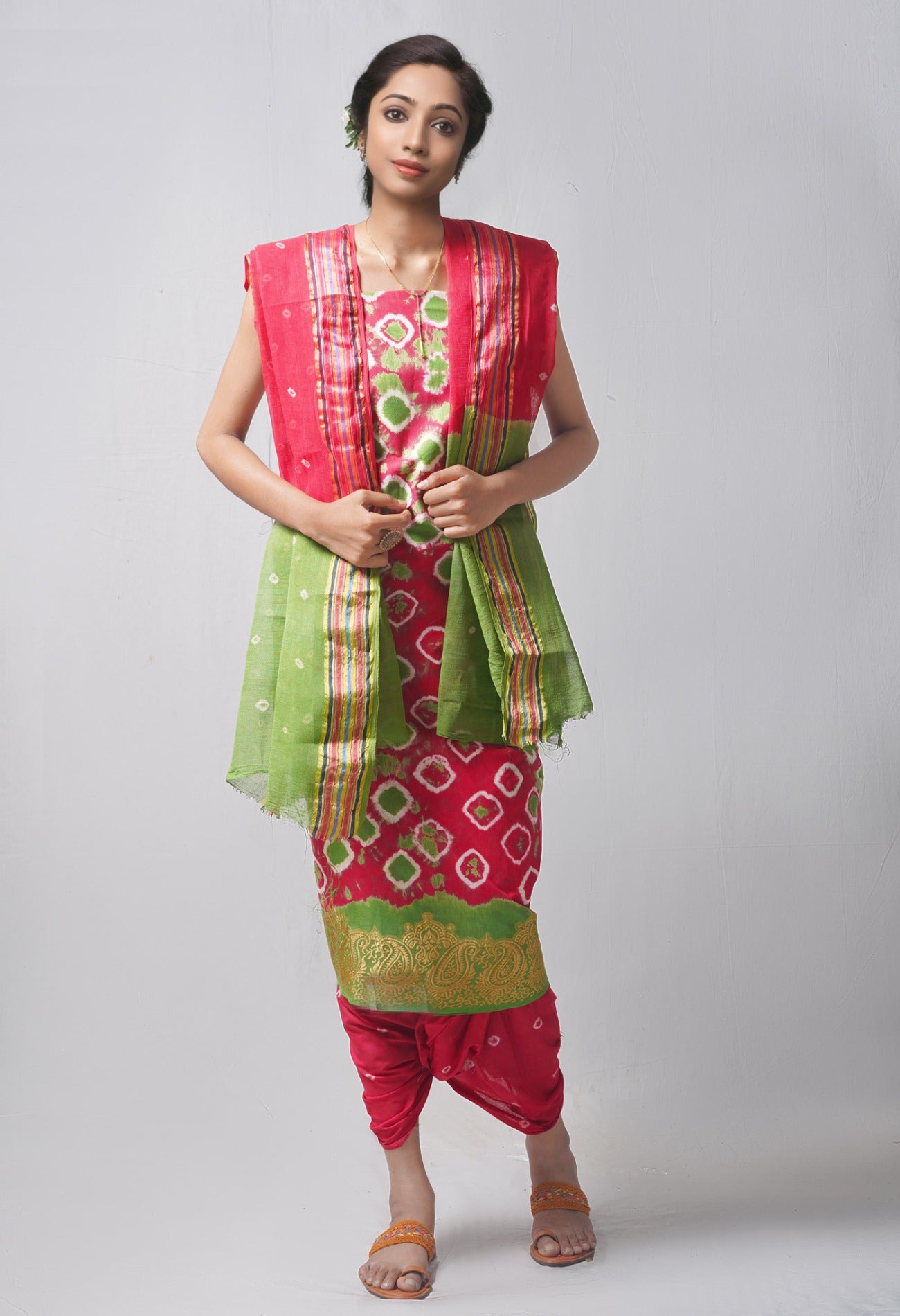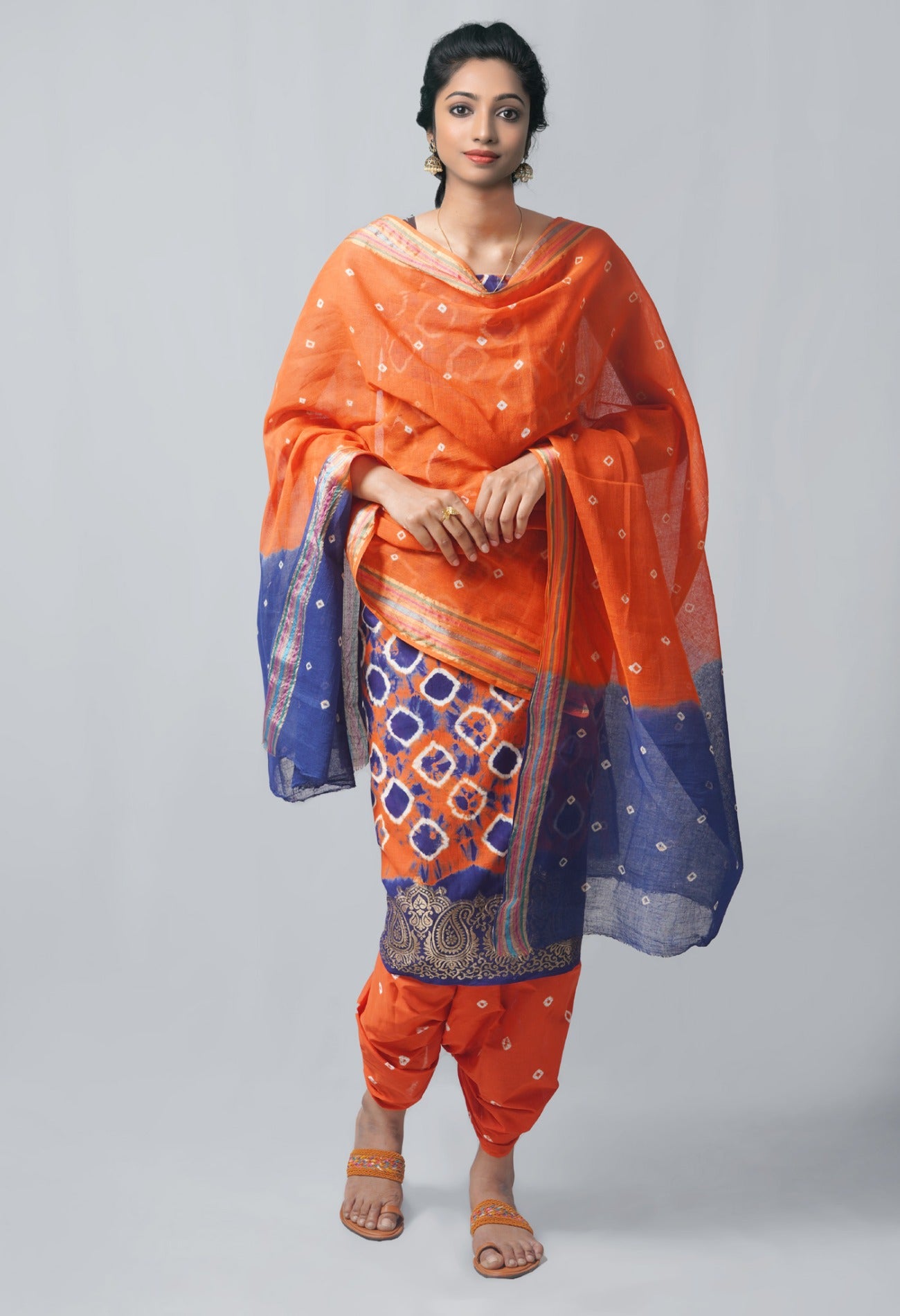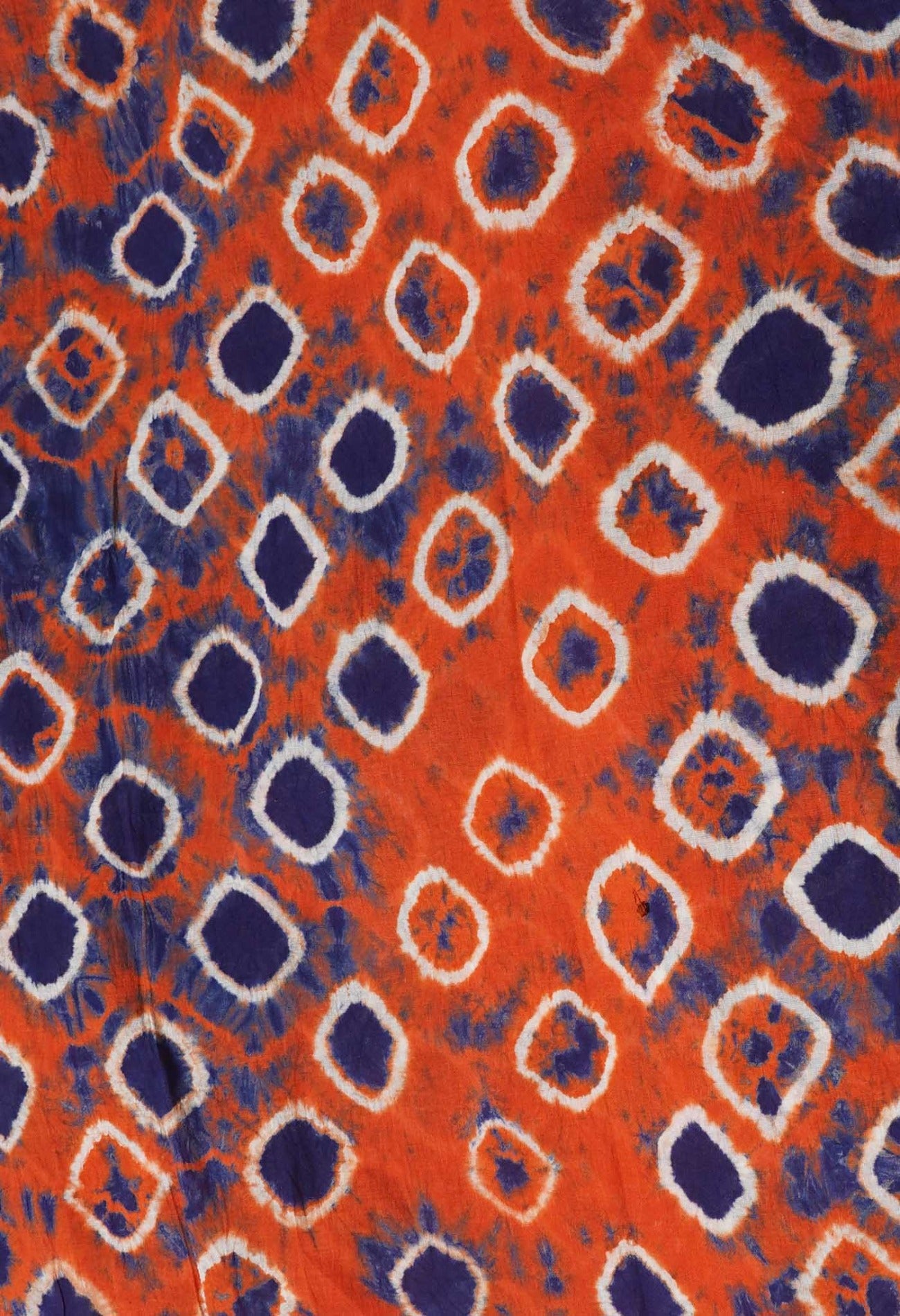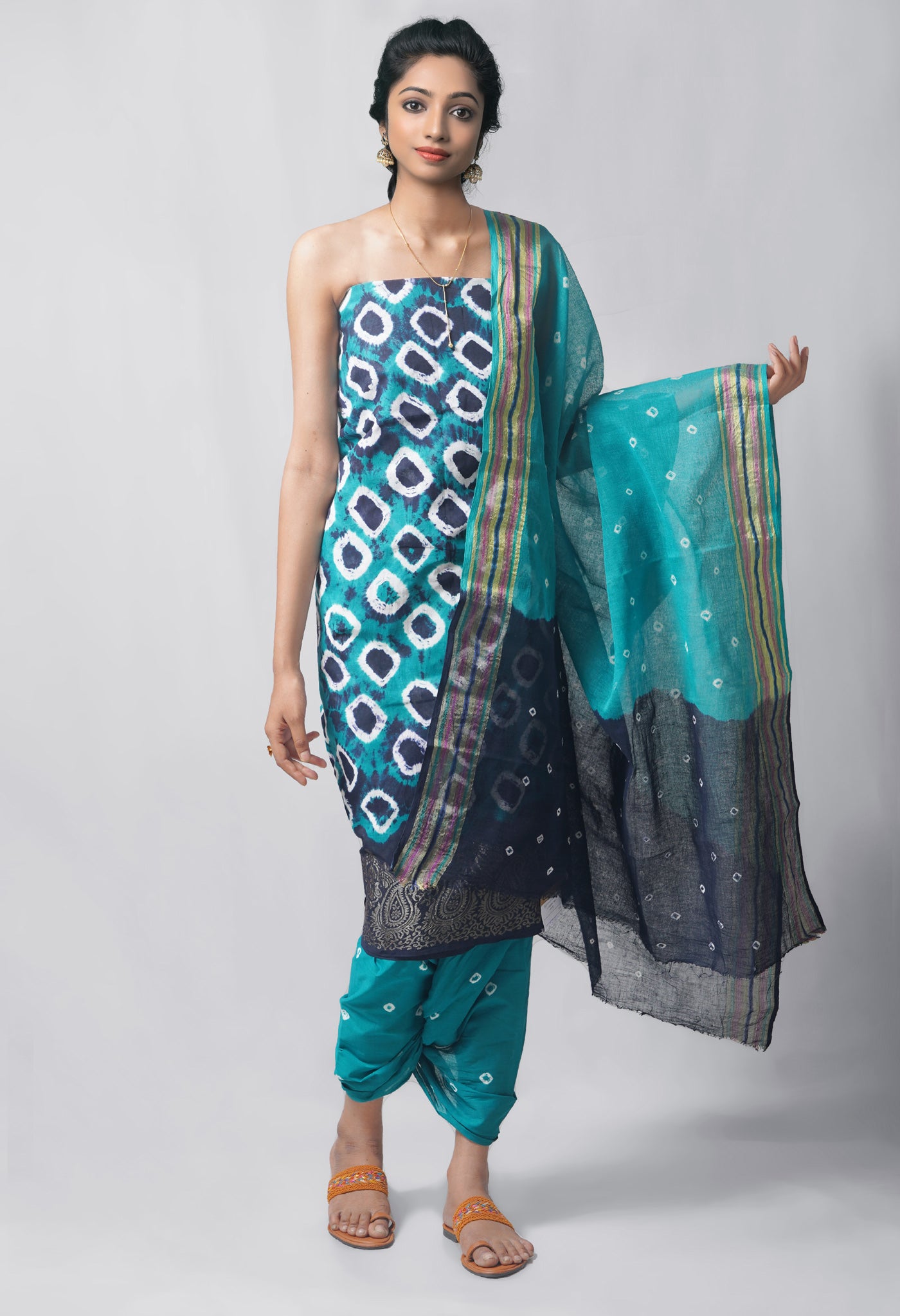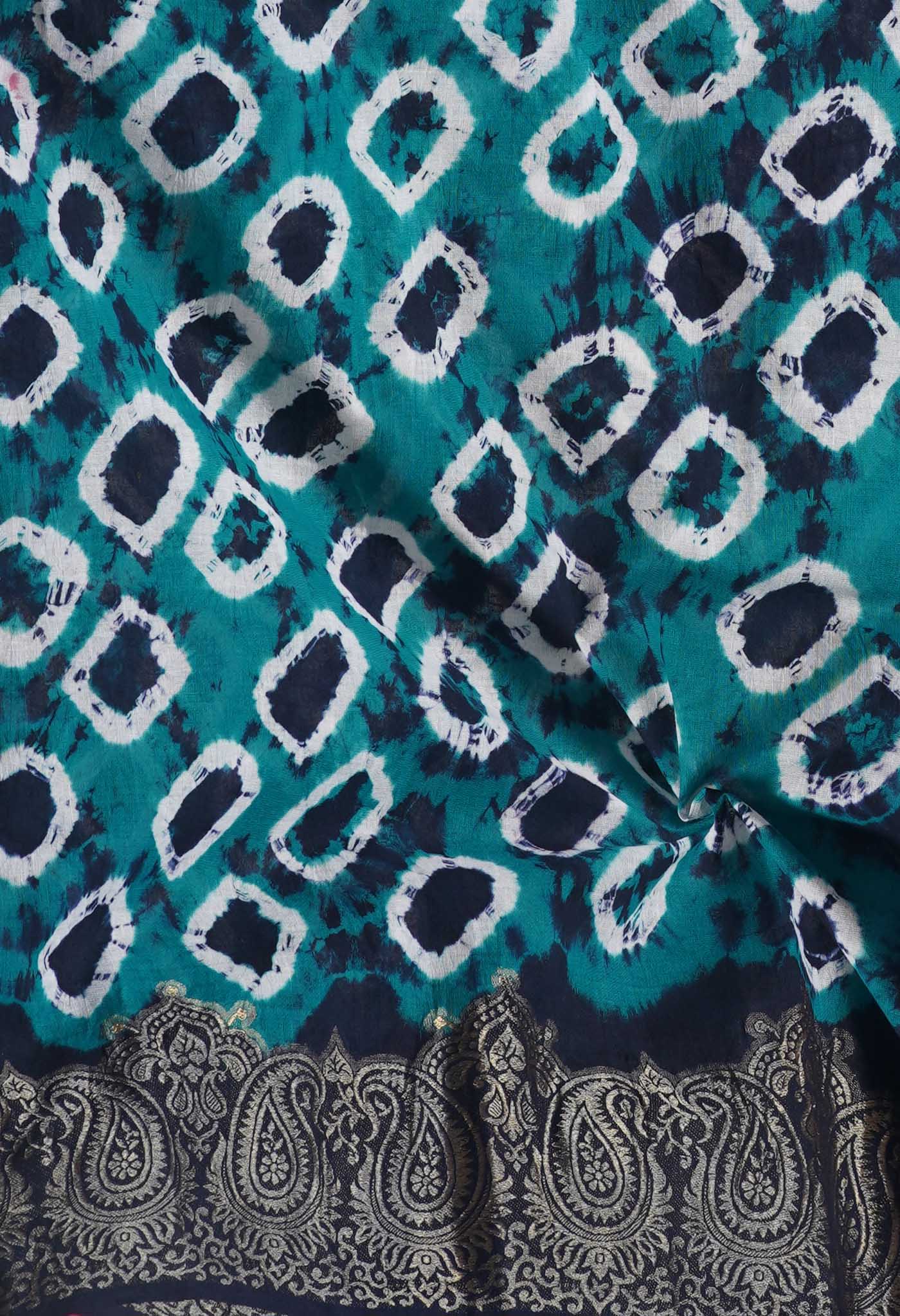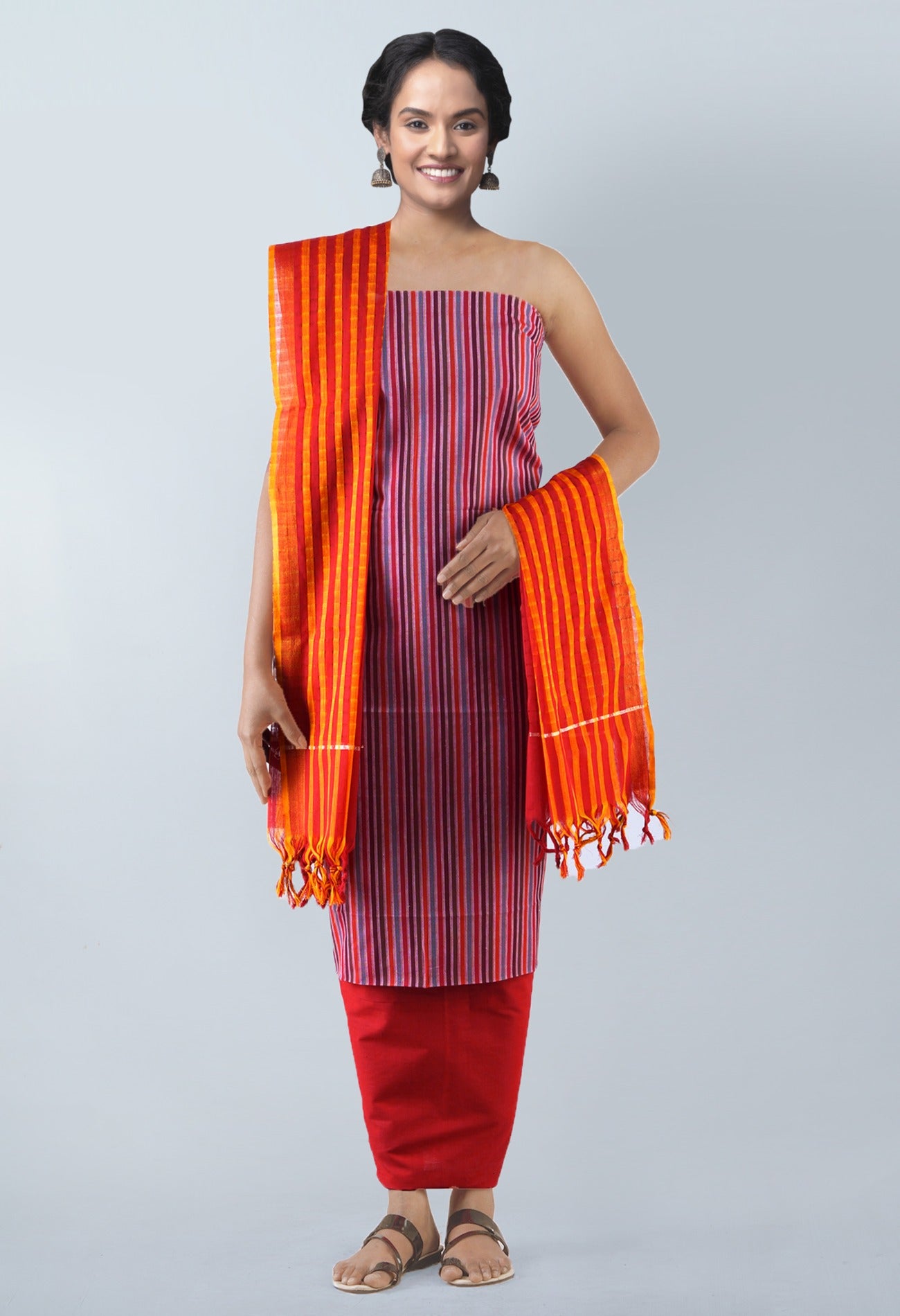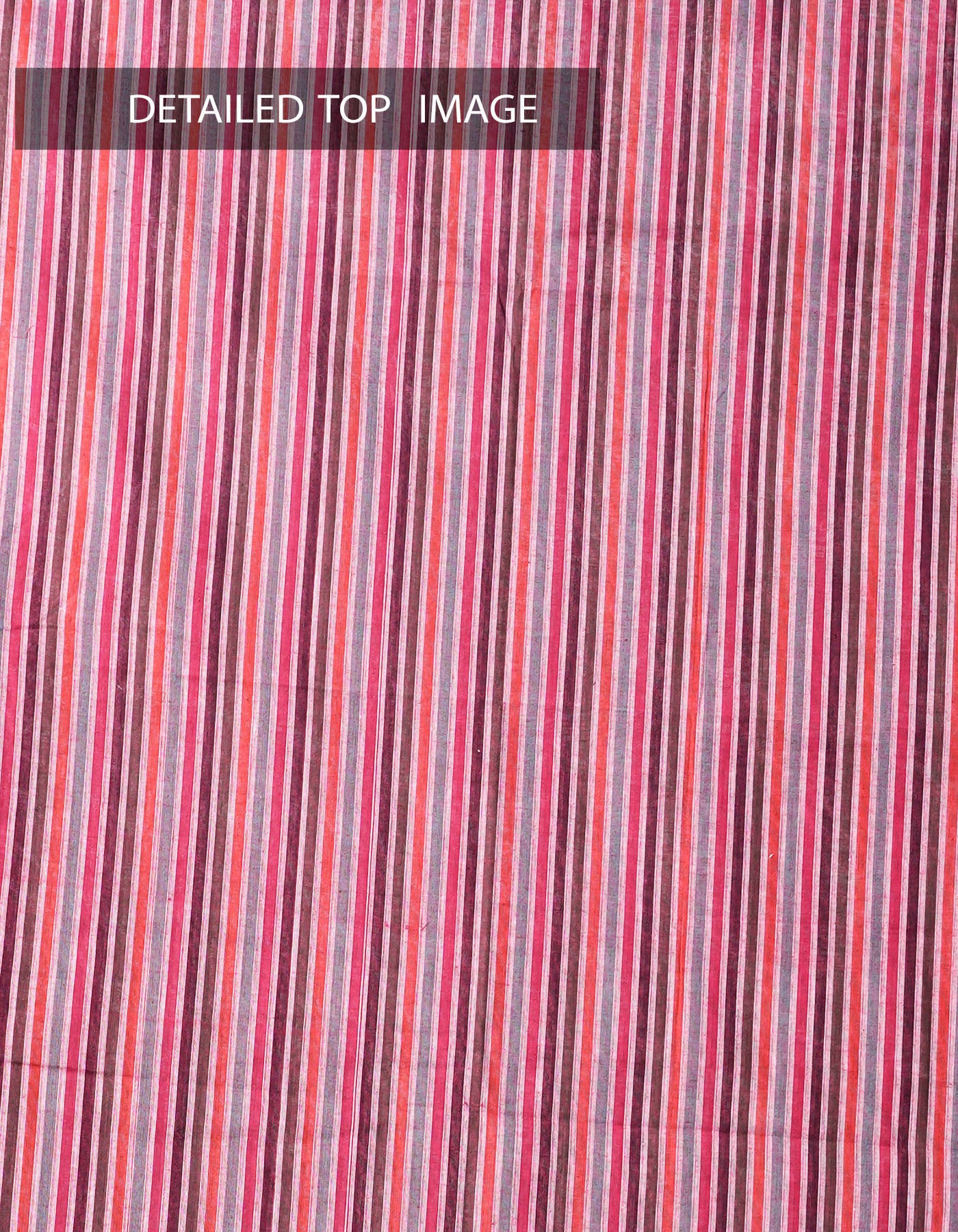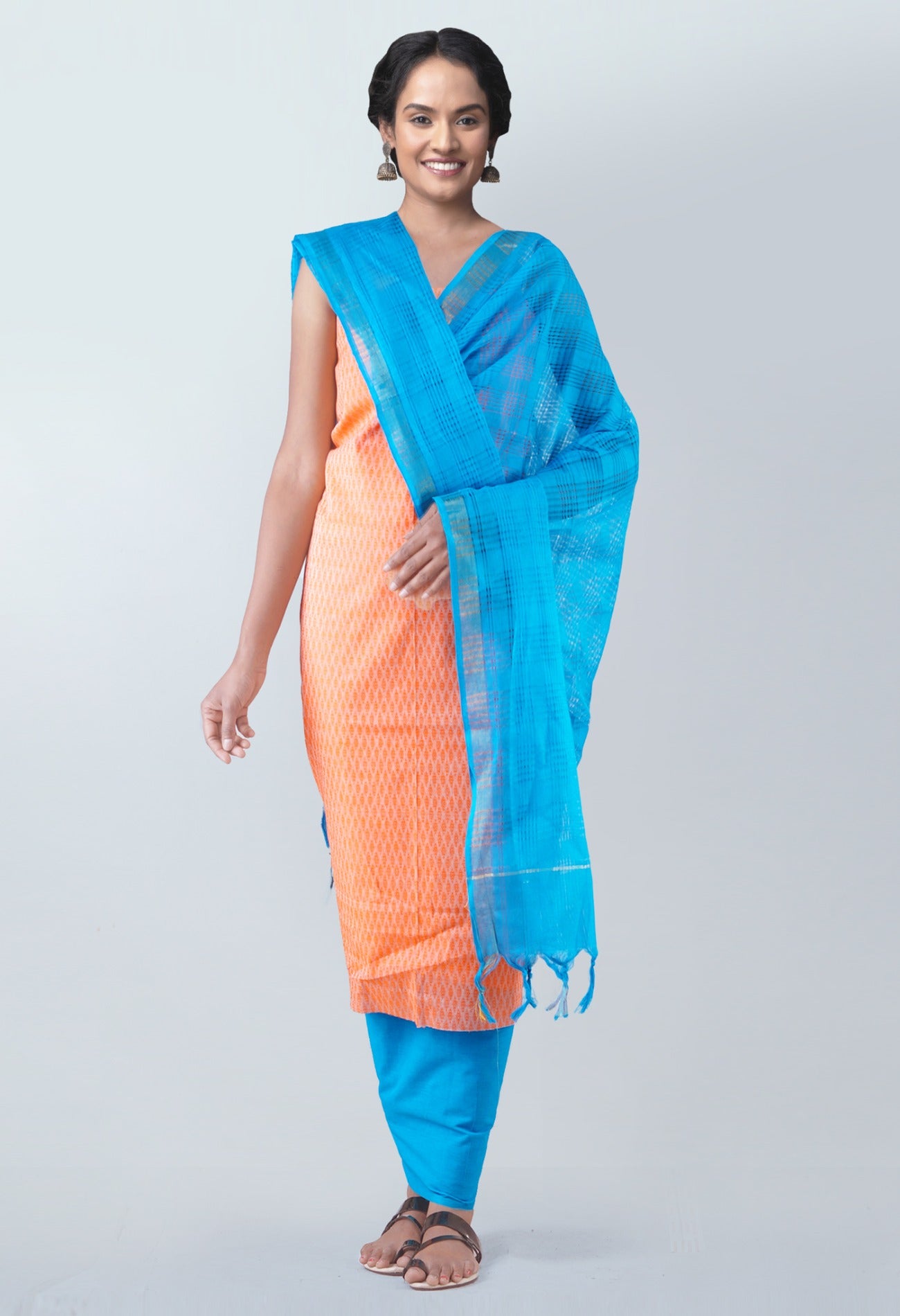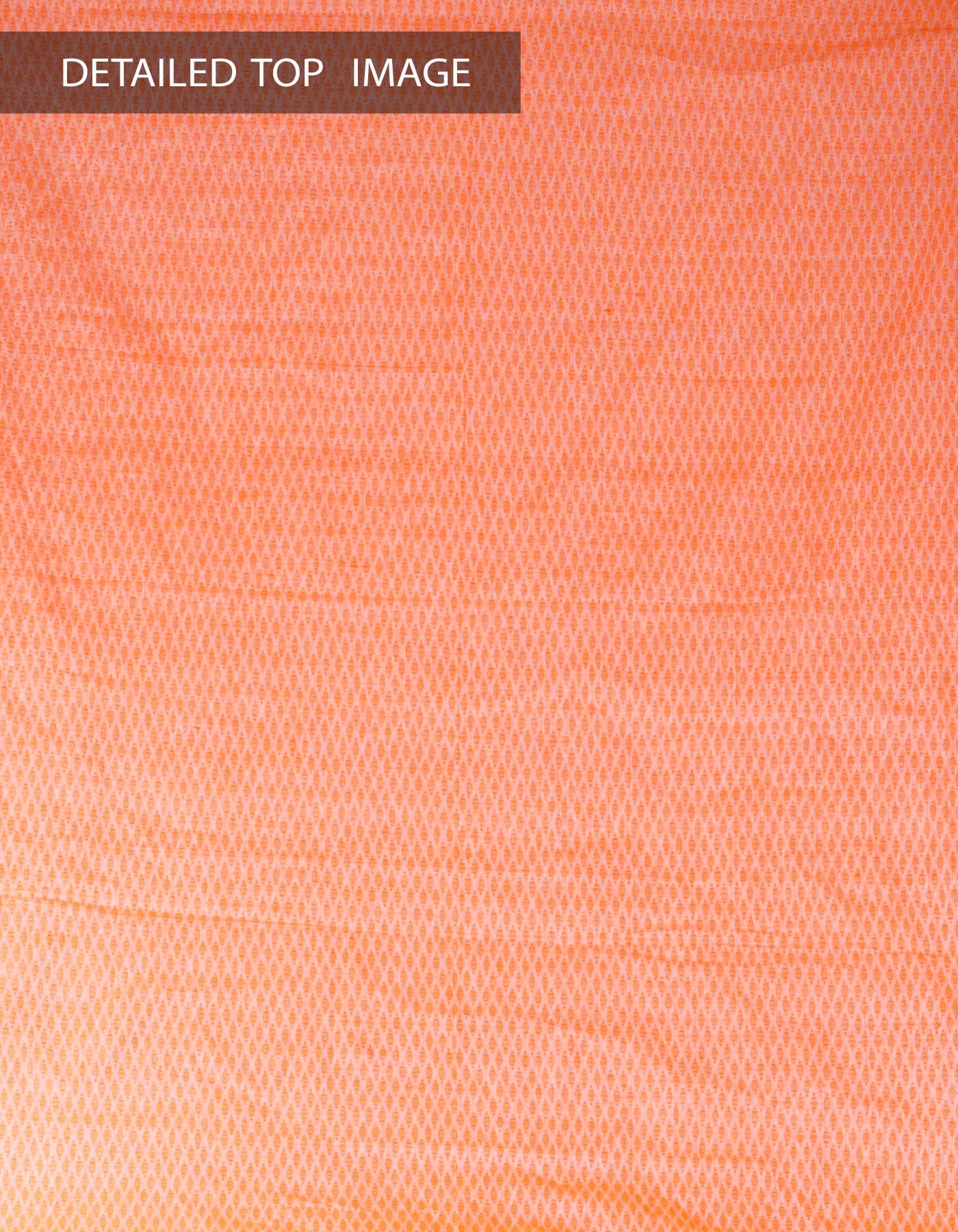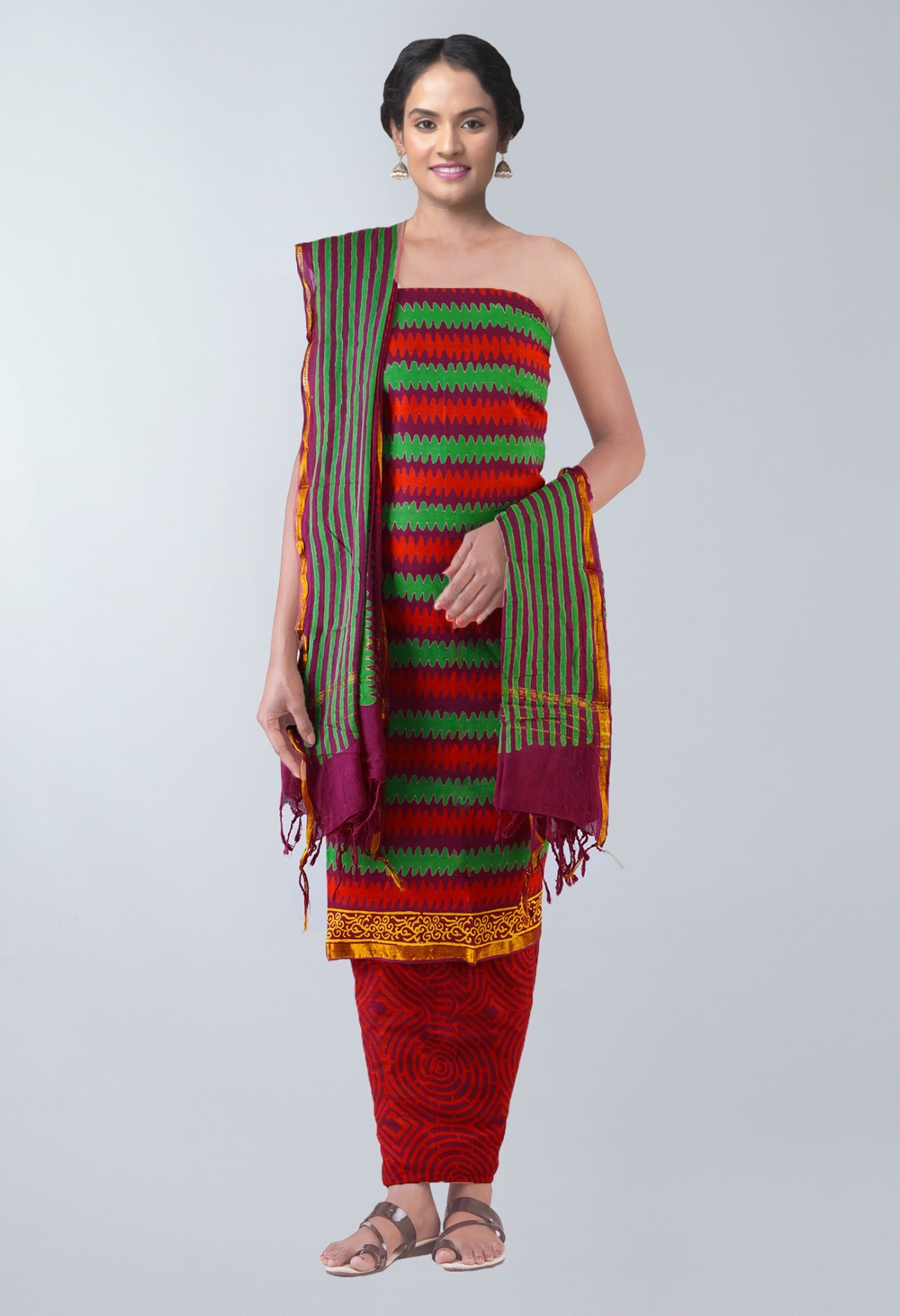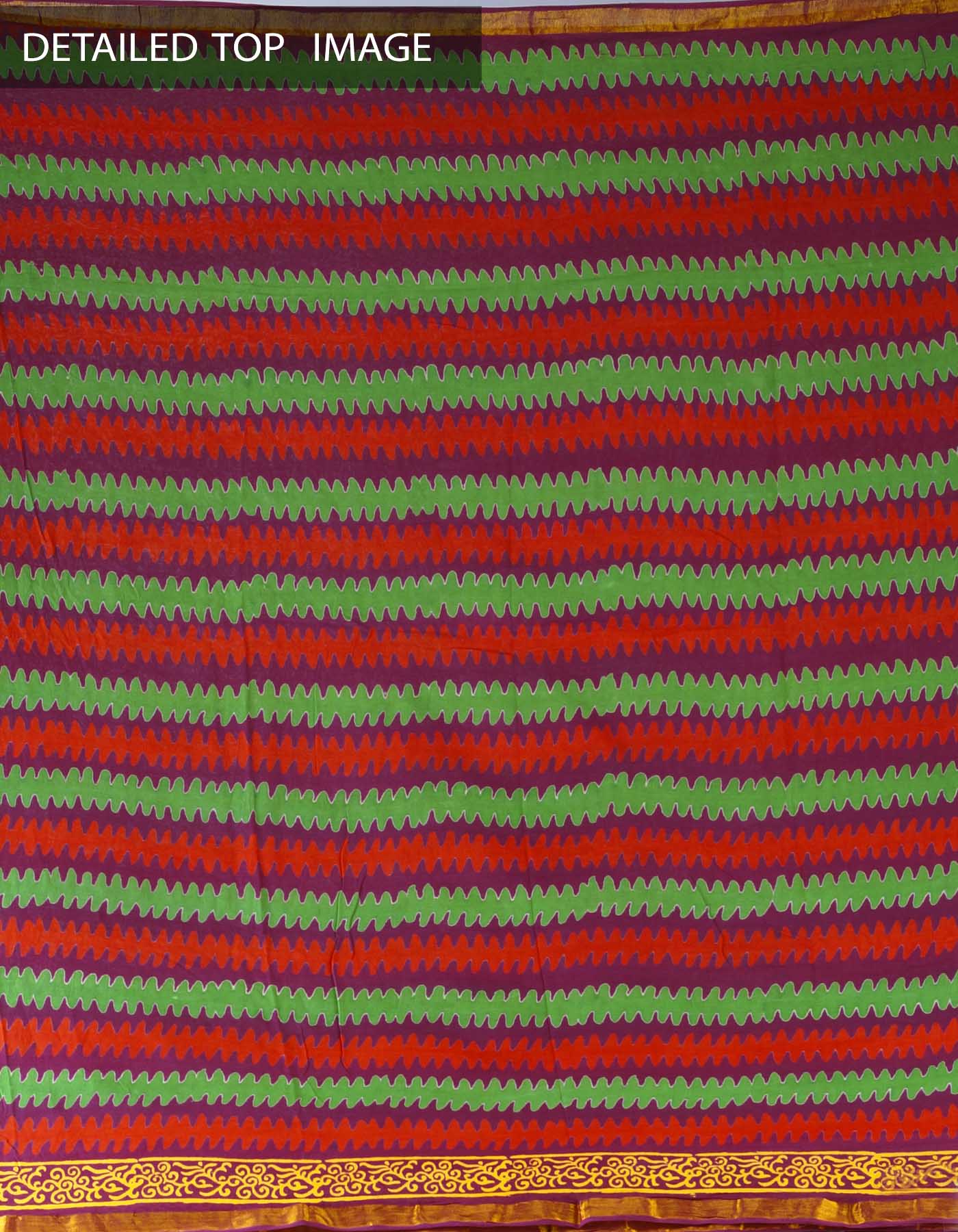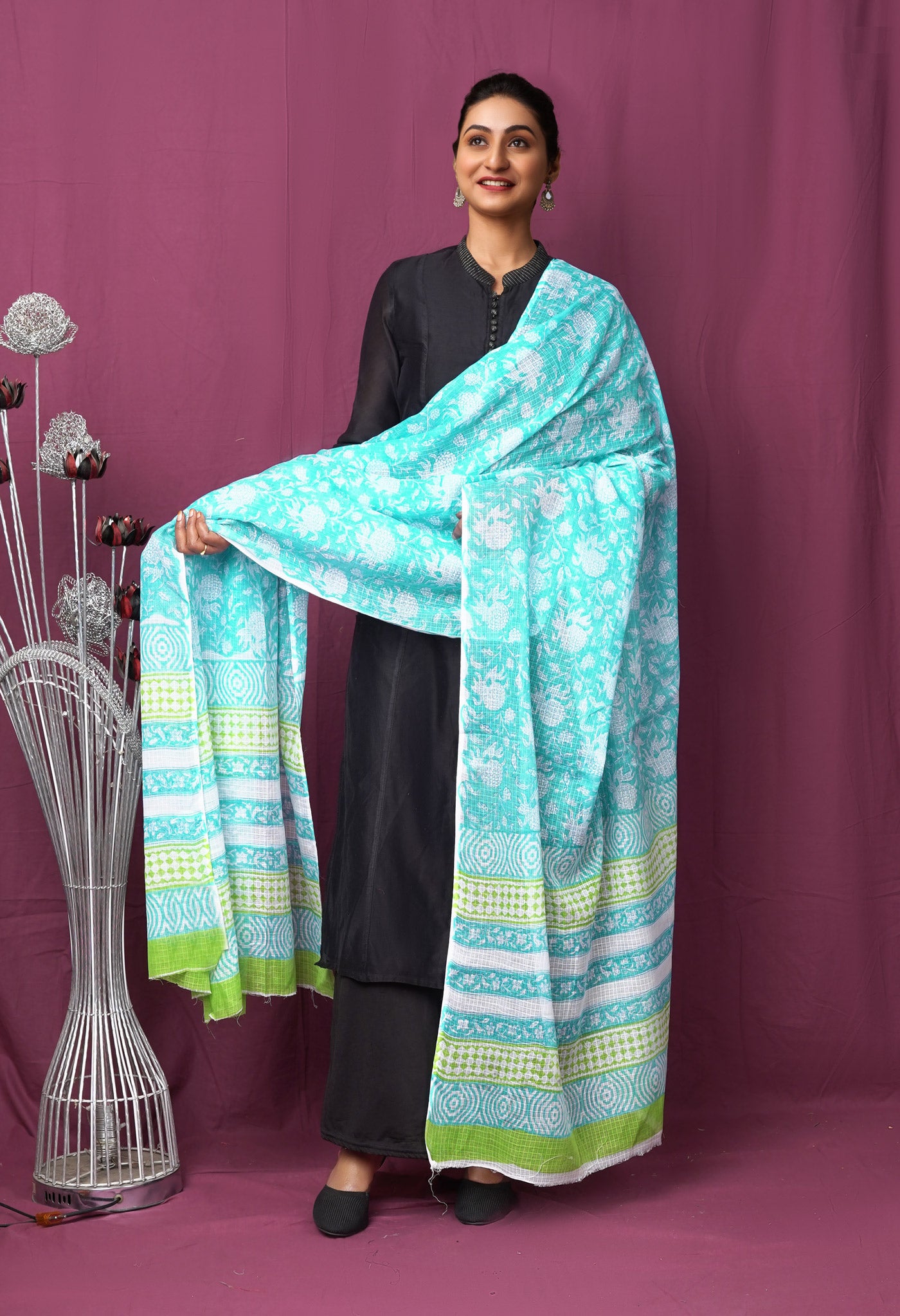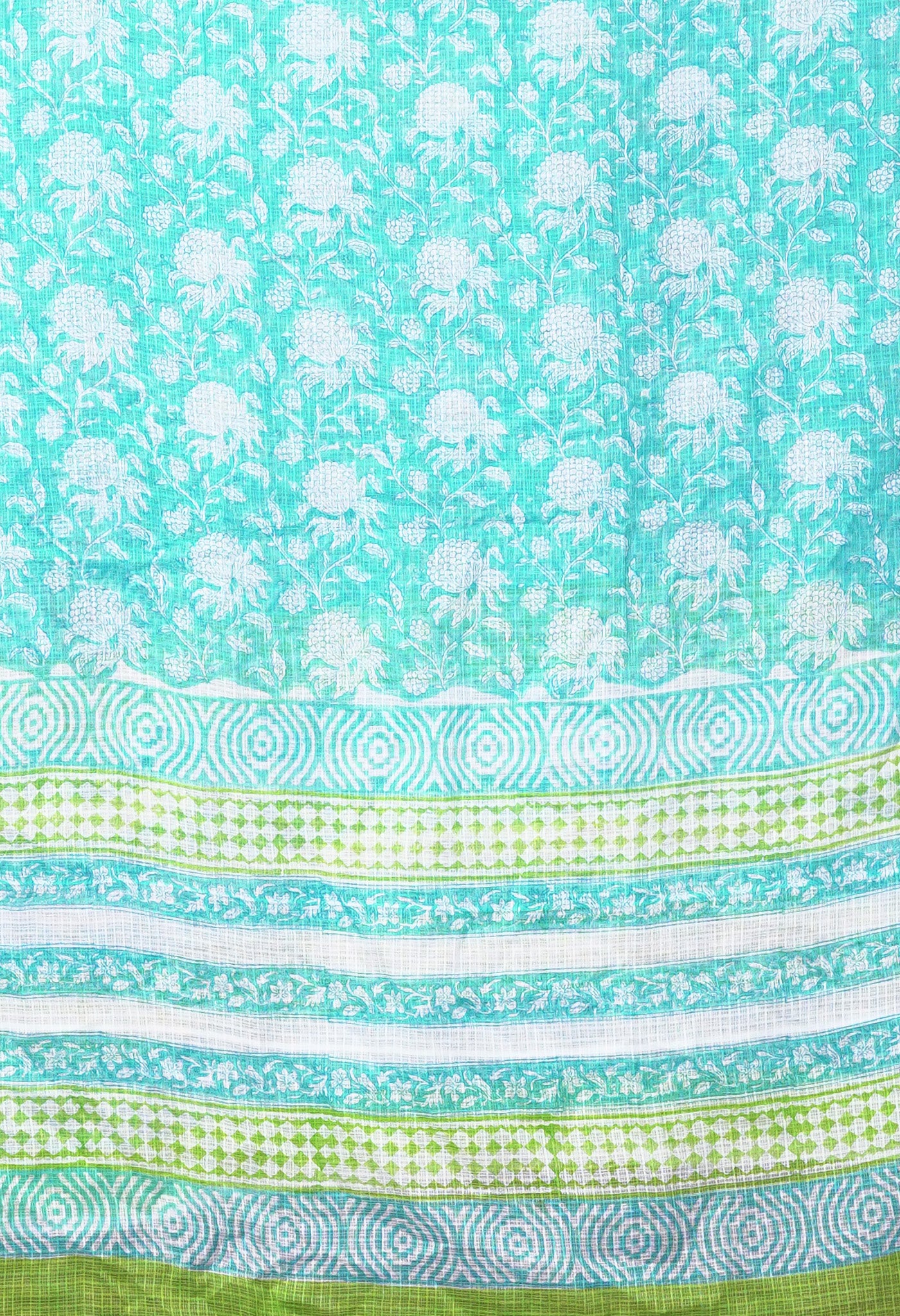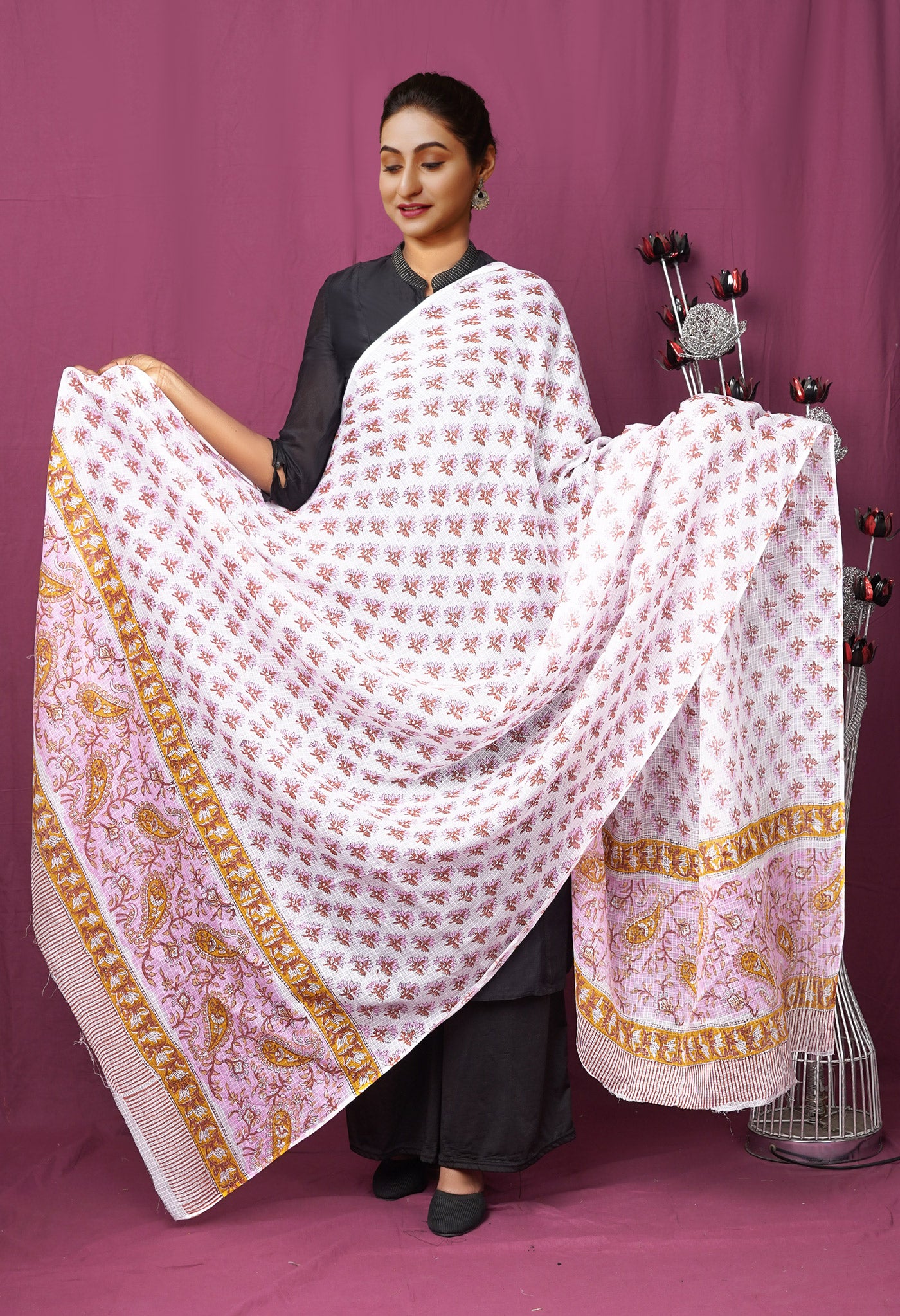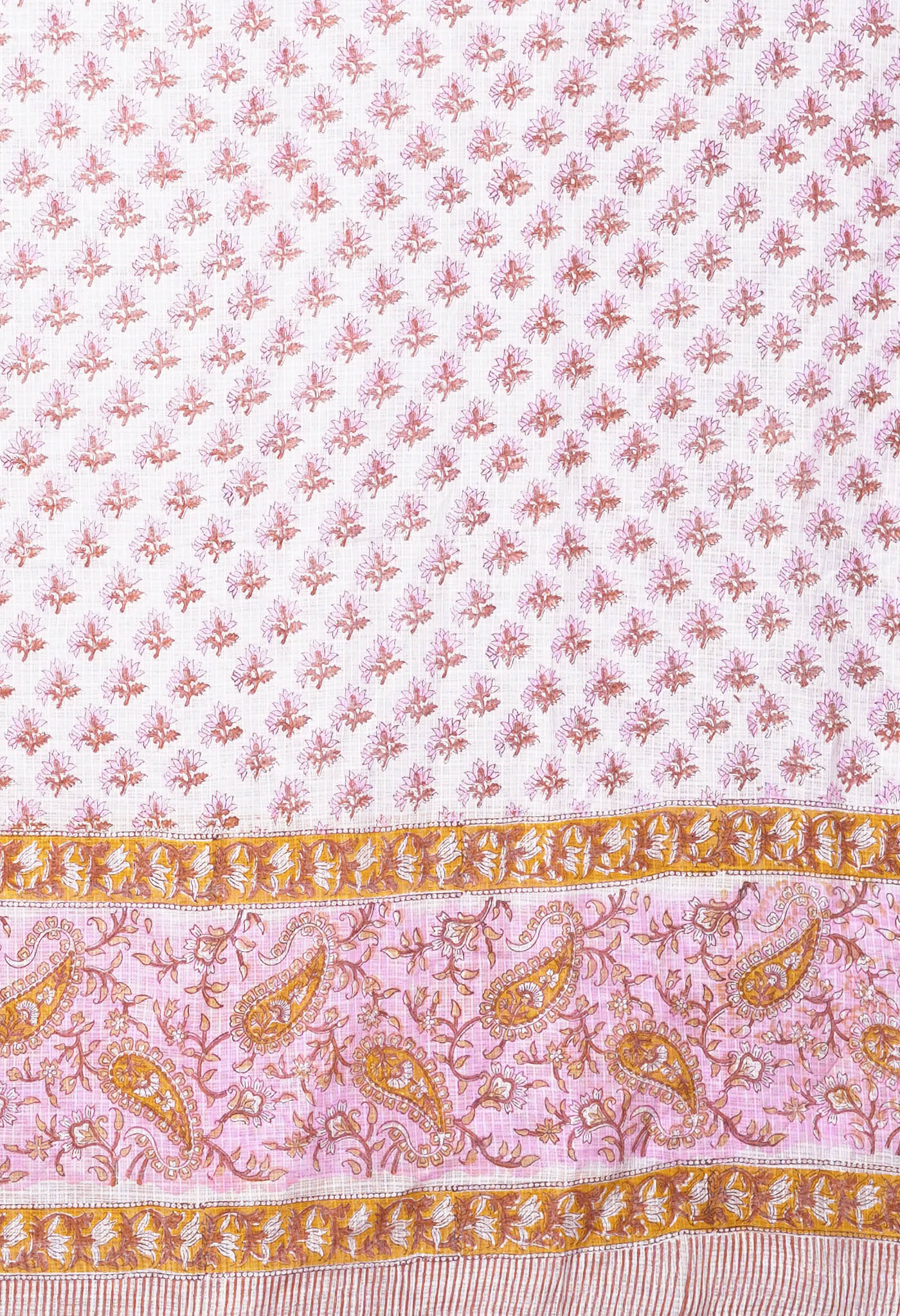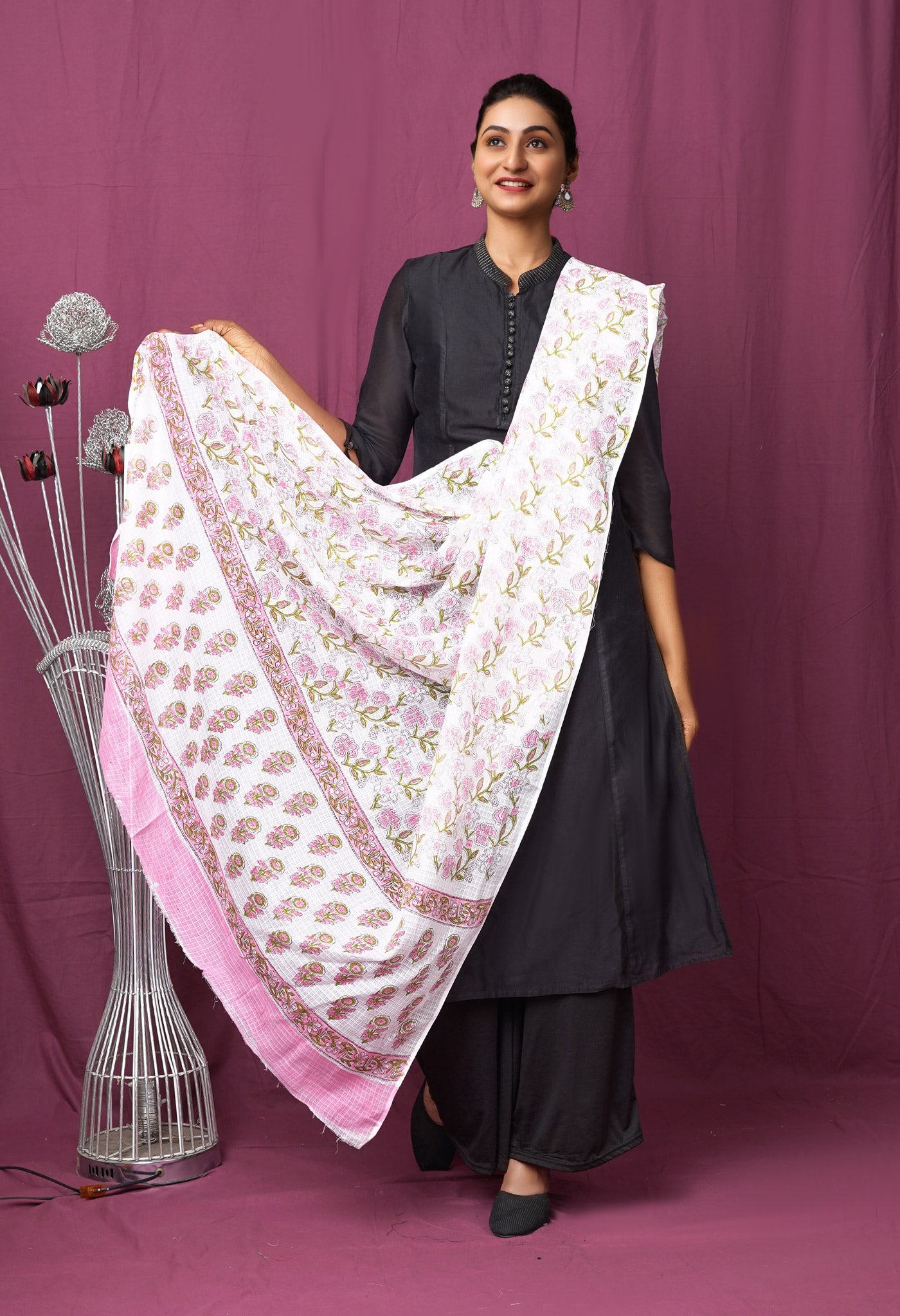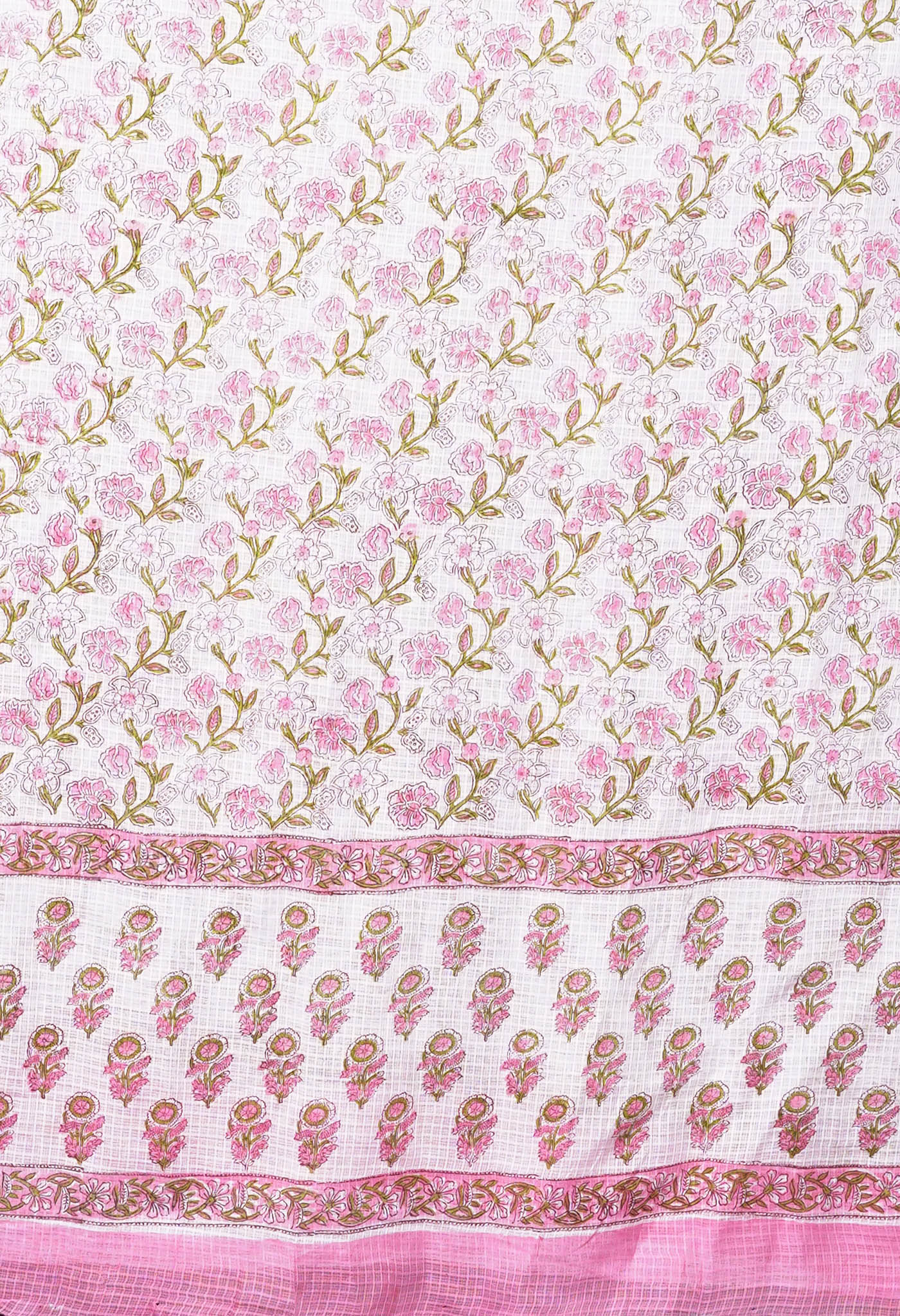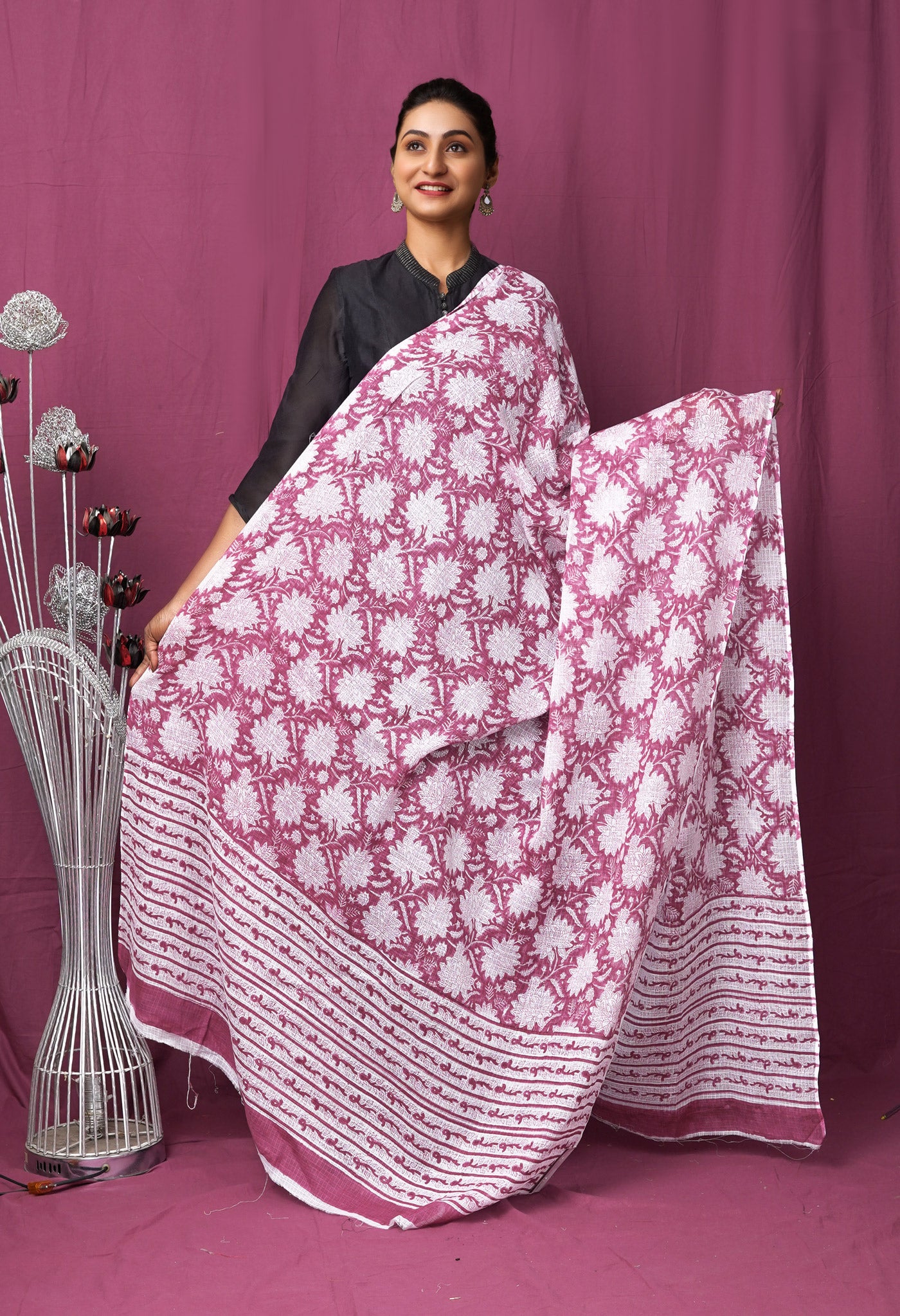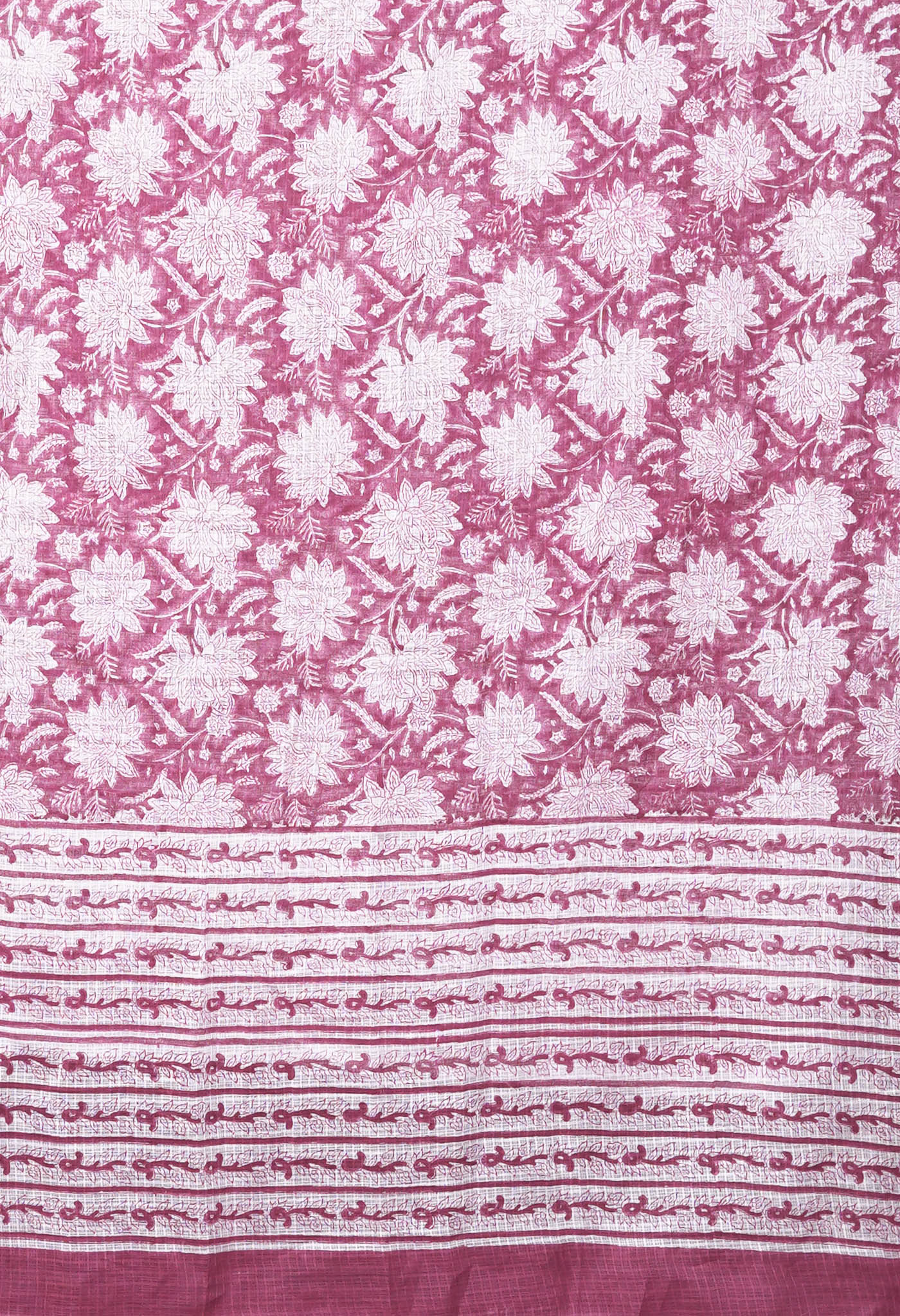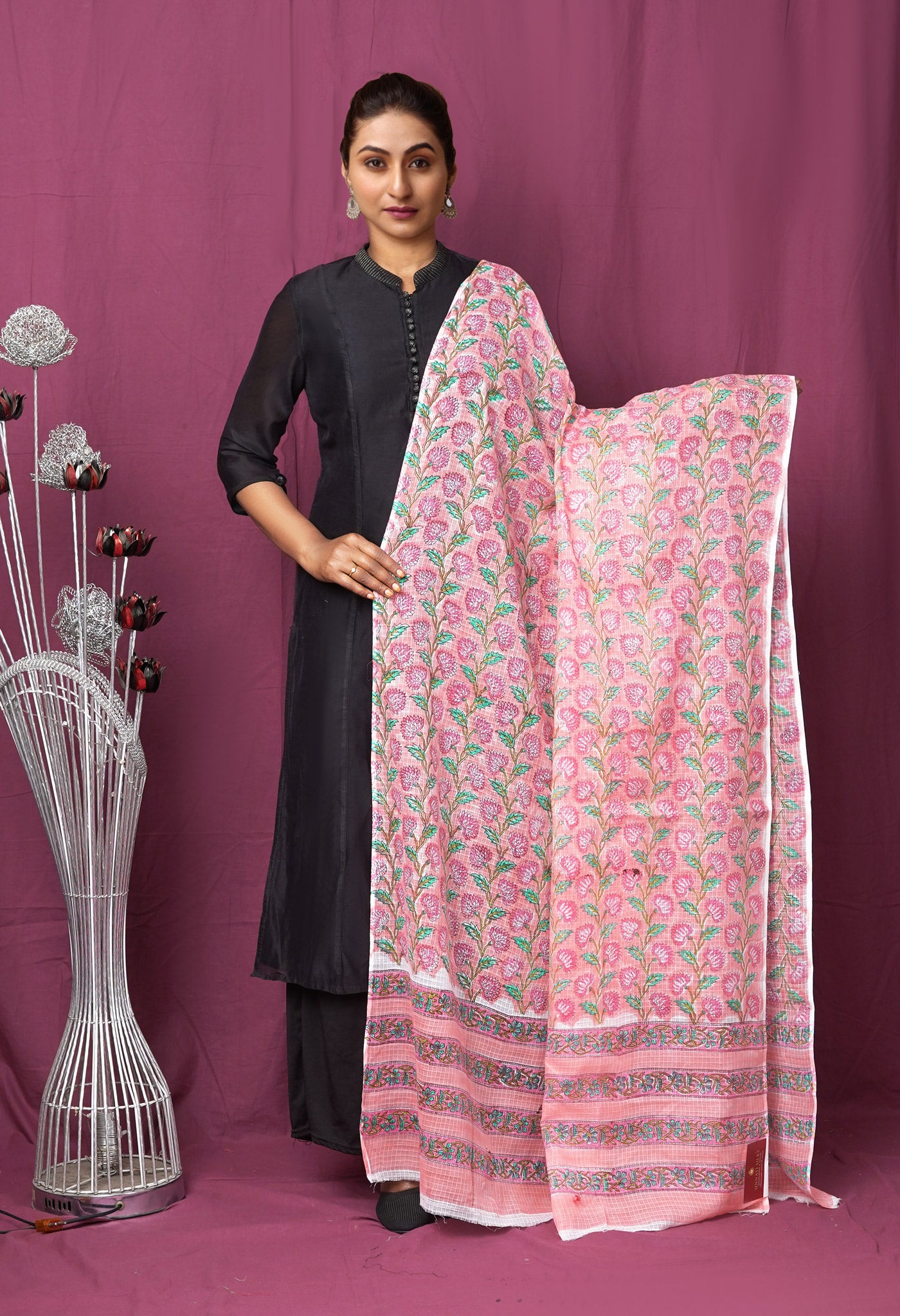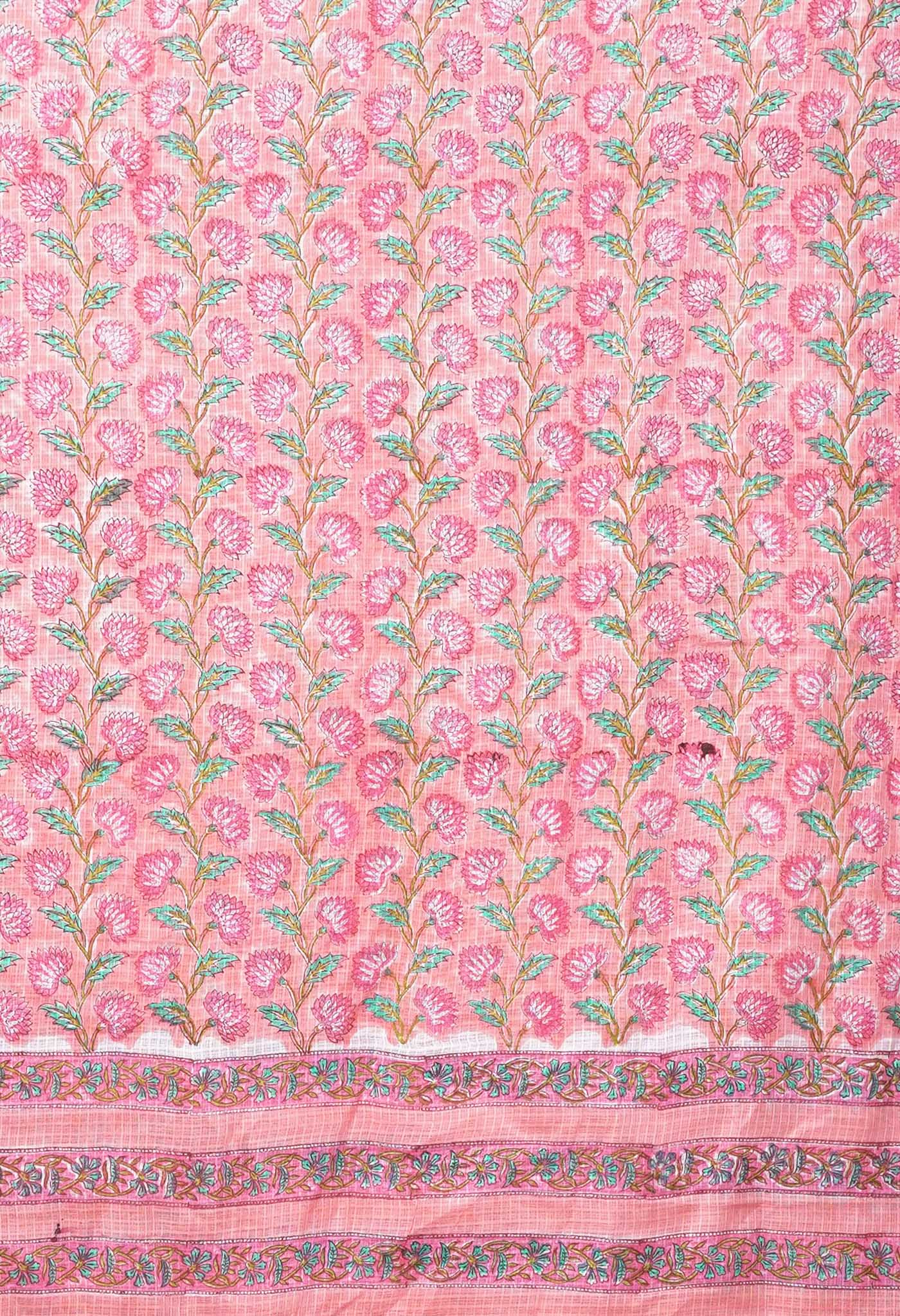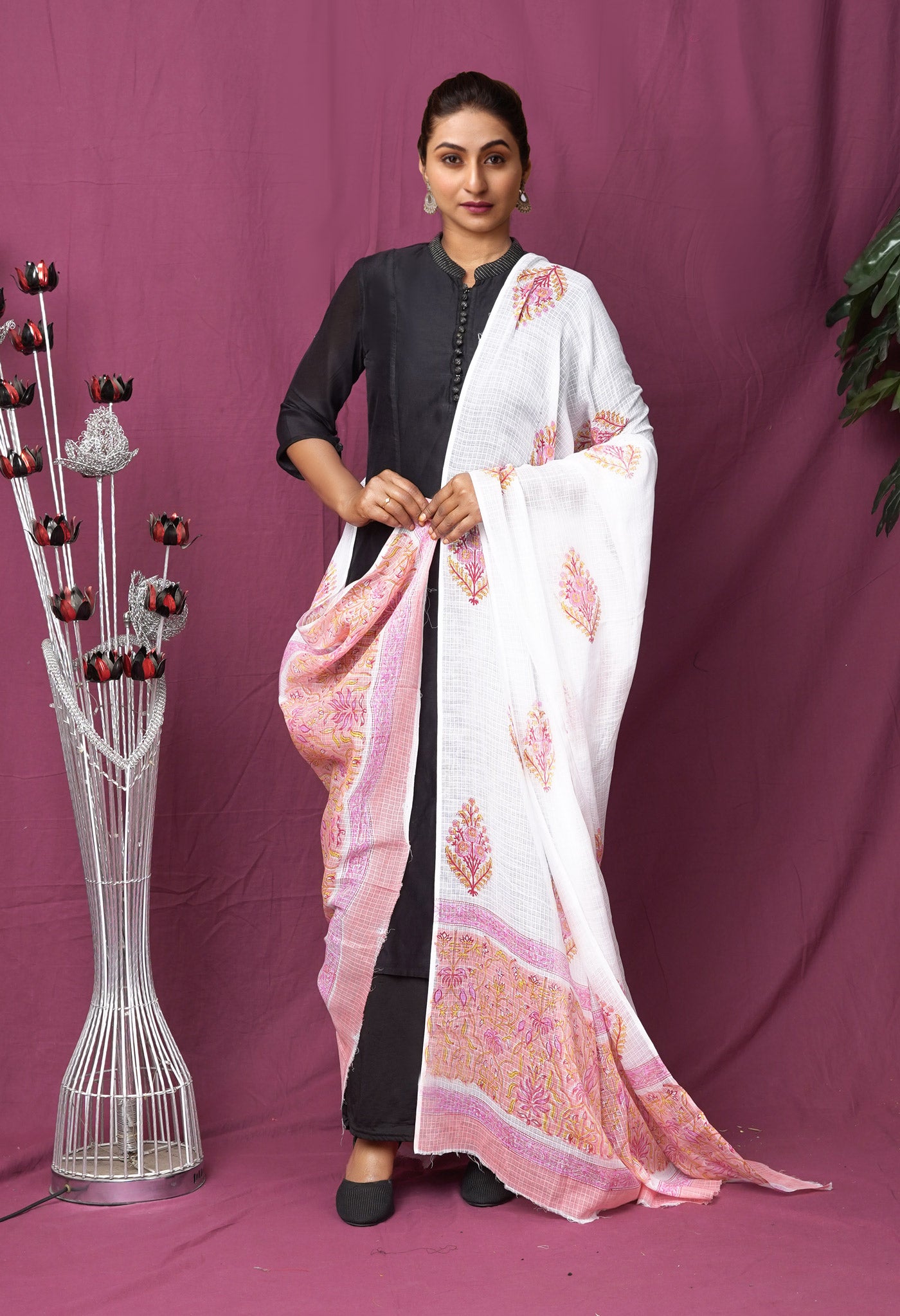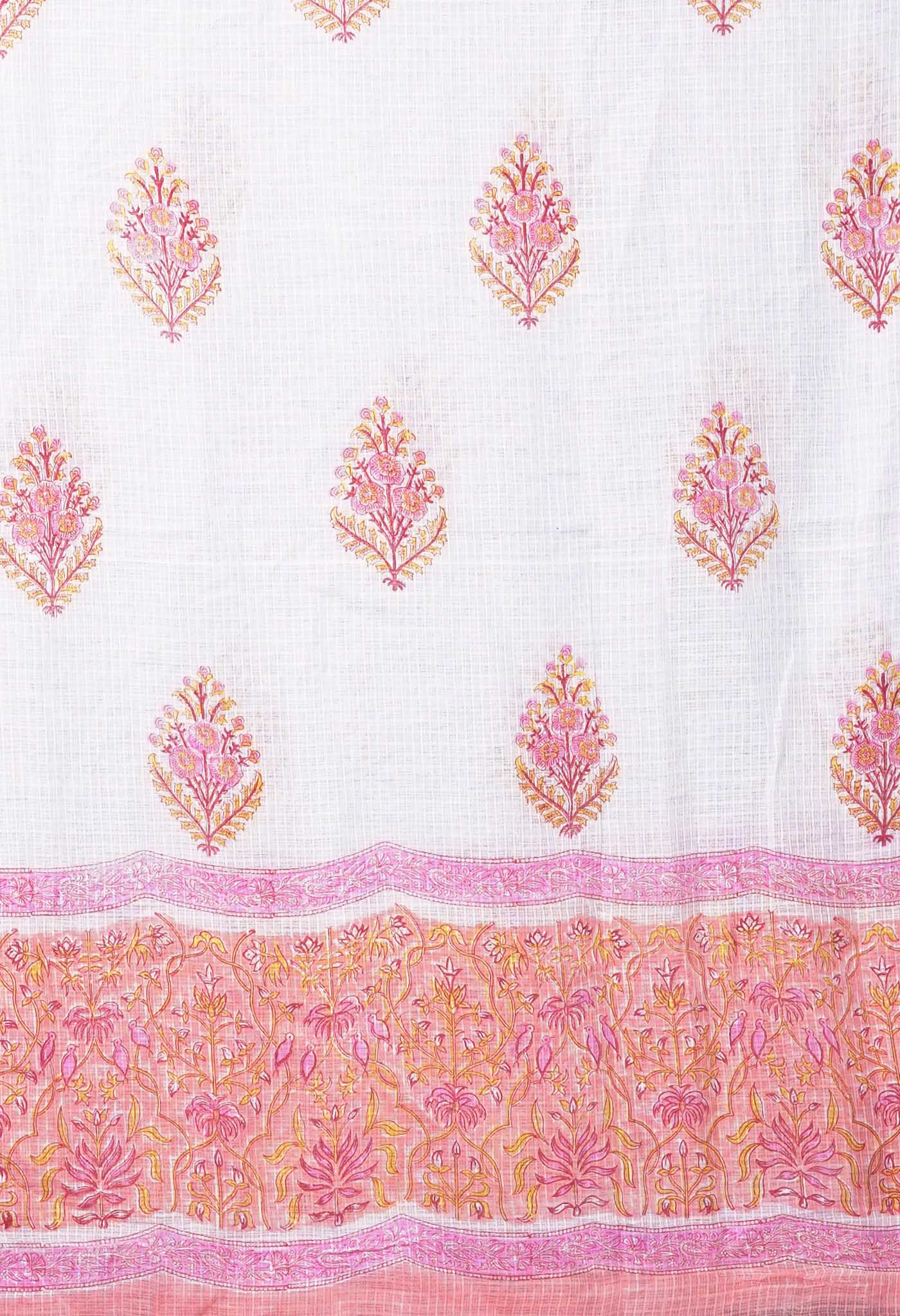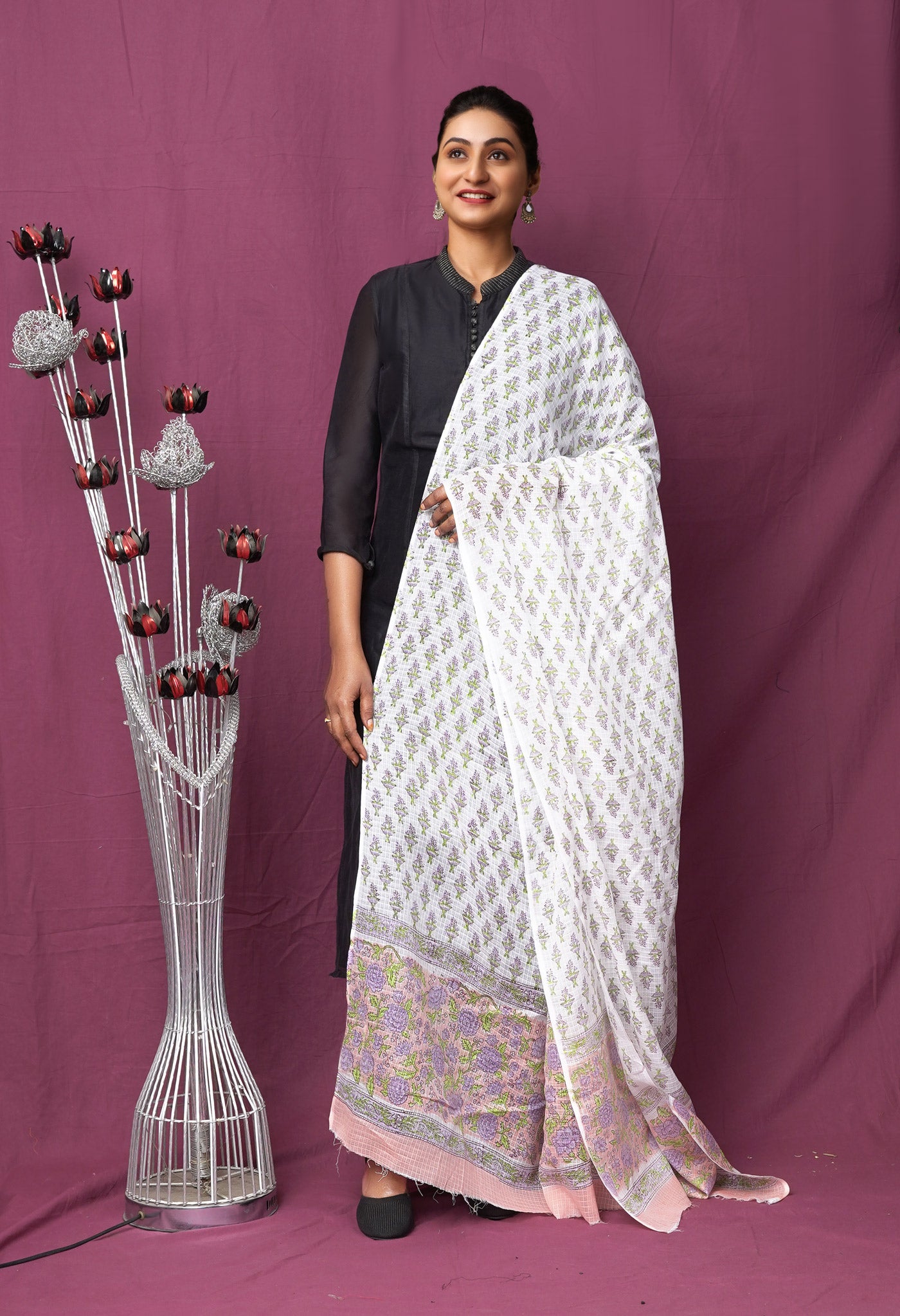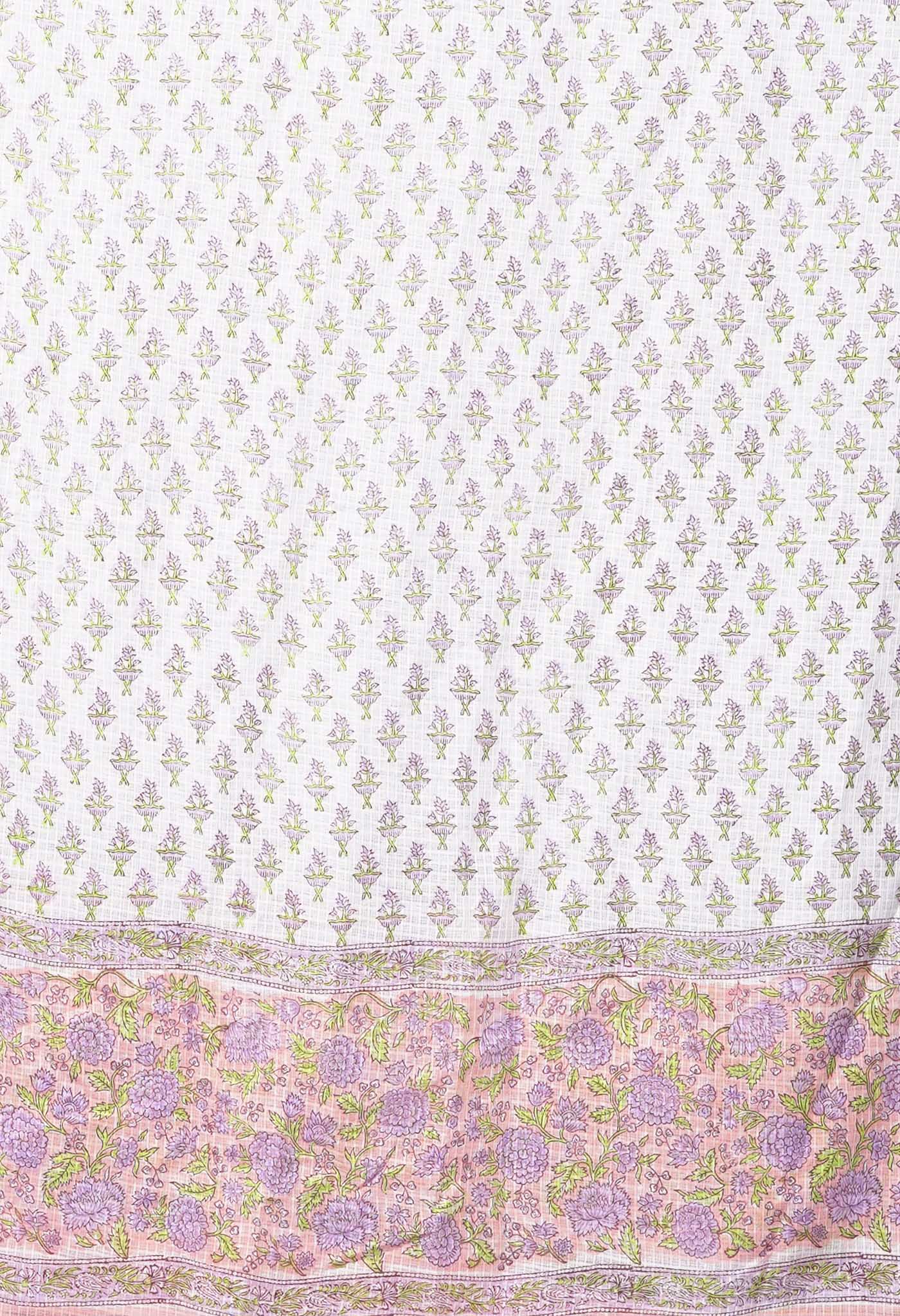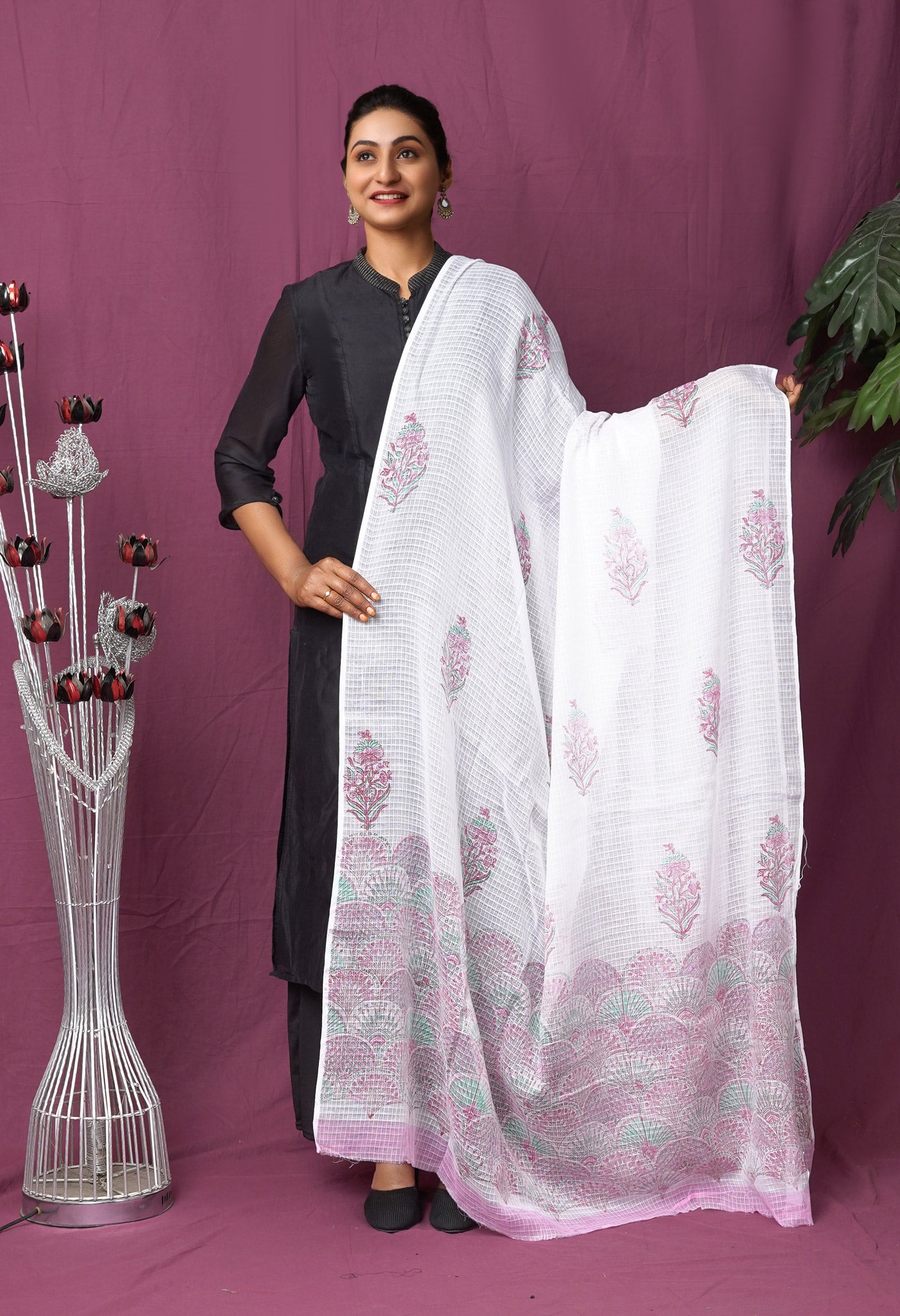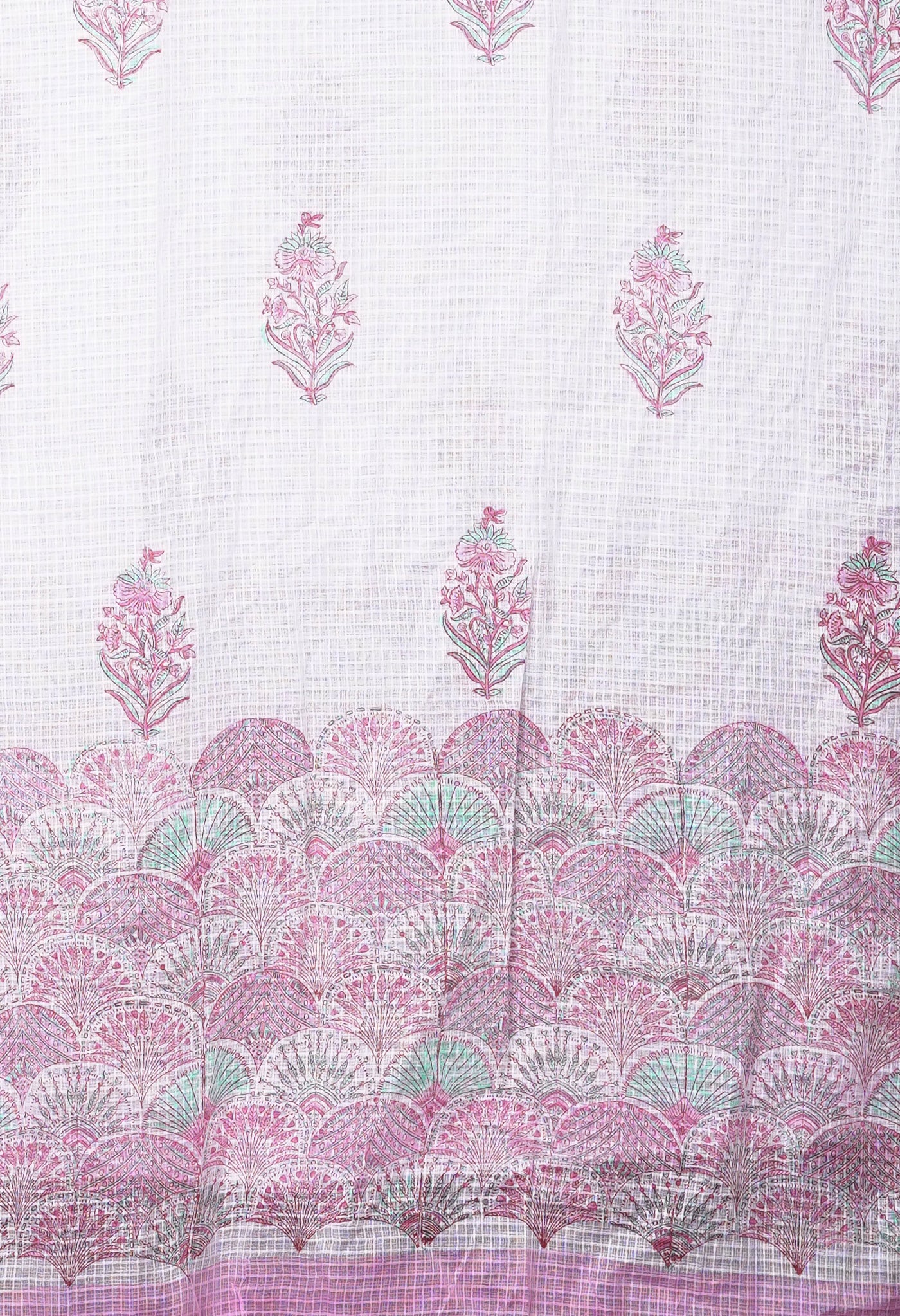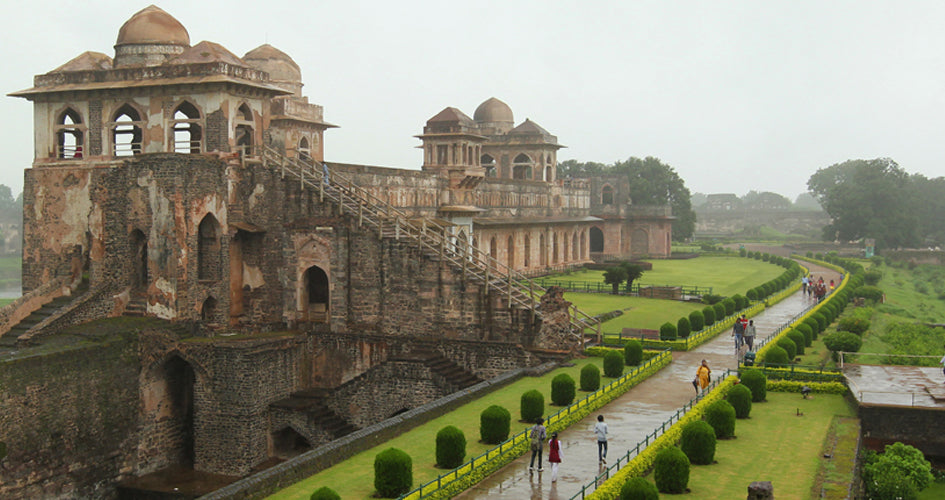
Located in the Lap of Vindhyas – Visit Bagh , the Land of Ethereal Hand Block Prints
Heard of Bagh? Small obscure village in Madhya Pradesh, not much heard of in general. Only it happens to be the hub of a unique kind of block printed handloom fabrics. My friend, a Manager in a Textiles factory wanted to visit the place. He talked of four days at that place before he could return. I had been there once or twice and knew that unless he was going to be exploring the Bagh Handlooms in depth he would be maybe bored to death or re-scheduling his stay.

Bagh as a place is known for two things. This village in the Dhar district of Madhya Pradesh, India has the distinction of being one of the hubs for unique, amazingly captivating block printed fabrics not found anywhere else in India. Bagh has only one place of note for tourists to explore - the ancient Buddhist caves known as the Bagh Caves.
The inimitable fascinating block prints of Bagh
Bagh is a unique style of block printing on handloom sarees, fabrics, the name coming from its origin in the current form in Bagh village of Dhar district, Madhya Pradesh, India. The majority of the migrants had lost hope when they saw that modern day prints were popular and preferred and what they processed did not sell much. The art has taken birth and evolved through the efforts of a handful of migrants who saw it fit to stick to what they knew of an ancient art of traditional printing and give it a modern flip that would carve out a place of its own and not succumb to the pressures of current day designs.
In a brave move the concept was radically altered. 200 year and 300 year old blocks which were based on traditional motifs that had been inspired by the 1500 year old cave paintings of nearby regions were printed on wonderfully woven cotton fabrics for a start.

Never before had such beautiful, exotic and captivating designs been seen on fabrics and by the use of these fast colors the Bagh Prints got to be noticed and accepted as a new form of adorning fabrics. In order to prove a point that handloom fabrics were well-suited for such prints, 1230 different blocks were printed on a single bed cover with imagination and logic that fetched a National Award and nationwide appreciation. Today Bagh side by side incorporates modern day designs, involving geometrical patterns, captivating bootis, floral scapes and what not, to keep in the race.

And what does the visitor to Bagh Village do, when fabrics are not a passion?
Taking in the sights close to Bagh
For a start, a visit to the ancient Buddhist caves would do fine. Bagh Caves are brilliantly hollowed-out artificial structures in stone that resemble caves formed in nature. Splendid examples of architecture, they find parallel only in the famous Ajanta caves. Master craftsmen of ancient times carved out nine caves among the southern slopes of the Vindhyas in Kukshi tehsil of Dhar district, in the perpendicular rock face of a hill on the far bank of the Baghini river. Of these Buddhist inspired ‘viharas’ or monasteries, only five out of the original nine caves survived.

Legend has it that much before their discovery tigers used to make it their lair, hence the term Bagh or ‘tiger’ given to these caves. Later they also became residential places, meditation centres and religious congregation sites for Buddhist monks. Buddhist scriptures, other facets of Buddha have been found in these caves.
But even more of a draw, are the paintings done by master artists of ancient times. Pictorial art of a kind never seen before adorn the walls and ceiling even now but have been reduced to faded colors and disfigured subject matters. Yet they give a good idea of what it could have been like in their original glory. A small chamber at the back of each cave serves as a prayer hall. Cave No.4 has from long been considered the Rang Mahal or Palace of Colors.

But what then after the Buddhist caves are explored?
Bagh is also close to two major tourist attractions – Dhar City and Mandu, which are roughly 85 Kms from it.
What does one get to see in Mandu?
Mandu is close to 85 Km from Bagh and full of visual treats for the tourist. Known as the The City of Joy by Mughal rulers, a plateau overlooking scenic plains, it has very fine examples of Afghan architecture. There are plenty of palaces, pavilions, mansions, tombs and mosques that overlook rushing torrents of water with plenty of greenery especially during the rainy season.

Gateways – 45 km of parapet walls with 12 gateways encircle Mandu, Delhi Darwaza being the principal gateway to the fortress city. Rampool Darwaza, Jehangir Gate, Tarapur Gate are some of the noted gateways.
Jahaz Mahal – is a 120 metre long “Ship Palace” that is built between two artificial lakes Munj Talab and Kapur Talab. Known for its open pavilions, overhanging balconies, this stone construction seems like a recreation retreat of a royal ship. On moonlit nights, the sight from the adjoining Taveli Mahal shows the silhouette of the building, the tiny domes and minarets on the terrace as a wondrous spectacle that remains etched in memory.

Hindola Mahal – the Swinging Palace built by Sultan Ghiasuddin Khilji, got its name from the sloping walls that look like the trestle supports of a swing. It was also an audience hall for the King of Mandu. In between some of the buildings is the well called Champa Baoli that gets connected to underground rooms where hot and cold water arrangements were made.
Other attractions are the Tomb of Hoshang Shah, a white marble tomb of extraordinary beauty and construction. A beautiful dome, latticework in marble, porticos, courts and towers that started when he was alive, got completed five years after his death in 1440. Two centuries later when Emperor Shahjehan visited this place, he got the inspiration from the work for his own TajMahal.

Jami Masjid
The miniature inspired by the majestic mosque at Damascus, Jami Masjid was planned on a grand scale. A huge plinth, a huge domed porch projecting in the centre, has other domes imposing in the background and there are spaces with intermediate domes and imposing structures but simple in design. The great court of the mosque is enclosed on all sides by huge colonnades with a rich and pleasing variety in the arrangement of arches, pillars, number of bays, and in the rows of domes above.

Roopmati's Pavillion
The immortal love saga of Baz Bahadur and Rani Roopmati has a pavilion in Afghan style of architecture devoted to it. Two high tombs from where the movements of the enemy could be observed impose. But the Rani used the pavilion for her religious rituals for the distant Narmada river.

Mandu could be taken in within one and a half to two days. Then one could proceed to Dhar but one would have to come back to Dhar and then move in another direction but almost the same distance as was to Mandu.
The sights of Dhar offer:
Phadke Museum
Dhar has a studio which has its history but offers learning and has many interesting sculptures lying in a closet. The Maharaja of Dhar was a patron of arts. He invited several artists to his kingdom during the first half of the twentieth century. Raghunath Krishna Phadke was then a renowned sculpturist in Mumbai who accepted the invitation and started a studio in Dhar. The studio has several works of Mr. Phadke and his students. Academically perfect, these sculptures have caught the personality of the model in a royal way. You would find sculptures of Mahatma Gandhi, Jawaharlal Nehru, Bal Gangadhar Tilak, Ram Mohan Roy and all those recognizable figures from our national movement. There are portrait sculptures of Kings, queens, local chieftains and spiritual leaders.
Bhoj Shala
In the Kamal Maula mosque at Dhar, an inscription in Sanskrit and Prakrit, from the time of Arjunavarman was found, which had a portion of the drama composed by Madana, the king’s preceptor. There was also mention of the play having been performed before the king in the temple of Saraswati. This was inscribed so beautifully that it was displayed at the entrance in 1903 by K.K.Lele, Superintendent of Education in the princely state of Dhar. The inscriptions akin to the writings of Raja Bhoj the great king and author of a number of works in poetry and grammar, made him name the building as Bhoj Shala.

Lath Masjid
Lath Masjid also known as 'Pillar Mosque', is to the south of the town like a tomb. It derives its name from a pillar made of iron which is supposed to have been set up in the 11th century. The pillar, which was nearly 13.2 m high according to the most recent assessment, is fallen and broken; the three surviving parts are displayed on a small platform outside the mosque. It carries a later inscription recording a visit of the Mughal emperor Akbar in 1598 while on a campaign towards the Deccan. The pillar's original stone footing is also displayed nearby.

Jheera Bagh Palace
Outside the town, off the road to Mallu, the Pawars built a palace at Hazira Bagh from the 1860s. Known as the Jheera Bagh Palace and presently run as a heritage hotel, the complex was renovated by Maharaja Anand Rao Pawar IV in the 1940s. Graciously designed in an unpretentious art deco style, it is one of the most elegant and forward-looking examples of early modern architecture in north India.

In passing - Unnati Silks and the Bagh Printed sarees
Bagh Prints are seen on the Maheshwari handloom cotton sarees, georgette and chiffon fabrics as well as the Chanderi cotton sarees and sico sarees. Single design motifs are printed on the field, the borders are matched with same color different shade or golden zari, but the pallu or end piece is like a designer affair. There are several block prints of different designs combined in a pattern and interspersed with large booti sections. Plenty of colors, lots of designer fare!
 [vc_btn title="Buy Online Handloom Bagh Printed Cotton Sarees" color="warning" align="center" link="url:https%3A%2F%2Fwww.unnatisilks.com%2Fsarees-online%2Fby-work-sarees%2Fbagh-printed-sarees.html||target:%20_blank"][vc_column_text]
[vc_btn title="Buy Online Handloom Bagh Printed Cotton Sarees" color="warning" align="center" link="url:https%3A%2F%2Fwww.unnatisilks.com%2Fsarees-online%2Fby-work-sarees%2Fbagh-printed-sarees.html||target:%20_blank"][vc_column_text]Bagh Prints are also seen on the Maheshwari handloom cotton salwar kameez where the kameez has single design motifs printed on the field, the borders are matched with same color but different shade or golden zari. The salwar is also like a designer affair. There are several block prints of different designs combined in a pattern with the kameez, salwar and dupatta all having their own individual designs or block prints. A lot of colors, plenty of designer fare in vivid, vibrant designs to hold the gaze, provide a style.
 [/vc_column_text][vc_btn title="Shop Online Unstitched Bagh Printed Salwar Suits " color="warning" align="center" link="url:https%3A%2F%2Fwww.unnatisilks.com%2Fsalwar-kameez-online%2Fby-style-salwar-kameez%2Fmaheshwari-printed-salwar-suits.html||target:%20_blank"]
[/vc_column_text][vc_btn title="Shop Online Unstitched Bagh Printed Salwar Suits " color="warning" align="center" link="url:https%3A%2F%2Fwww.unnatisilks.com%2Fsalwar-kameez-online%2Fby-style-salwar-kameez%2Fmaheshwari-printed-salwar-suits.html||target:%20_blank"]
